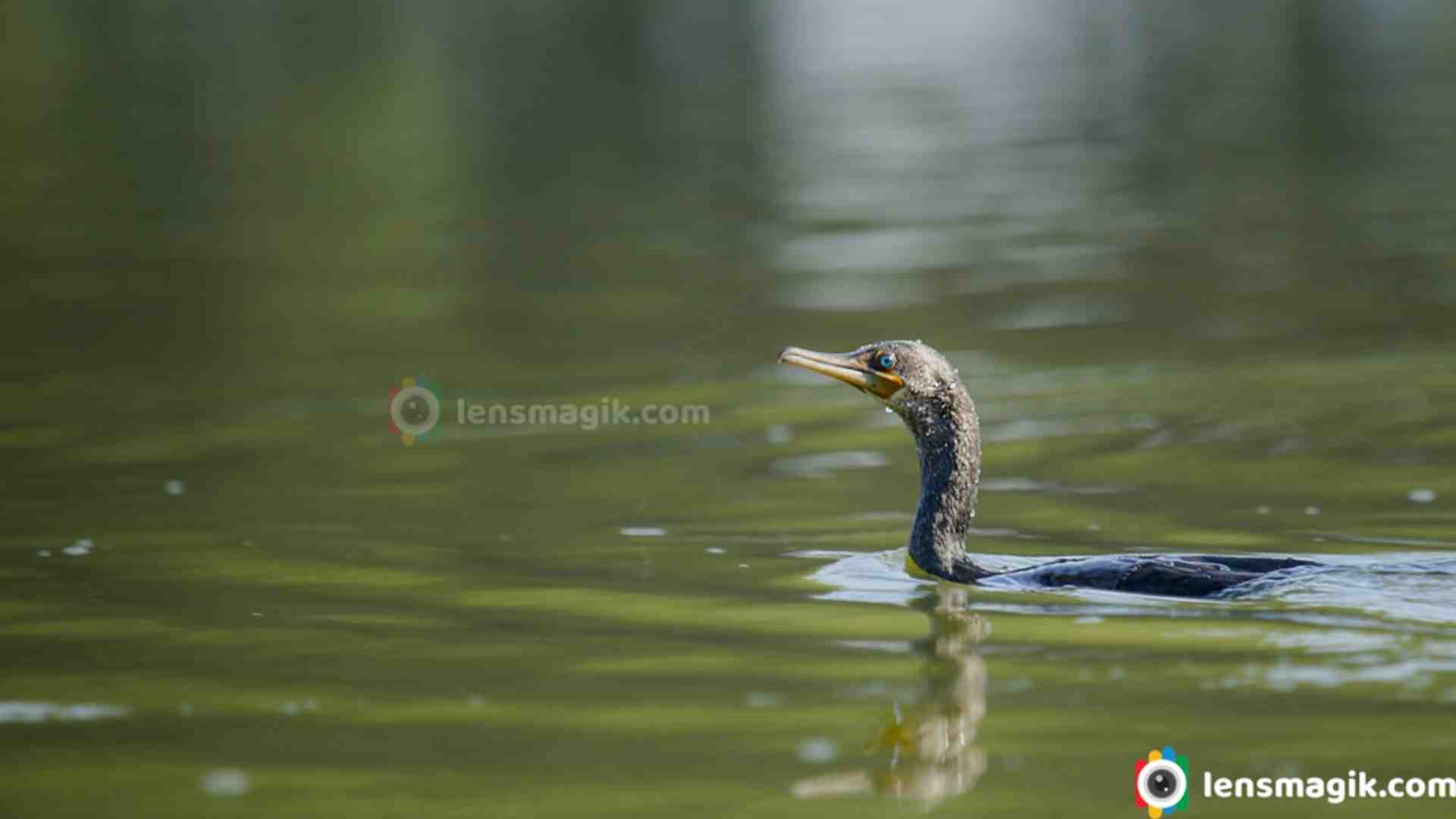
Little Cormorant is a member of cormorant family. It is widely distributed in India. It is found in Sri Lanka, All over India, Bangladesh, Myanmar, Pakistan and lower Nepal. They generally found at pond, lake and wetlands near agriculture and village areas. In Gujarat they found at many places like Thol Bird Sanctuary, Nal Sarovar Sanctuary, Velavadar Sanctuary and also some wetlands near Little rann of Kutch and many other areas. They are good diver in the water and also famous for fishing expert dive into water and catch the fish. In Gujarat the best place to see Little Cormorant is Thol Bird Sanctuary and Nal Sarovar Sanctuary.
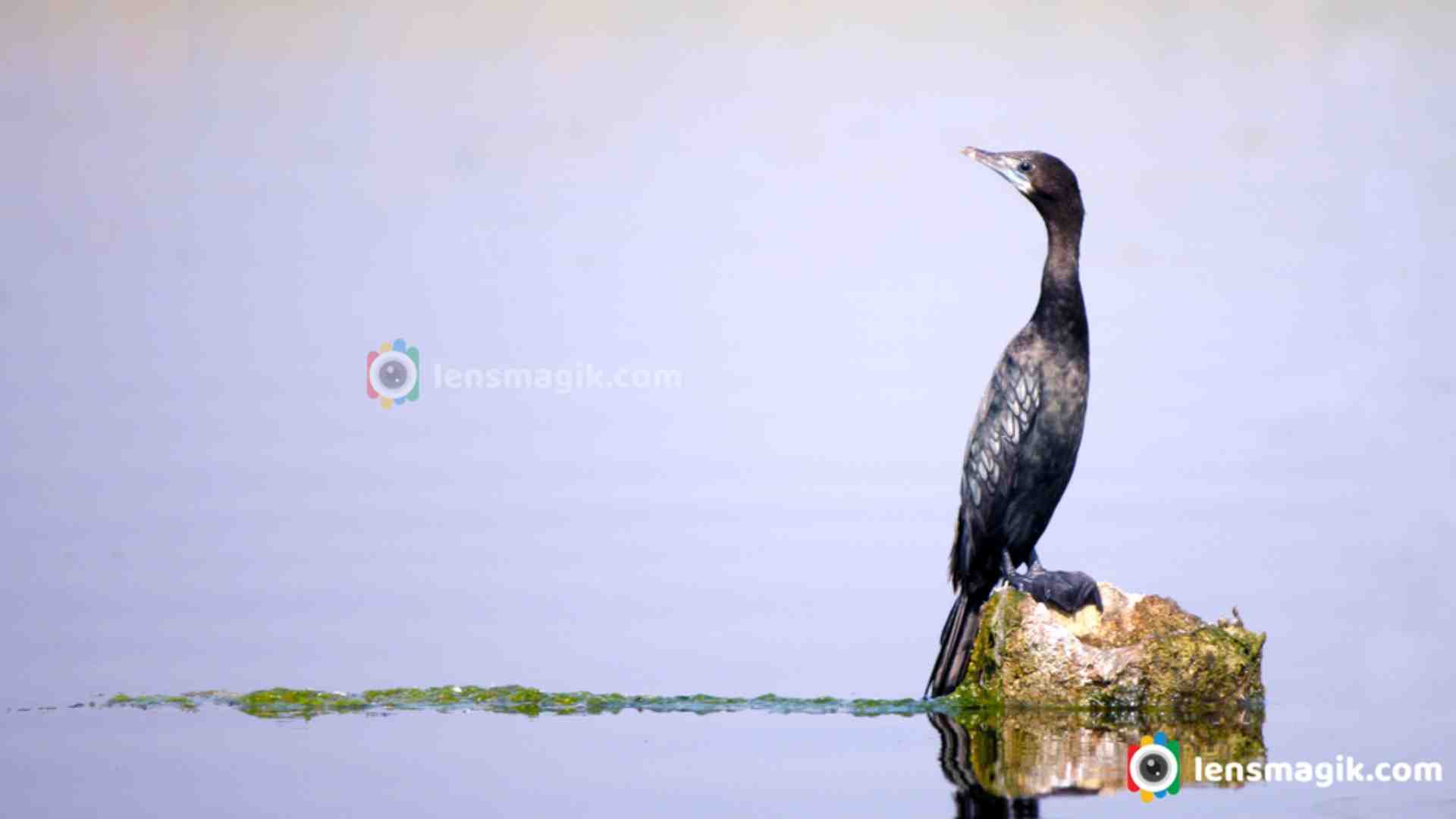
Description of Little Cormorant :
- Size of Little cormorant is smaller than Indian Cormorant. The Length of little cormorant is around 50 cm.
- The bill of little cormorant is shorter and stouter compared to Indian Cormorant.
- Color of Little Cormorant is black. There is some variation during breeding and plumage in different season. Breeding adult have white spot on their face.
- The main diet of Little cormorant is Fish. They can dive into the water and catch the fish underwater.
- Little Cormorant found in Inland and Coastal water bodies including ponds, lakes, rivers and coastal areas.
- They generally seen in small groups but can also be solitary.
- Breeding season for Cormorant is July to September in Pakistan and in India season is November to February.
- Both male and female built nest together. It will take two weeks to built nest.
- They lay eggs in interval of two days around two to six eggs.
- Incubation period around 15-20 days. After that eggs hatched. After one month young birds are free to leave nest.
- The call of Little Cormorant is ah-ah-ah and kok-kok-kok .
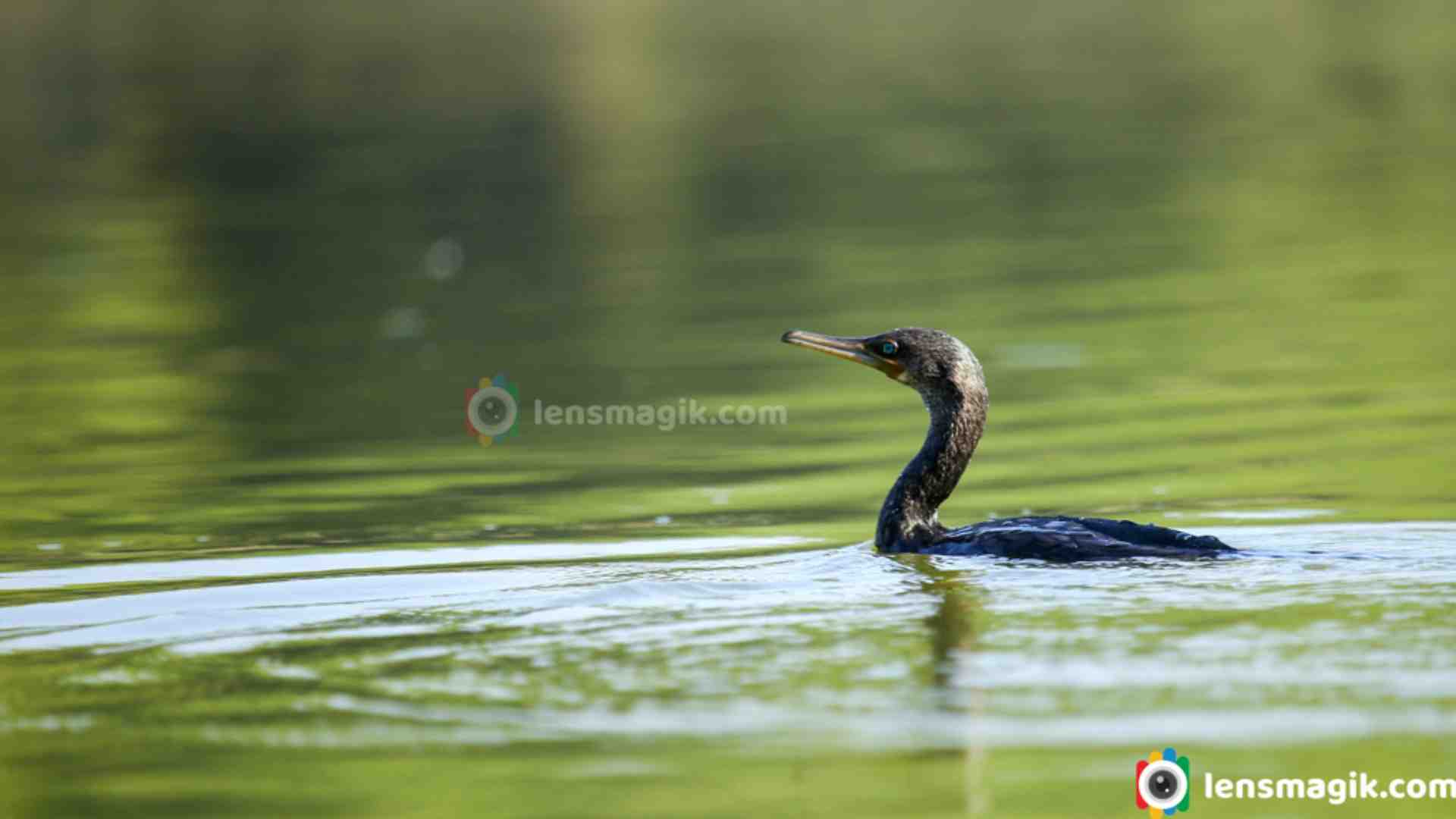
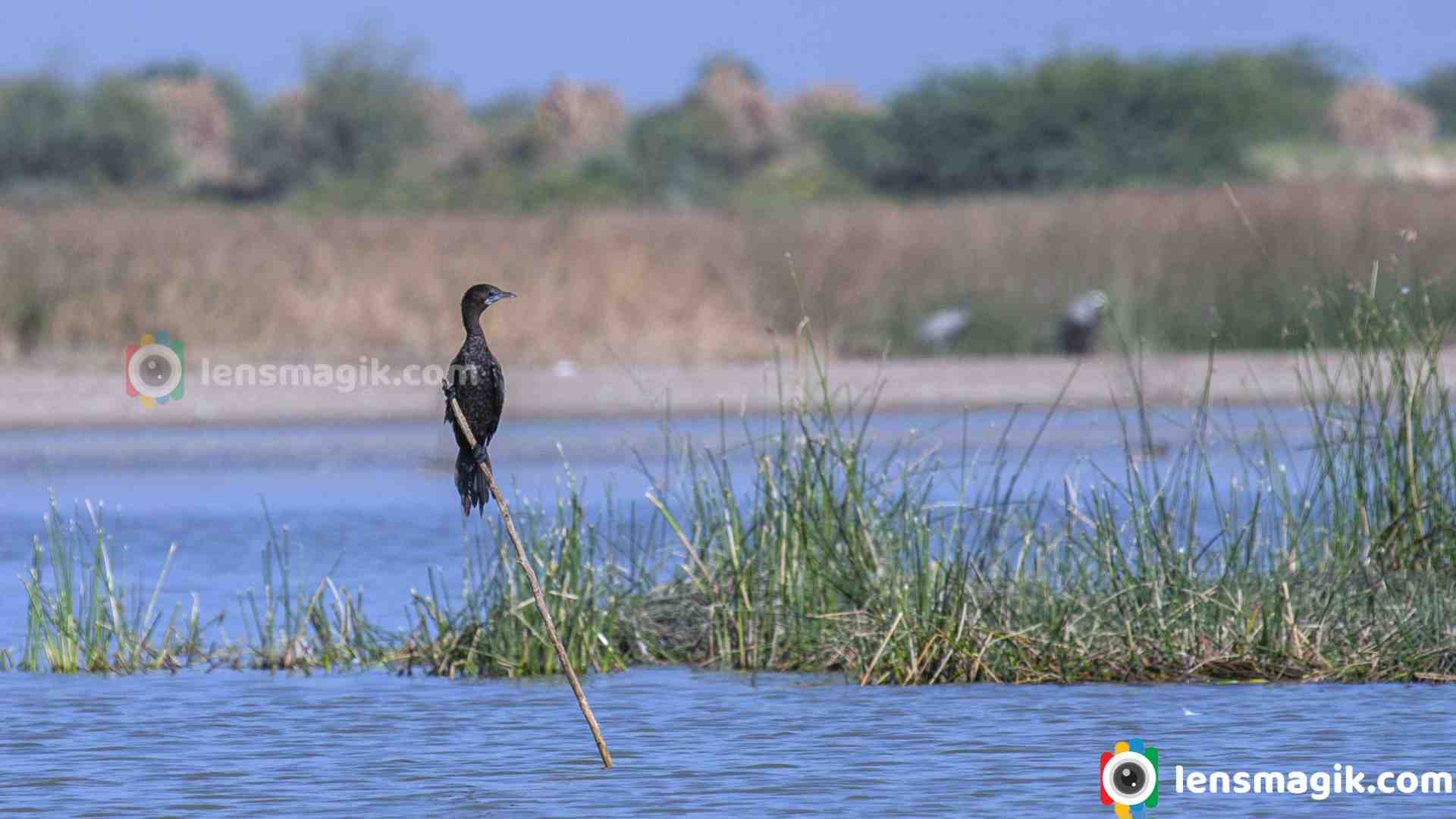
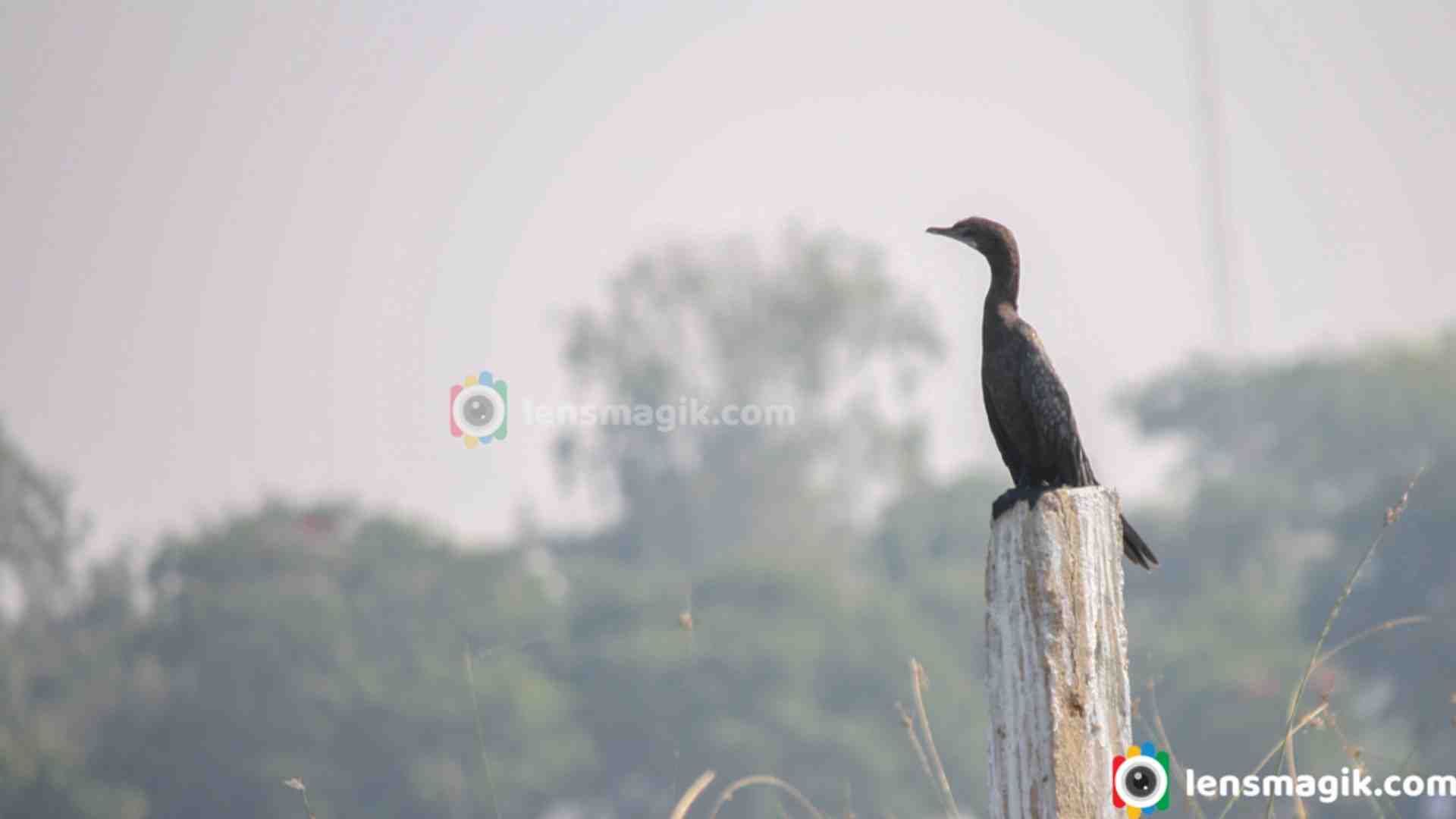
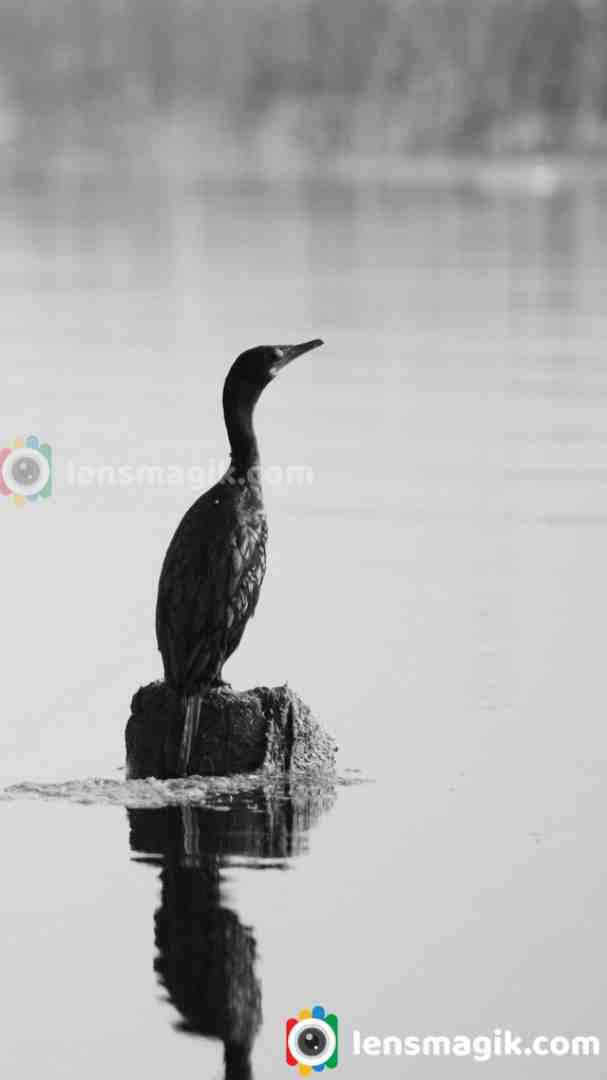
Little Cormorant is widely spread in India. You can easily find them near pond, lake and many wetland areas . You can easily identify little cormorant as its color is full black and its beak. Also they stand on tree trunk or on tree with spreading their wings for a long time. After waiting for sometimes little cormorant dive into water and catch fish and come out from water. Little cormorant is famous for its hunting skill. It is resident bird in India. Also Greater Flamingo, Great White Pelican, Bar Headed Goose, Eurasian Spoonbill, Many Ducks and many migratory birds found at Nalsarovar and Thol Bird sanctuary.
Location : Thol Bird Sanctuary, Little Rann of Kutch, Nal Sarovar Sanctuary
Camera used : Canon 1000 D, Canon 80 D, Canon 6 D, Canon 100-400 mm lens
Read more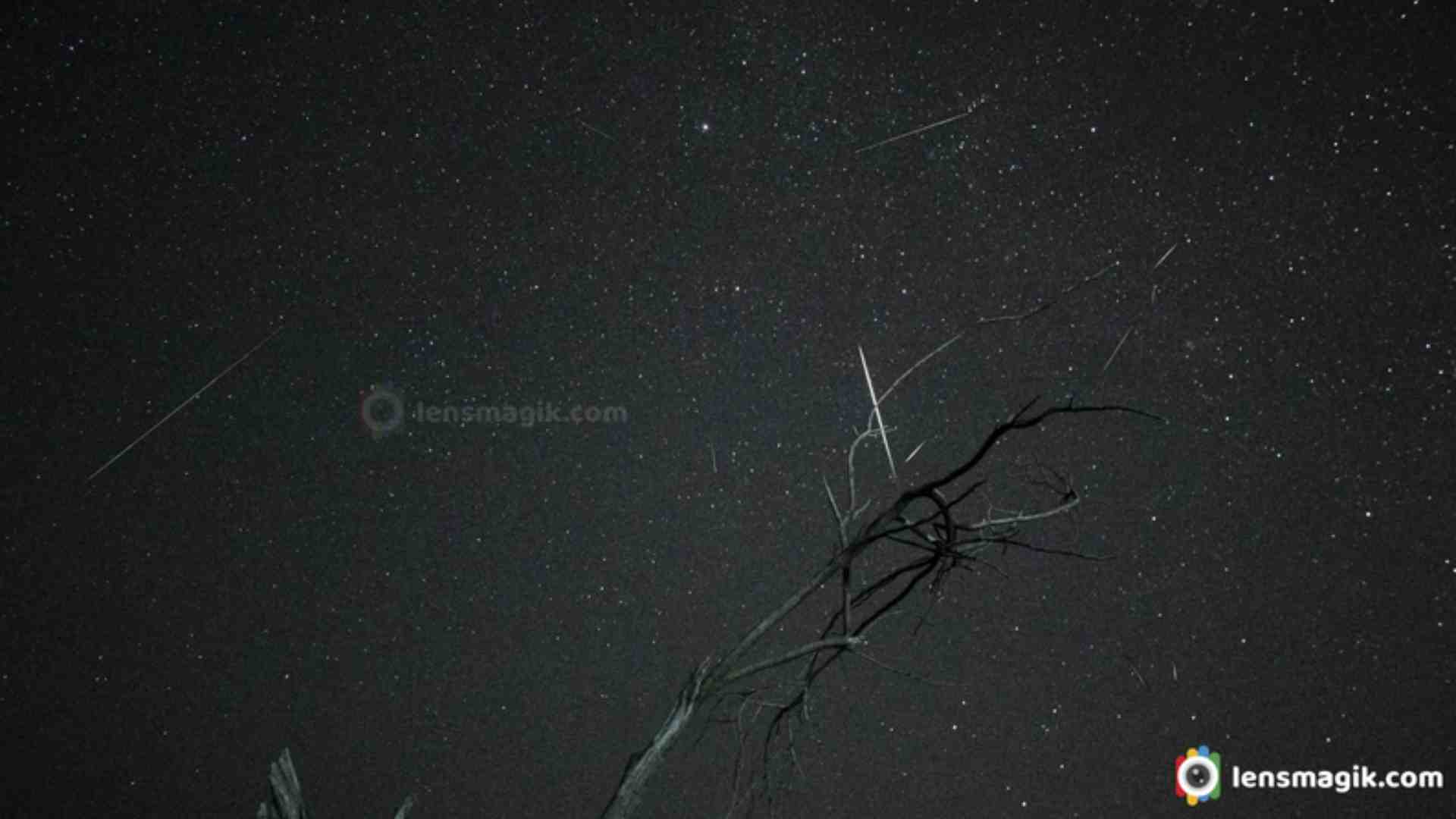
Meteor is a piece of rock in the sky. It is caused by meteoroid crashing through the Earth’s atmosphere. It looks like streak of light in the sky when it comes in the Earth’s atmosphere. Millions of meteors occur in the sky. They are looks like shooting star. As per the size of meteor you can see vary of streak of light in the sky. Big meteor make big streak of light and small meteor make small streak of light.
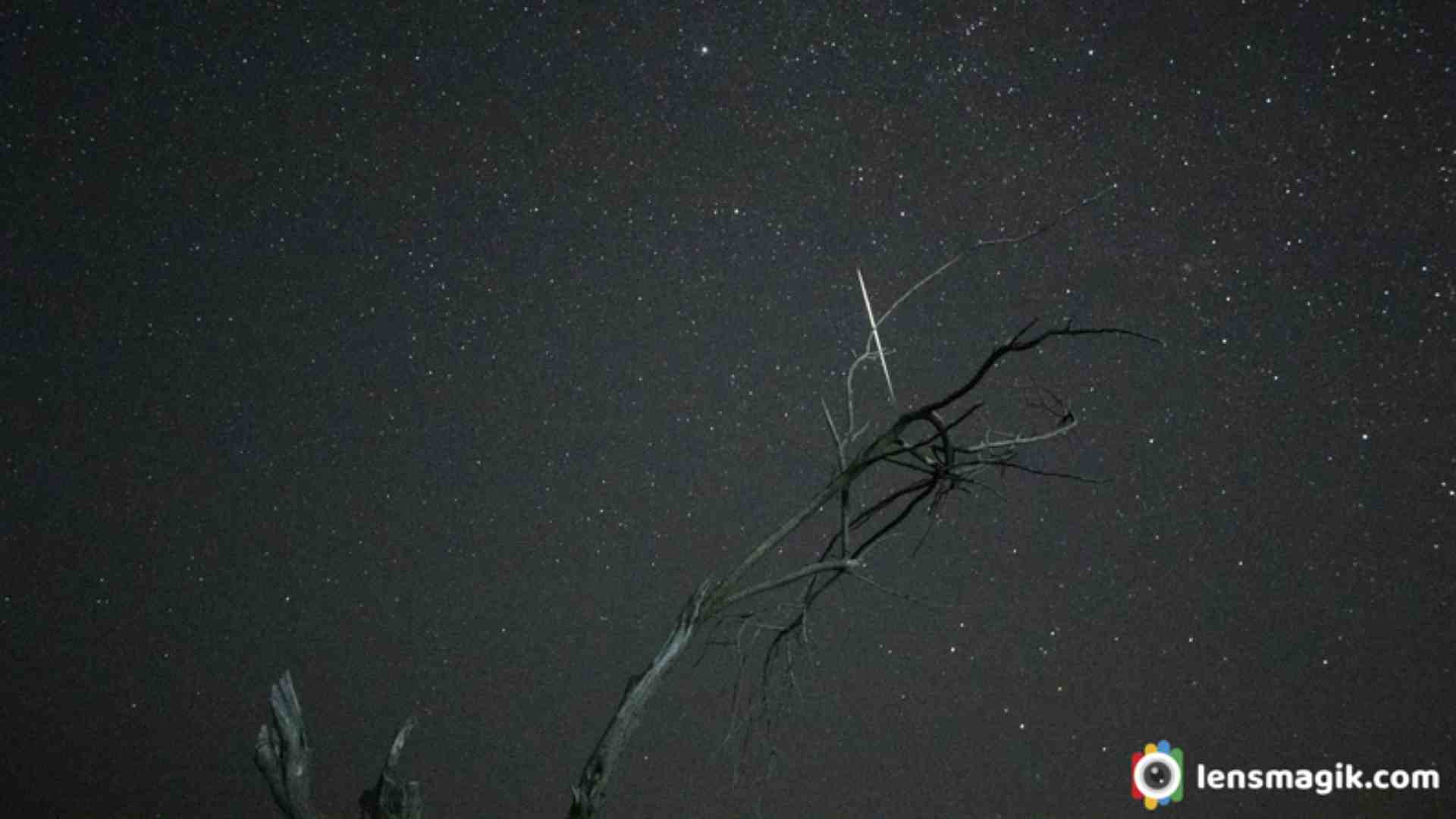
Geminids Meteor shower :
Meteors come from same place in the sky which is called Radiant. Meteors which appear to radiate from constellation Gemini is called Geminids Meteor Shower. Geminids Meteor shower appears in December every year. Geminids Meteoroids are 1000 years old. Geminids Meteor shower caused by object 3200 Phaethon . Geminids are fast and bright and also it is most favorite meteor shower among all meteor shower. Geminids meteor shower rises from Northeast side and can bring 30-40 at minimum side and 100 -110 at maximum side per hour. The maximum visible of meteors are on peak day of it around 100-120 meteors per hour. Geminids meteor shower rising time around 7-9 pm and its on peak at 2 AM to early morning . At 2 AM you can see maximum meteors of Geminids.
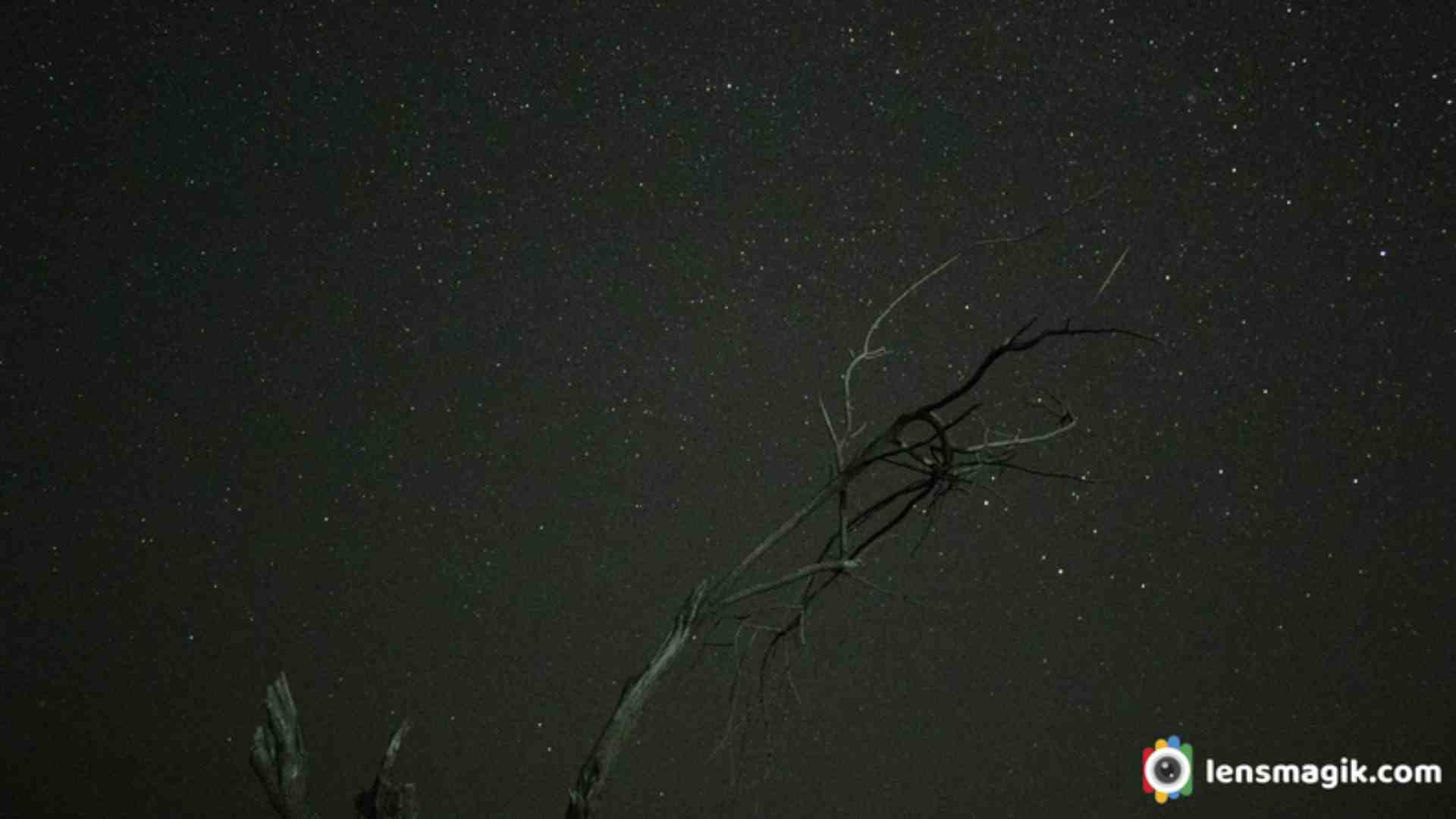
Time-Laps Photography of Geminids Meteor Shower :
To see meteors we need a dark sky and also low pollution area. First we need to choose best location for Astro photography or star trail photography or milky way photography or Meteor shower photography. We need to choose date when Geminids meteor is on peak . On peak date there is more chance to capture meteors in your camera. Choose an object in foreground for time-laps photography. Set up your camera on tripod with Interval meter. Focus on subject in foreground which you choose or make your camera lens focus on infinity. I had taken more than 200 photos in first frame and 150 photos in second frame.
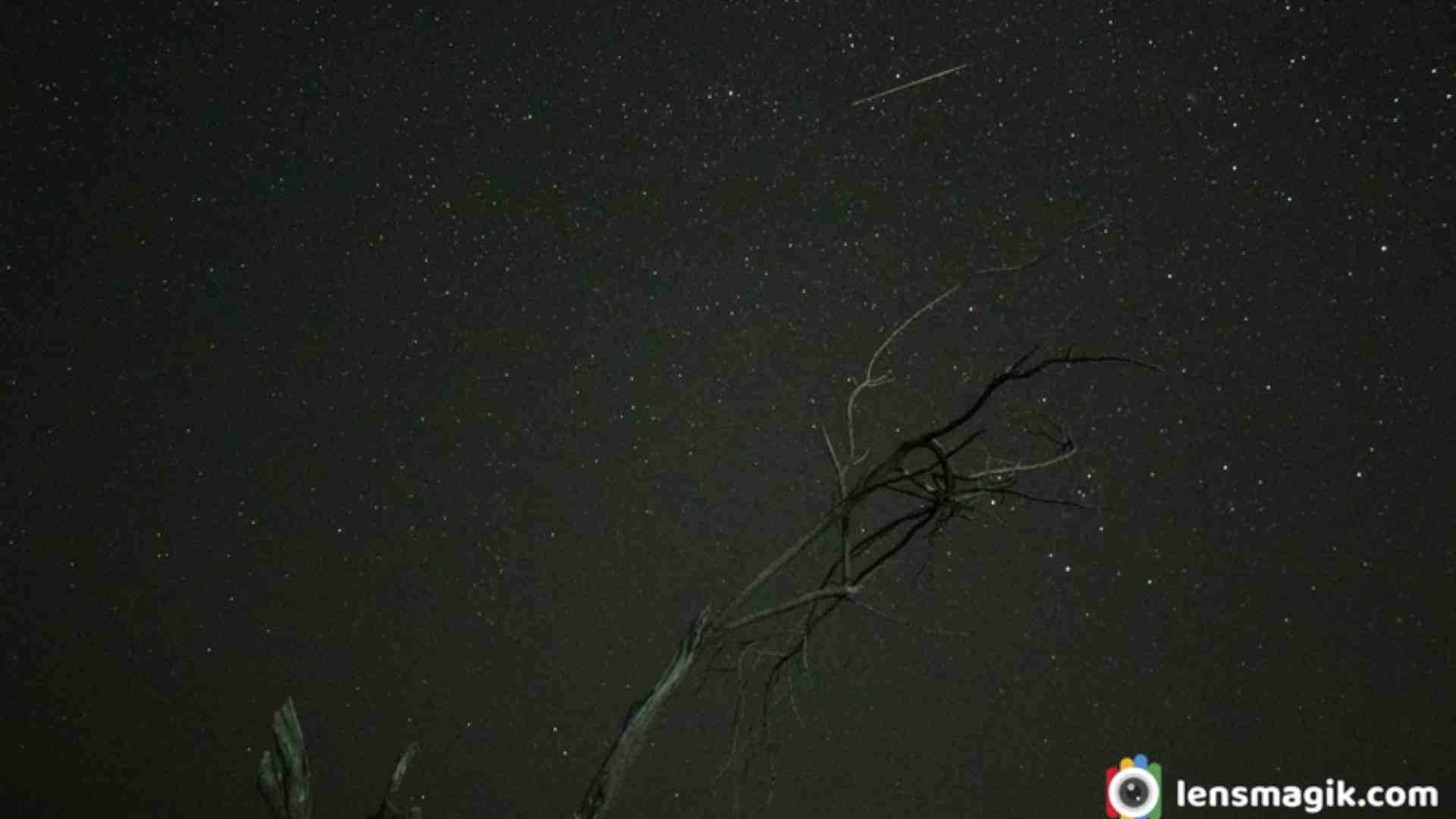
Time-Laps Settings for Meteor shower
- Set Aperture minimum as your lens supports. Best lens for star photography is 10mm, 14mm which lenses support low aperture like F/1.8 or F/2.8.
- Select manual focus for lens.
- Set interval meter shutter speed 20-25 seconds. More than 25 seconds your shutter speed may create star trail so set it to 20 or 25 seconds max.
- Set interval time around 20-25 seconds. Interval time you can decrease if you choose long exposure noise reduction off in your camera but I suggest to select interval time minimum 20 seconds.
- Set frames approx. 500 frames
- Set ISO in your camera 1600-3200 depending on your camera noise. For low noise full frame camera is the best option.
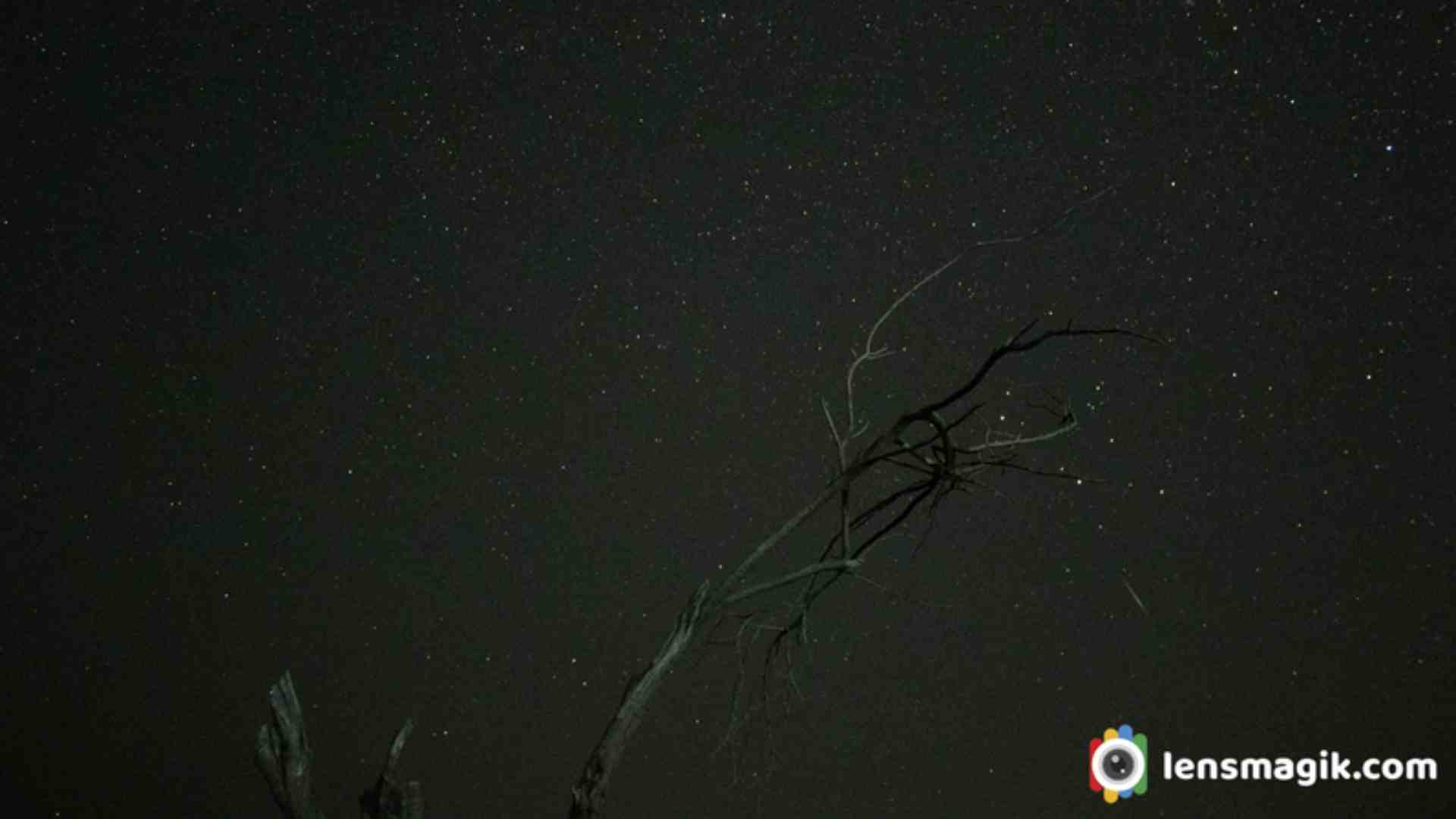
Best dark area finder app is
https://darksitefinder.com/maps/world.html#4/39.00/-98.00
https://www.darkskymap.com/nightSkyBrightness
For time and date of meteor shower visit
https://www.timeanddate.com/astronomy/meteor-shower/
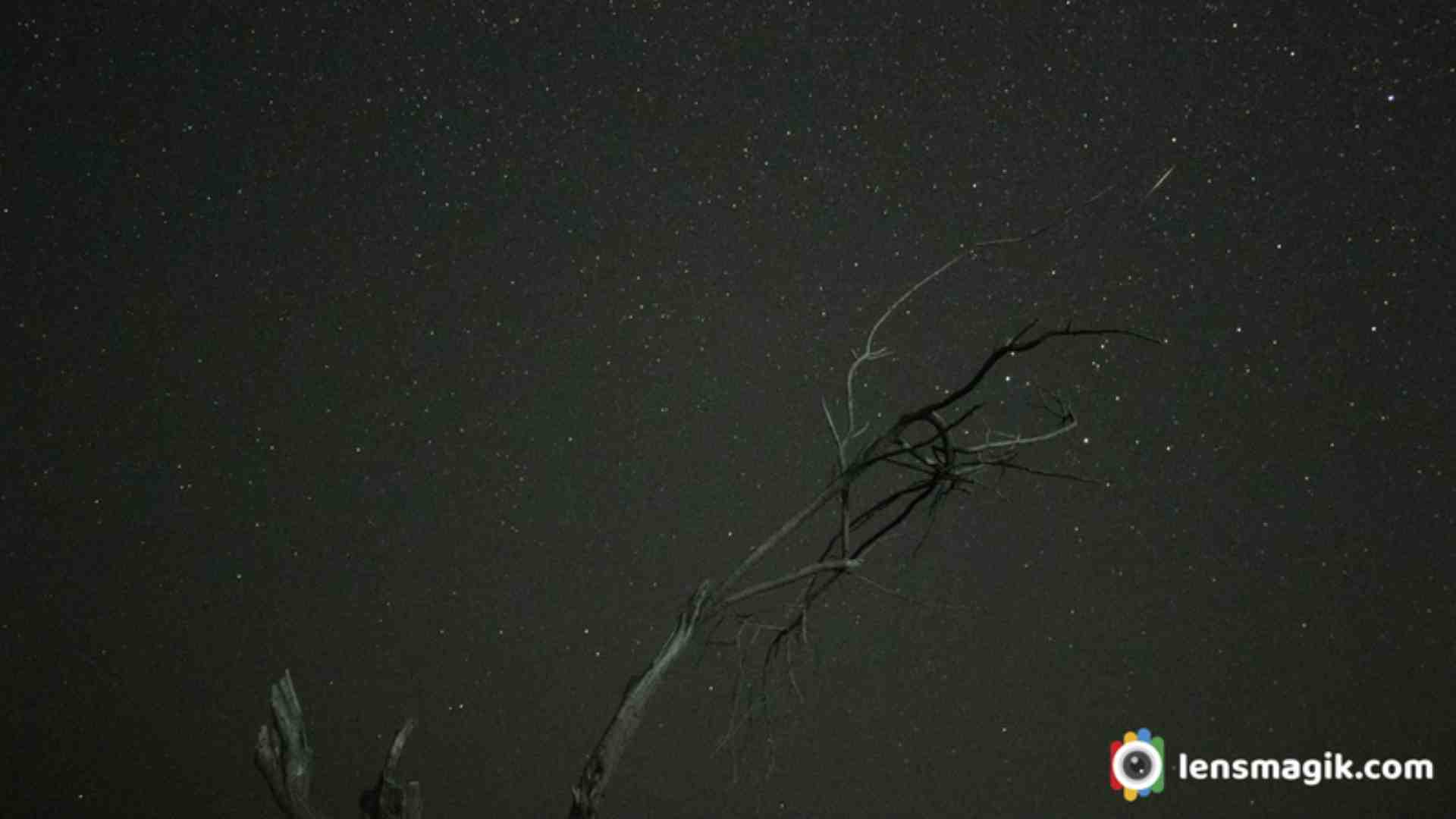
Post Processing Time-laps photos
After taking more than 500 frames in time-laps you need to see them one by one and check how many meteors are captured in the frames. Those frames in which you captured meteors merge them in 1 frame in photoshop or lightroom.
Also you can make a time-laps video in many software with selecting all your frames. I made video in Picasa software which made time-laps video easily. Only JPEG files selected in picasa so make sure your frames may in JPEG or convert in JPEG.
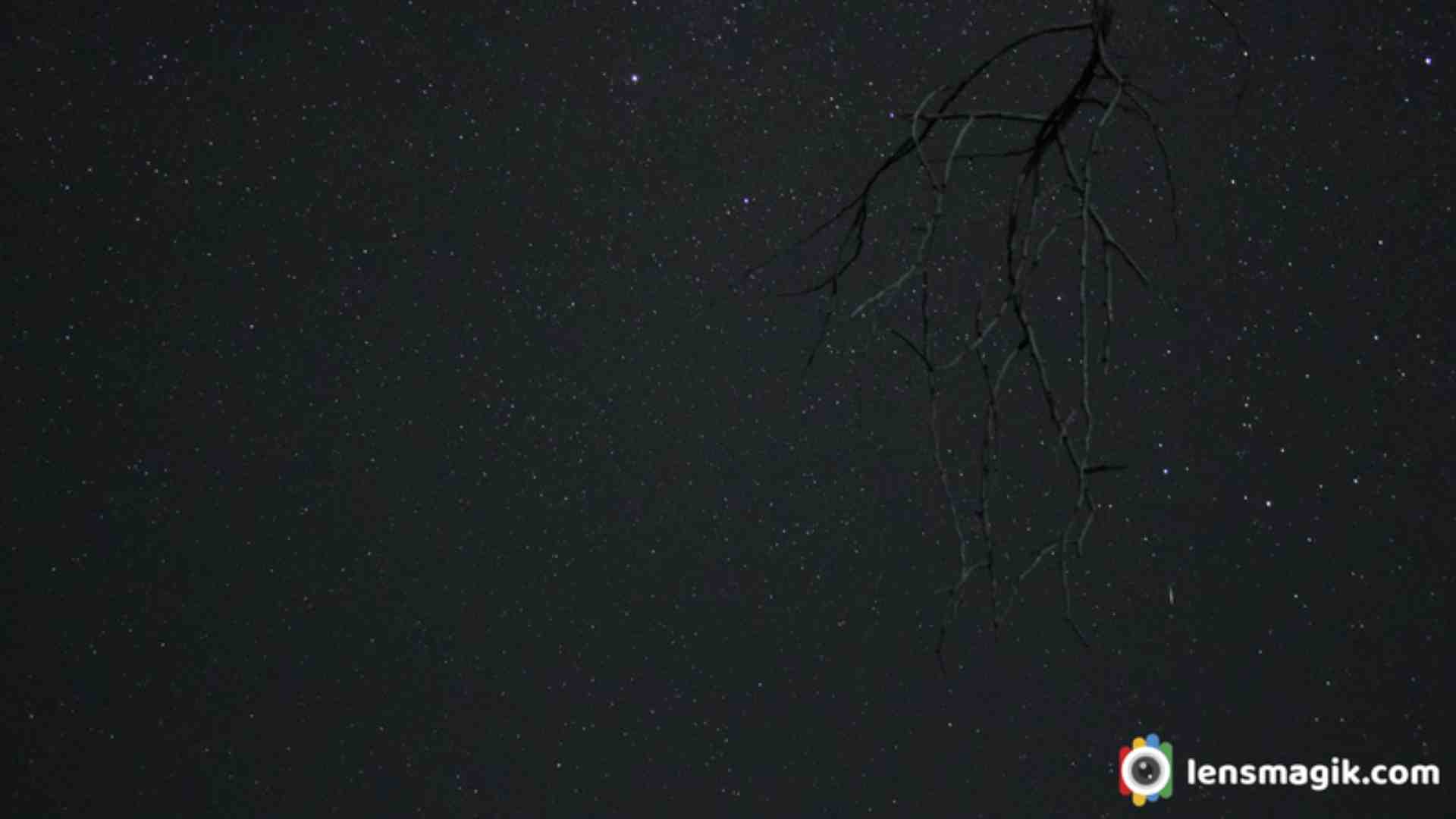
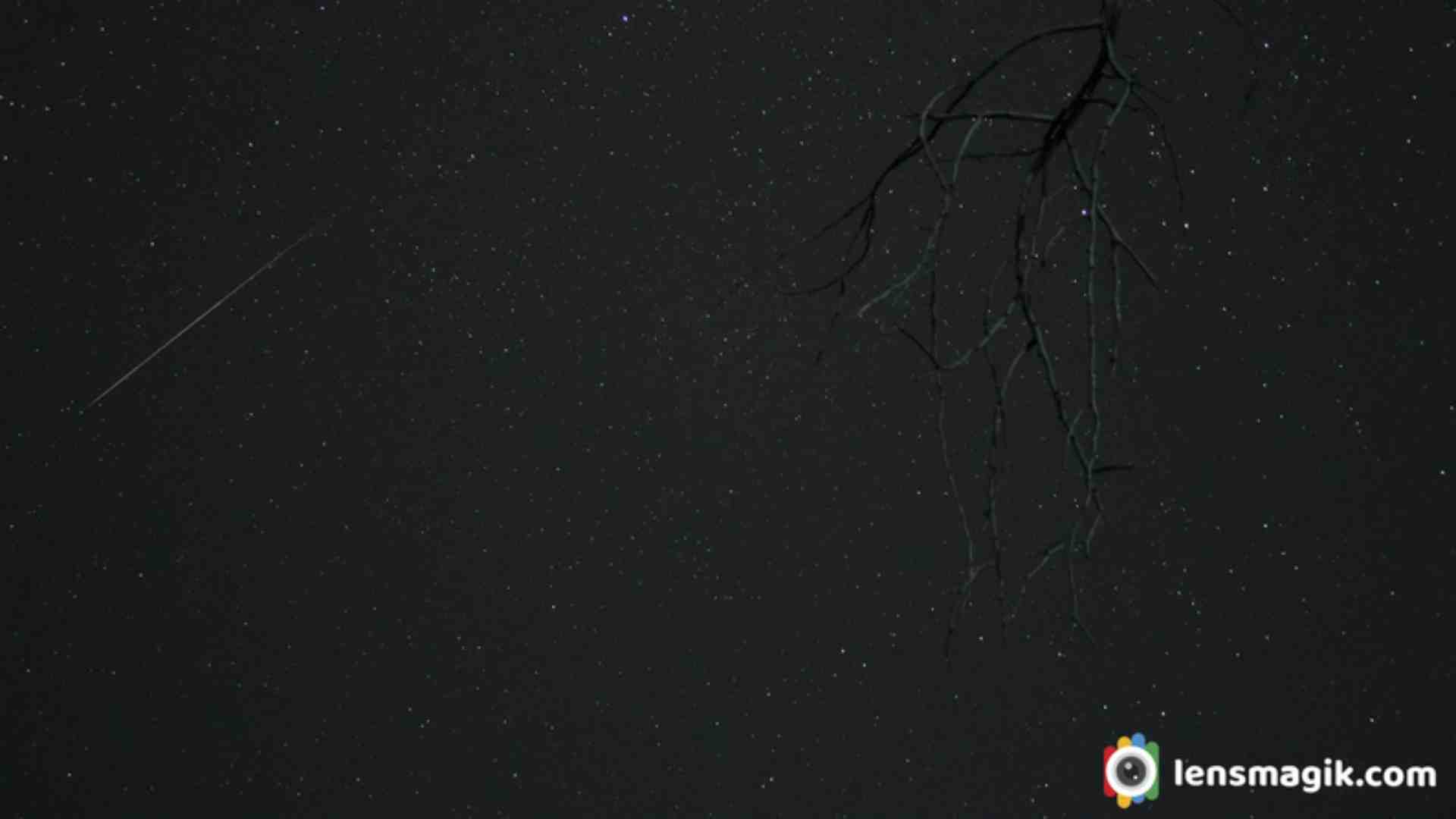
Geminids meteor shower is one of the best meteor shower among all meteor shower. In India you can see Geminids meteor shower very clear from dark areas. In Gujarat Little Rann of Kutch and Rann of Kutch area is best for Astro photography. Also Some areas near polo forest, Jessore Sanctuary and Dahod are good spots for night photography. There are also Perseids and Leonids meteor shower also most popular. But in India Geminids meteor shower is the best visible. Perseids meteor shower is occur in August but in India there is a monsoon season during perseids meteor shower. So i guess for India Geminids meteor shower is the best
Gear Used : Canon 80D, Canon 18-55 mm lens
Read more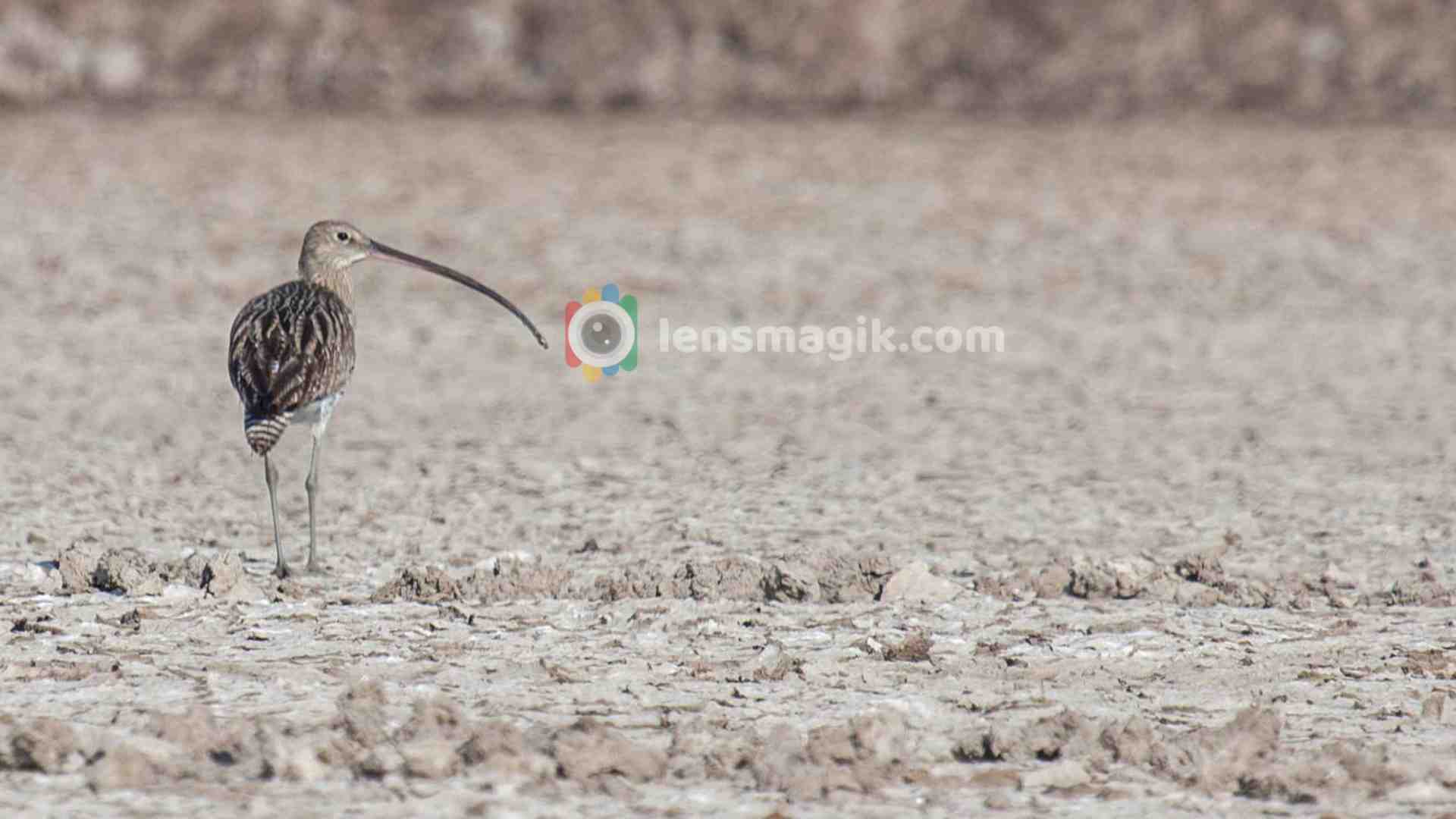
Eurasian Curlew is also known as a Common Curlew. It is a large wader bird in family Scolopacidae. During winter it found in Africa, South Asia and southern Europe areas. In Gujarat it is found in Little rann of kutch and Great Rann of Kutch areas. I found it at Little rann of kutch during morning safari. It was first recorded in 1377 in Langland. It is found near to scrubby riverbeds , groves and thorn forests. Eurasian Curlew is restricted to Bhutan, Bangladesh, India, Myanmar, Nepal, Shri Lanka, Thailand and Vietnam.
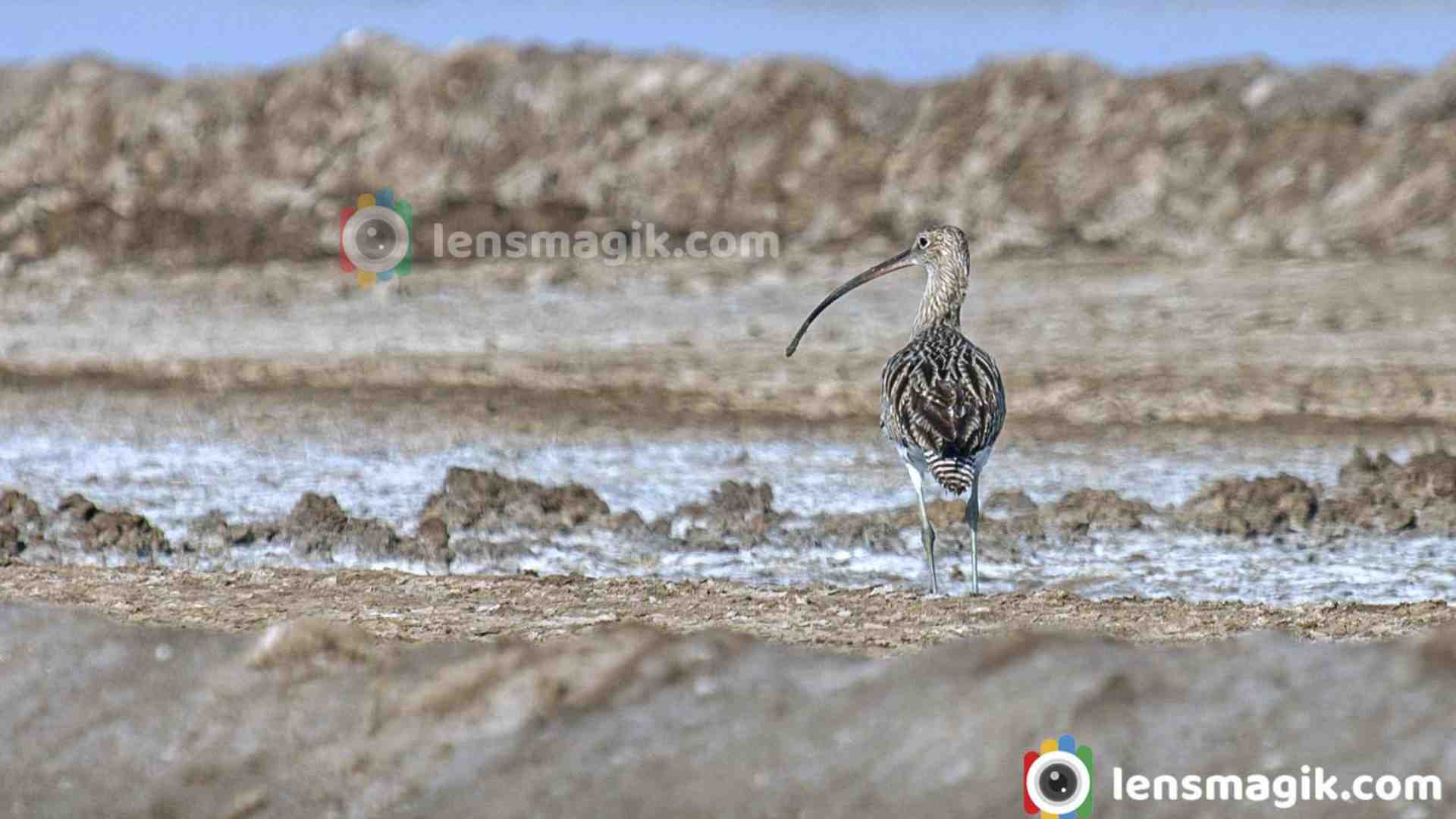
Facts about Eurasian Curlew :
- Eurasian Curlew is the largest wader in its range.
- Its length is around 50-60 cm . Wingspan is around 90-105 cm. Weight of Eurasian Curlew is around 400 - 1350 gm approx.
- Its color is mainly greyish brown, greyish blue leg, white back and a very long and curve bill .
- The bill is the longest in adult female than male.
- Eurasian curlew lay 4 eggs and generally lay in april or may. They incubate eggs about a month.
- It has been found that eurasian curlew built their nest near to Common Kestrel nest for protecting from Predators.
- Eurasian curlew feed small invertebrates and crabs, earthworms too.
- The population of Eurasian Curlew is declining in very huge rate. It is now in the Nearest Threatened list in IUCN list in 2008.
- In last 25 years eurasian curlew population decline 50% in England and Scotland and 90% in Ireland .
Eurasian Curlew is a migratory bird in Gujarat during winter season. It is found in Little Rann of Kutch during november to march . Little rann of kutch is also famous for migratory raptors and eagles. Also lots of birds like Greater Flamingo, Falcons, Eagles, Pelicans, Short Eared Owl, Desert Fox and a Wild Ass . Indian Wild ass is found only in Gujarat in Kutch area. The little rann of kutch land is dry during summer and after monsoon it is muddy.
Camera used : Canon 6D, Canon 100-400 mm lens
How to Reach LRK : Little rann of kutch is around 100 -120 km from Ahmedabad.
Read more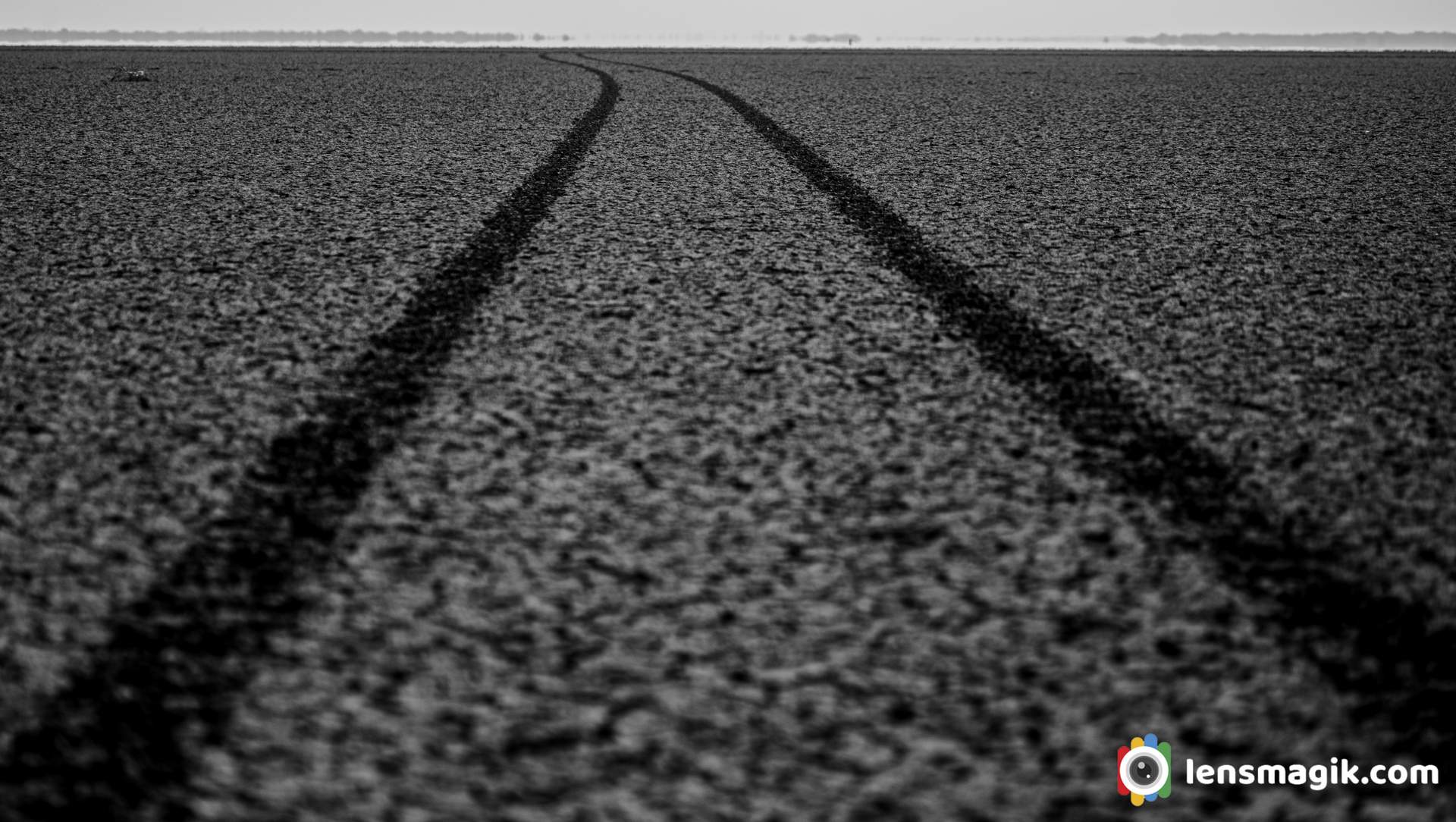
What is HORIZONS ? :: The horizon is the apparent line that separates Earth from sky. The true horizons can observed when it lines on the sea surface. Also many locations this line is made by Lands, Trees, Buildings, Mountains etc.The Horizon line divides all visible directions into two categories : those that intersect the Earth surface and those that don't. The horizon line is horizontal like to feel like end of earth no end of Earth surface . The Images of Horizons or skyline taken at Little Rann of Kutch . I tried to shoot many locations but sometimes not gonna happen that. Little Rann of Kutch is good place for Horizon photography bcz flat surface and 360 degree view. Above photo we passed thorough rann and i saw car trek on ground and line goes end of surface looks beautiful.
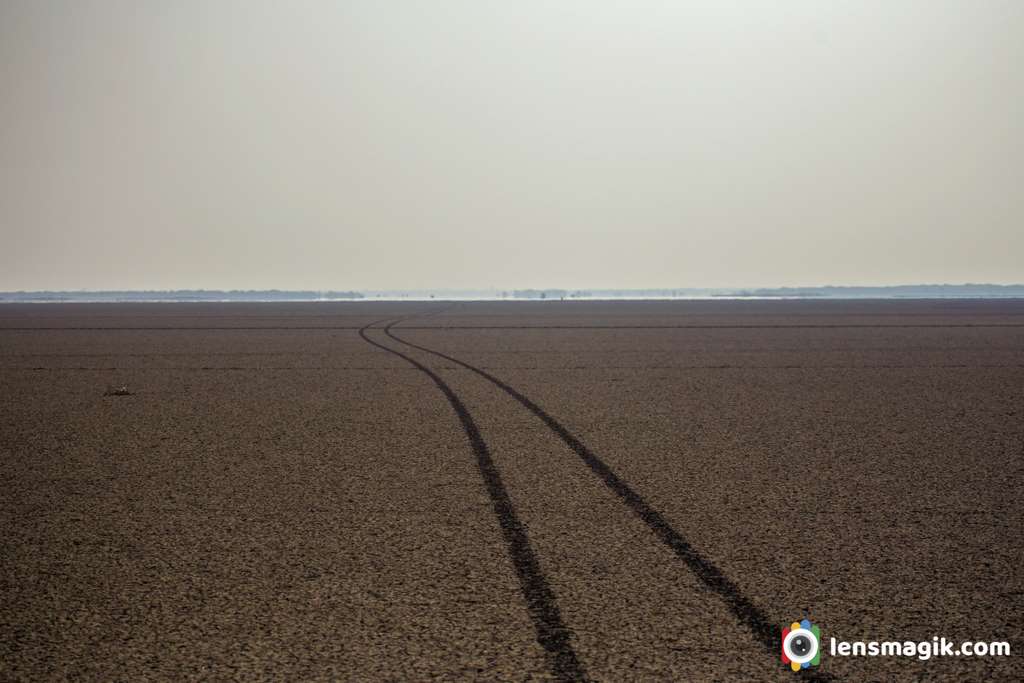
Horizon Height and distance calculation :
Well if you want to see horizon then you have to observe from 5-7 feet above sea level. Also you need clear land about 3-5 km distance then you can see clear Horizon line. In cities there are lots of disturbance like buildings, trees, towers etc so you can not see the clear horizons. For horizon line to see you need clear land area or water area. Best area for Horizon line is in between sea. In ocean there is clear Horizon line you can see easily. Also sunrise and sunset time horizons are amazing to see because of Twilight sky colors. Well all of these photos are not taken from 7 feet height and distance may not 3-5 km but its still you can see Horizons clearly. Photos taken from ground level but the rann area is clear so you can see horizons line from ground level.
For calculation of Horizon distance equation is :: Square root ( Height / 0.5736 ) and the result you get distance of Horizons.
Best Place To See Horizon lines :
The best place to see horizons are beaches. Because you can see clear line between Sky and Earth. Well where i live in Gujarat i have also one place name Little Rann of Kutch where i can see clear Horizon line as you can see in photos of Horizons. Little rann of Kutch is best place for me because its very near to me like about 2 hours car drive. Here there are huge number of raptors you can see in winter seasons. Lots of Migratory birds came here and the most important about Little Rann ot Kutch is Indian Wild Ass. Indian wild ass found only in Gujarat in this region only.
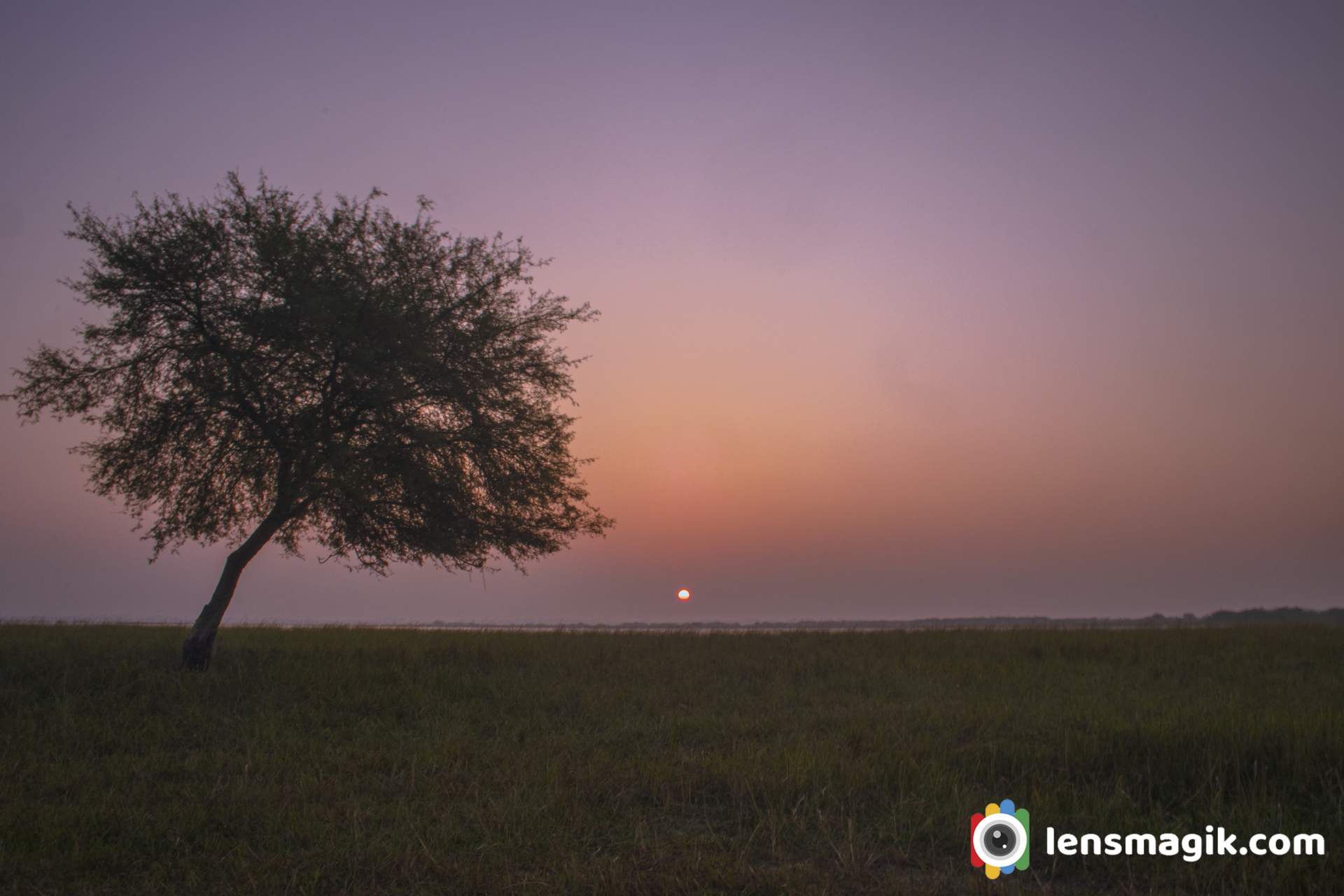

All Images taken at Little Rann of Kutch, Guajrat. Little rann of kutch known as LRK also famous for raptors and Indian Wild Ass. Lots of migratory birds coming here in winter. So never miss a change to visit LRK in Gujarat. LRK also very nice place for Star Gazing and Star Trail Photography, Time laps Photography.
Camera used : Canon 6 D, Canon 100-400 mm lens, Canon 50mm lens, canon 18-55 mm lens
Read more
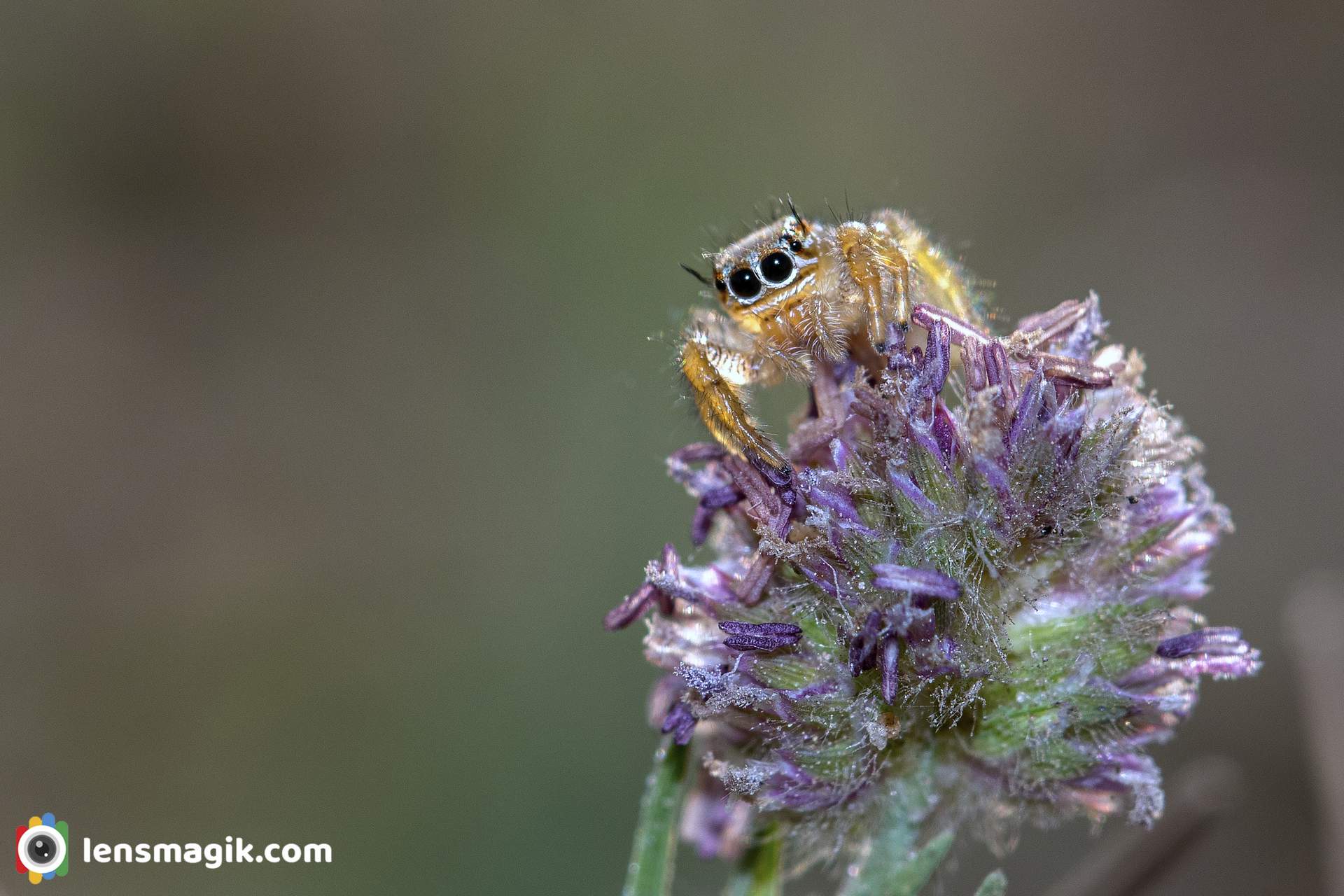
There are lots of Spider spices in the world. Spiders are good subject to shoot as a macro photo. Actually spiders are everywhere along to home and gardens. Jumping spider are group of spider constitute the family salticidae. This family contained over 600 described genera and over 6000 spices. Jumping spiders are easily identify from other spiders from their eyes and shape. The jumping spiders have faces that are roughly rectangular surface. The eyes are forward looking on flat face. The body length of jumping spider are around 1 to 25 mm. They generally found in forest , desert, scrub lands,temperate forest too. Toxicity of jumping spider is very less for humans. so jumping spider bite is not poisonous. Spiders are not insects because they belongs to family Salticidae and classified as Arachnids.
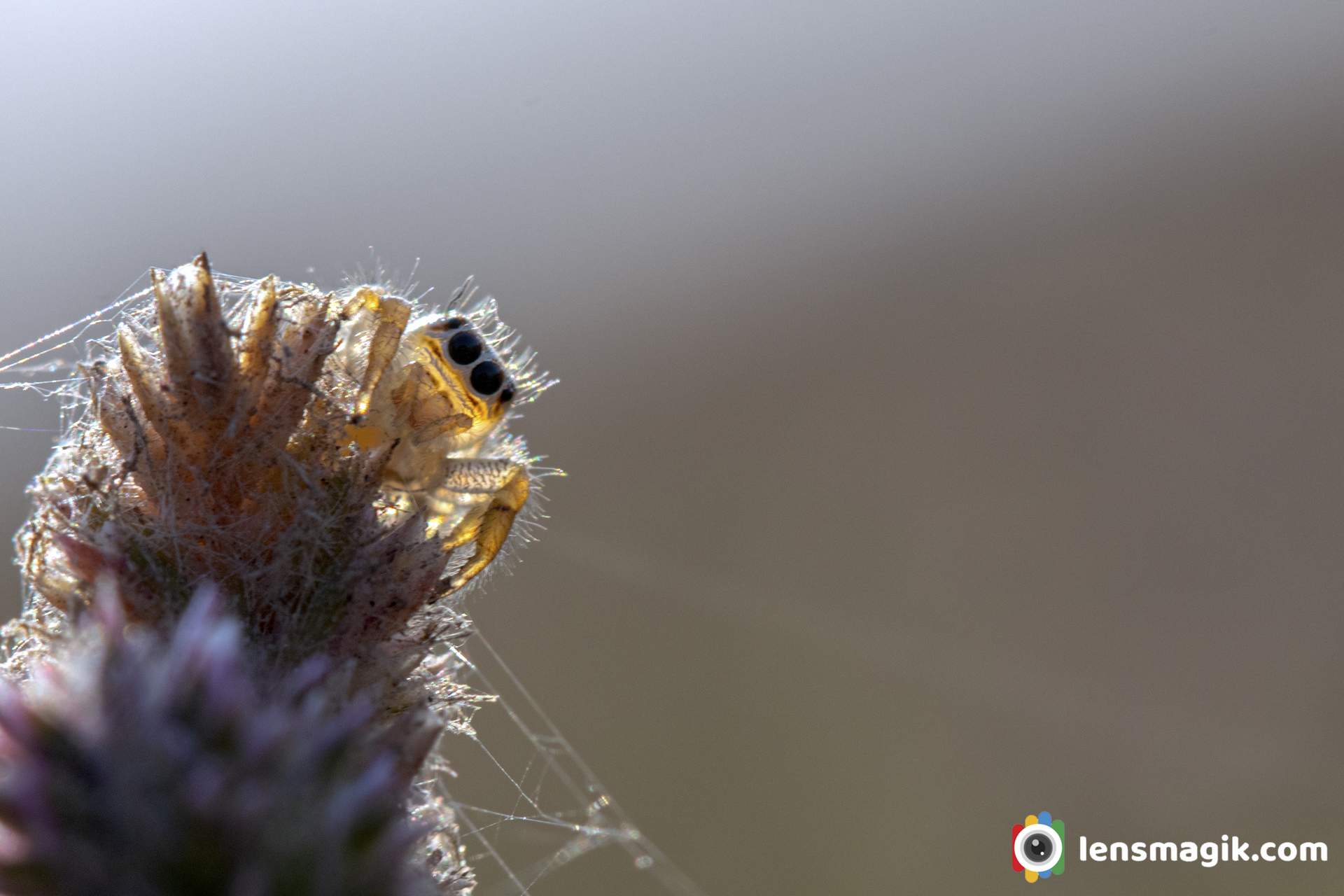
I found jumping spider during my trip to LRK ( Little Rann Of Kutch ). also its a live photography competition Name WILD CLICKS powered by canon in December 2019. Spiders in macro photography looks beautiful . For Macro Photography you need good light and good camera gears.
Some Facts about Jumping spider :
- The life of jumping spider is around 6 month to 2-3 years.
- Jumping spider are shy but you can easily catch them.
- They have 8 eyes.
- Once you will be familiar with spider then it enjoy your company.
- As per research of Miami university spiders like music.
- Generally they build their web in corners and dense trees , small plants etc.
- All spiders are predators.
- Jumping spider can change sudden blood flow in their body.
- Jumping spider do not use web for hunting.
- Jumping spider can dance also.
- Jumping spider can jump 10-50 times of their body.
- Jumping spider have 8 legs as all spider have 8 legs.
About Little Rann of Kutch :
LRK or little rann of kutch is a Wild ass sanctuary of Gujarat. Sanctuary for Indian Wild Ass but its also very well known for raptors and migratory birds. During winter some migratory birds like flamingos, pelican, bar headed goose, raptors, falcons, eagles, owls are regular visitors. So the sanctuary is more important for wildlife in Gujarat where you can find all birds, mammals and also 360 view of rann of kutch. Also some wetland areas near rann are beautiful for sunset and sunrise. You can also get some good macro photos of insects of rann for making good theme of COLORS OF RANN. I tried to shoot this spider with background of sun but its too hard for me . because it cant steady on one place for a second but got good pictures.
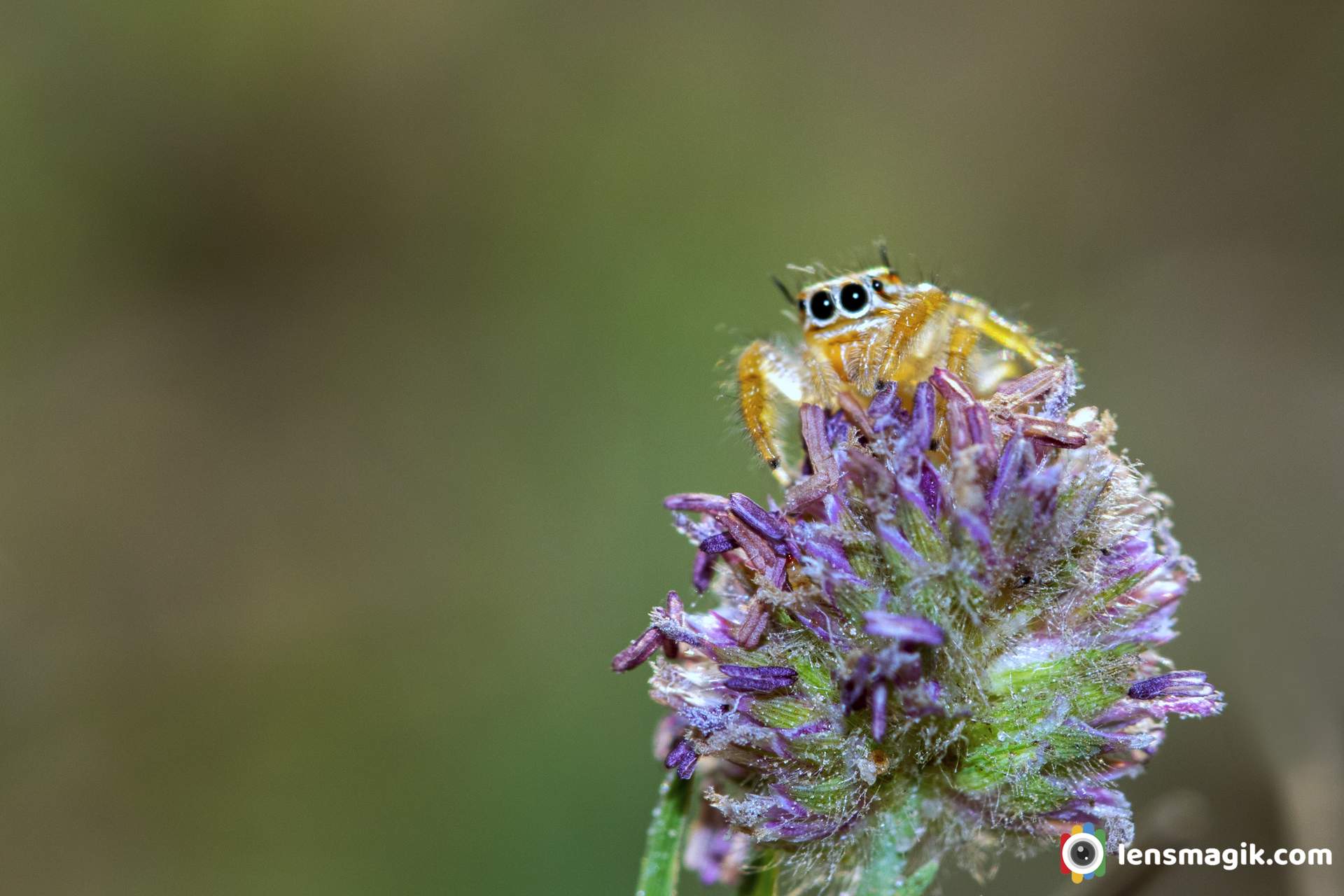
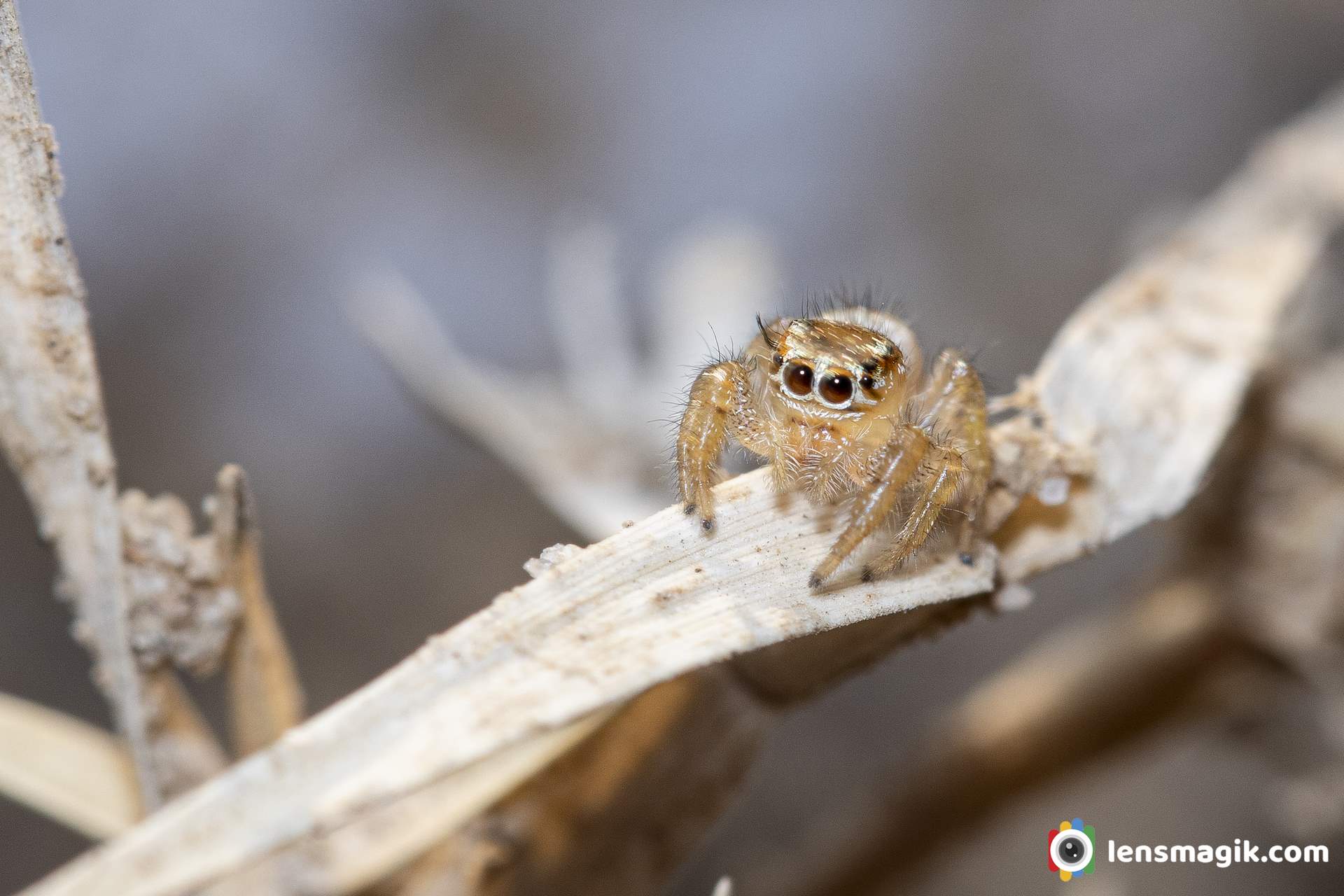
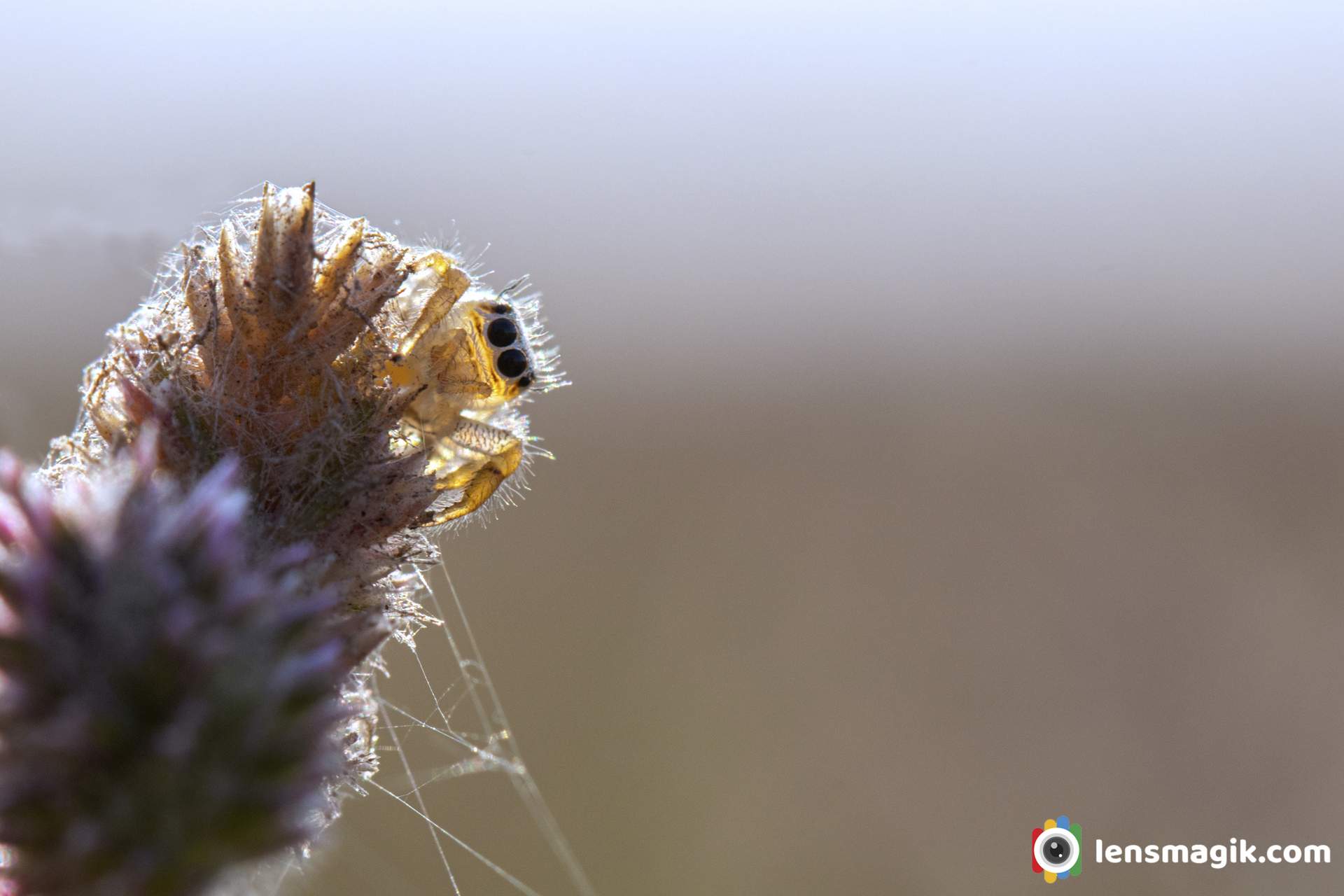
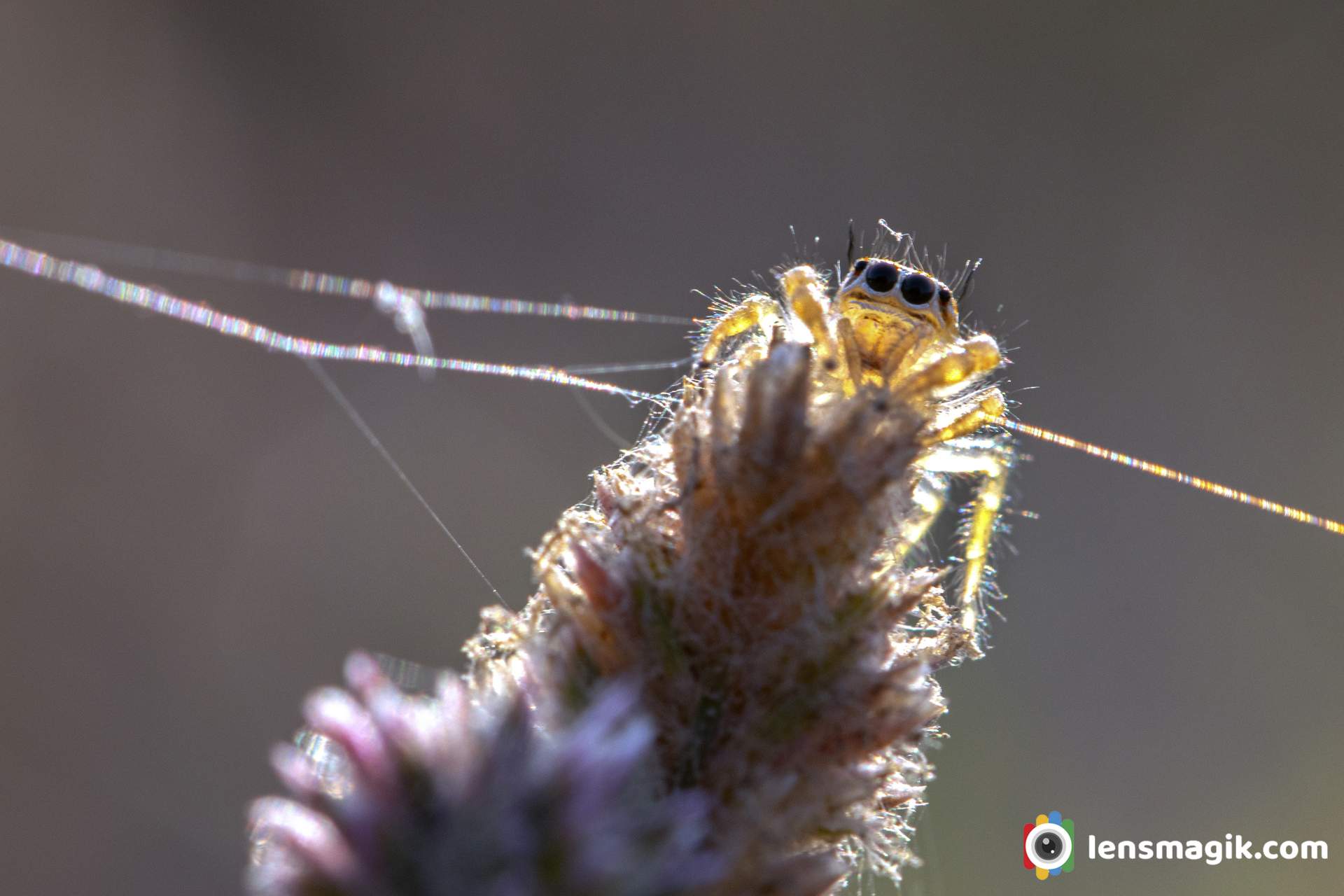
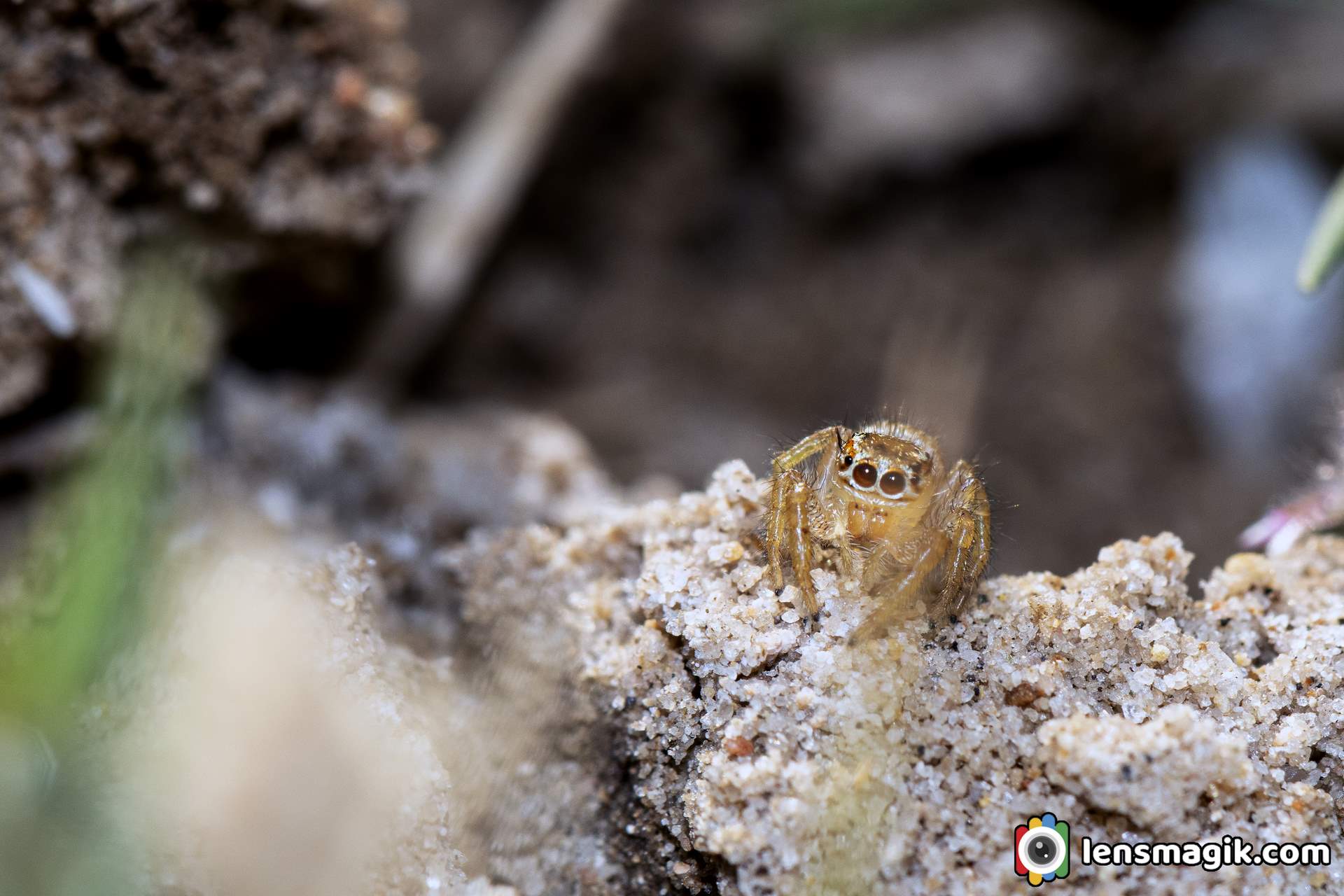
Gear used : Canon 80 D , Canon 6 D ,Canon 100mm Macro , Flash not fired
Location : Little Rann Of Kutch, Dasada
Read more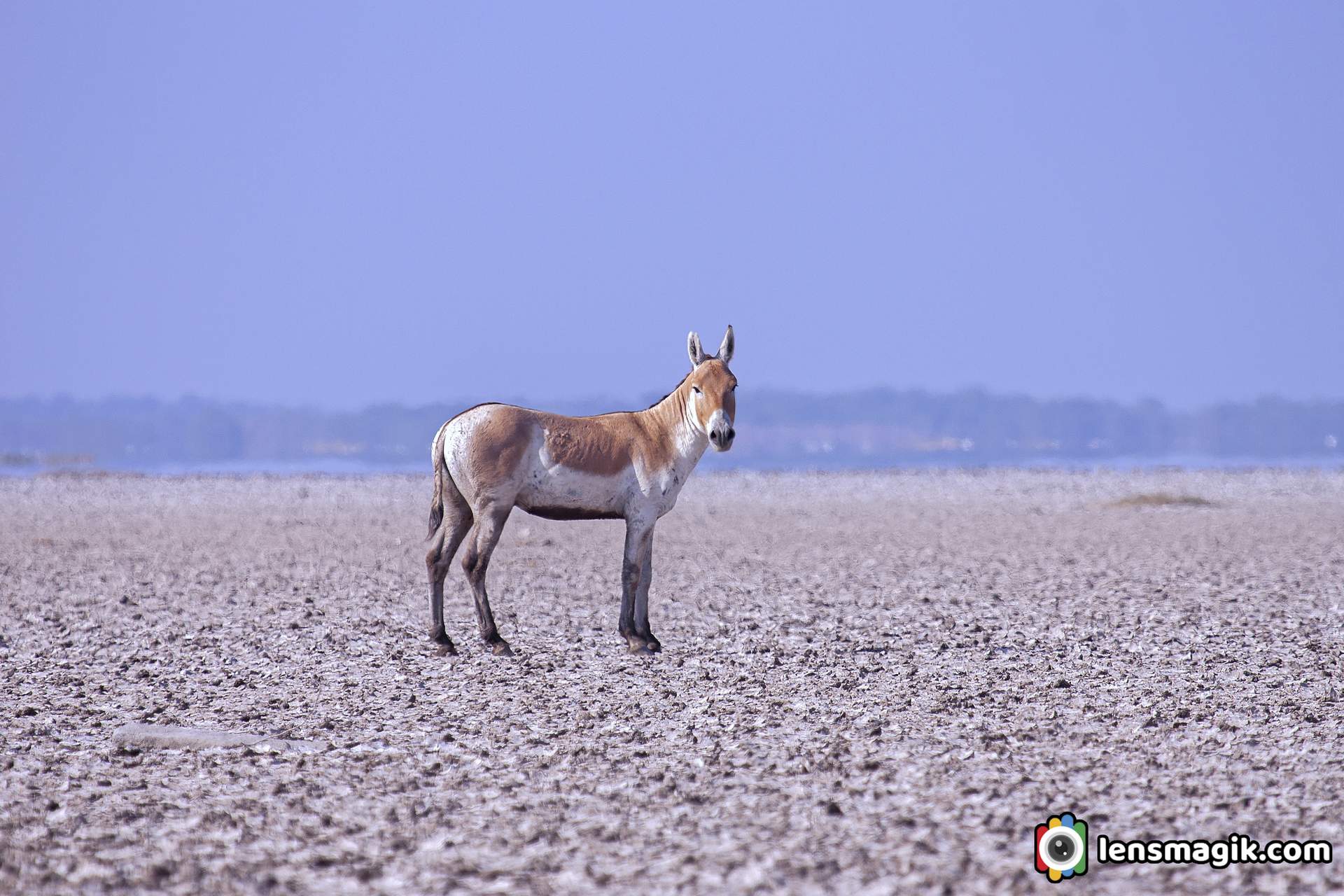
Indian Wild Ass known as Gudhkhur, Khur or Indian Onager in local Gujarati language. The population was estimated around 4450 before 5-6 years. Indian Wild Ass population increasing in numbers and extending its range from Little Rann of Kutch to Great Rann of Kutch. Little Rann Of Kutch where found the world's largest population of Wild ass .The wild ass eat grass, leaves and fruits. Wild ass is very shy animal. If you want to go closer to them they ran away. I shoot photo from far distance with my tele lens. There was very low light at sunset and with tele lens u cant go much brighter image but i tried with sunset and wild ass together. Wild ass with sunset photo looks awesome.
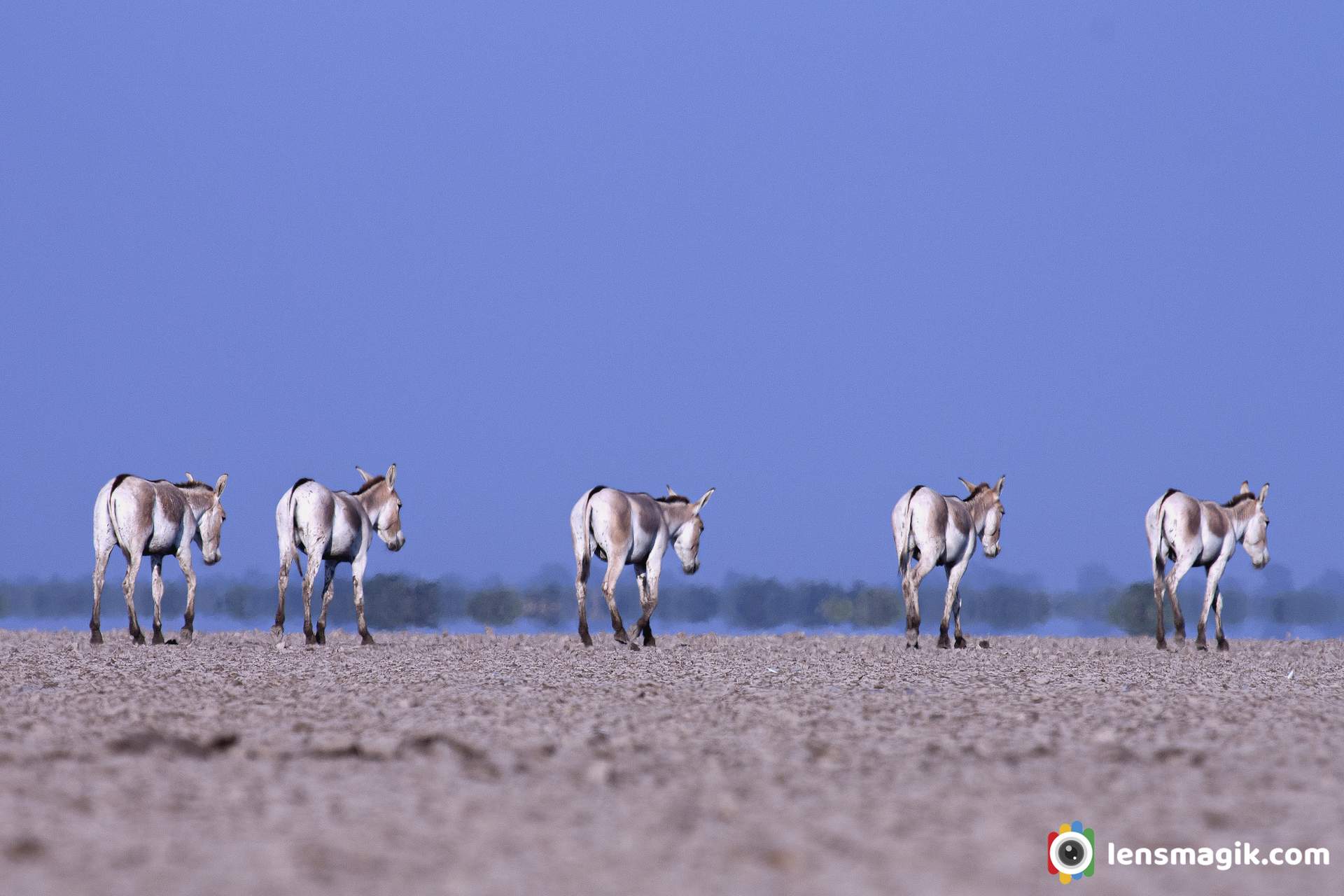
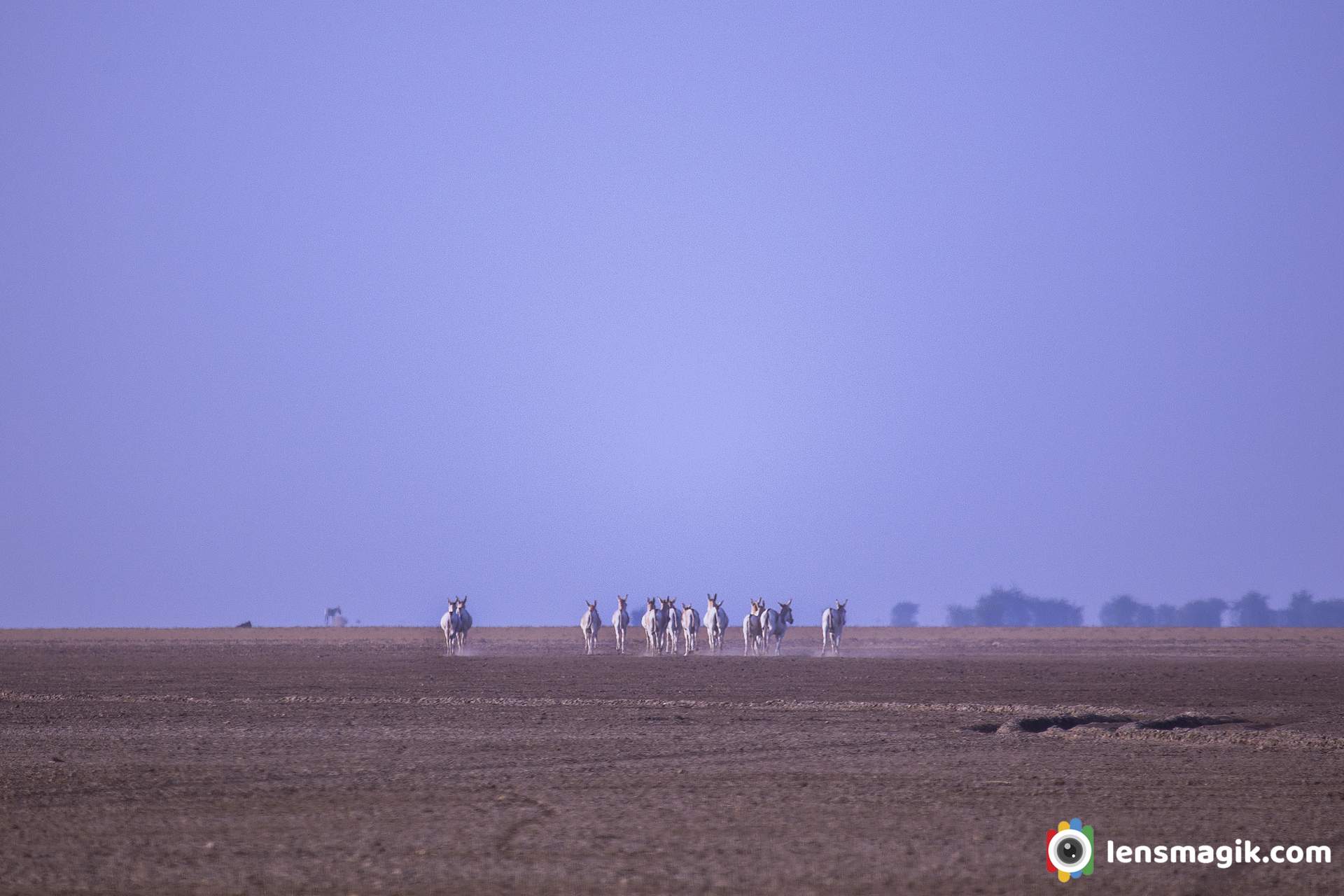
Facts about Indian Wild Ass :
- The range of Indian Wild Ass is western India, Pakistan and Afghanistan .
- In India Indian wild ass found only in Gujarat in Great Rann of Kutch , Little rann of kutch in Wild ass Sanctuary.
- In Gujarat Indian wild ass also found in small numbers in Banaskantha, Surendranagar, Mehsana and some outskirts of wild ass sanctuary.
- Indian Wild ass feed grass, leaves and fruit plants.
- Indian wild ass is the fastest animal of India.
- Speed of Indian wild ass is around 70 to 80 km per hour.
- Monsoon is matting season of Indian Wild Ass.
- Indian wild ass related subspecies are Mongolian Wild Ass, Turkmenian Kulan, Persian Onager and Syrian Wild Ass .
- In India there is another Wild ass spices named Tibetan Wild Ass found in Leh Ladakh and Tibet areas,
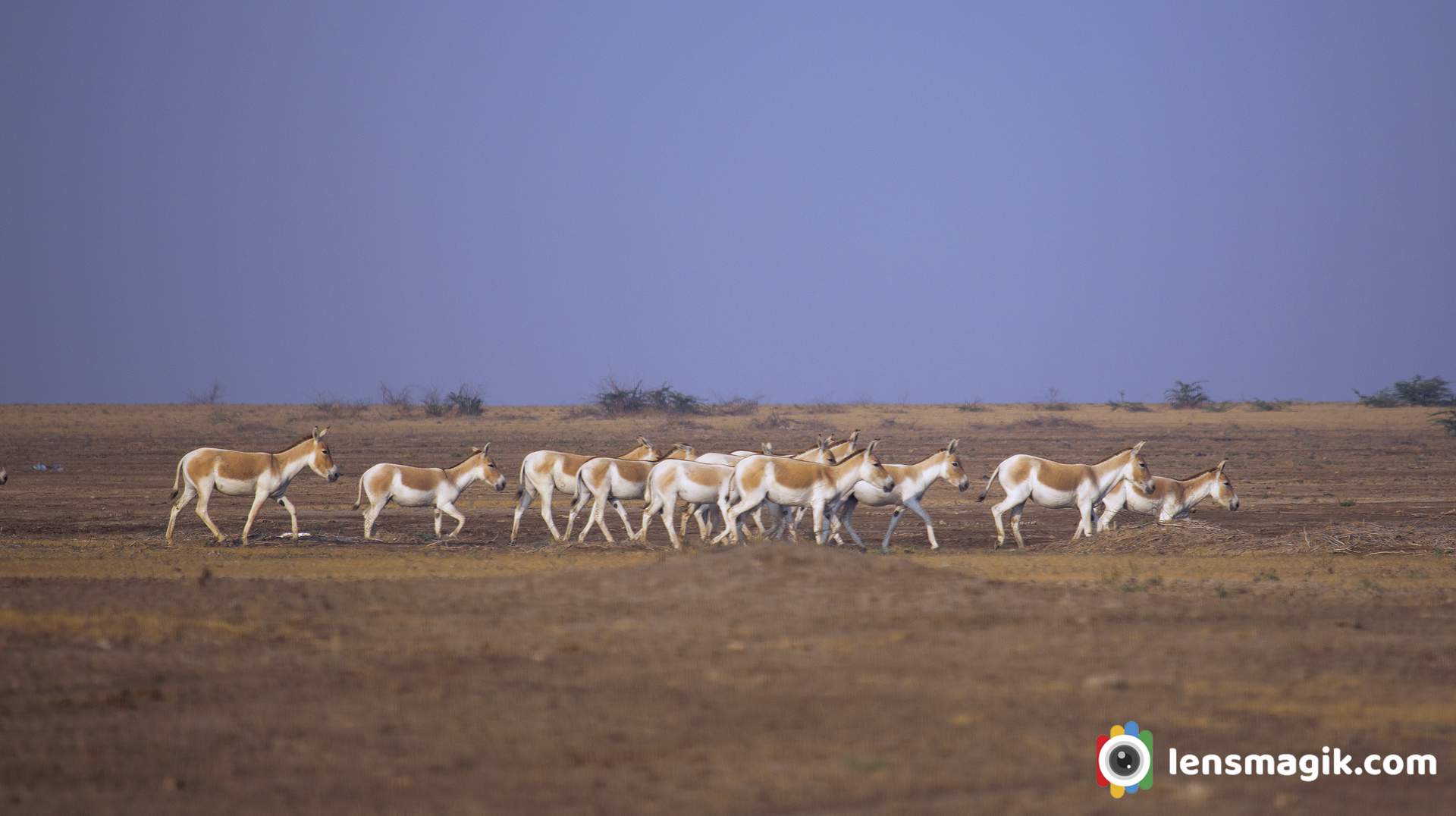
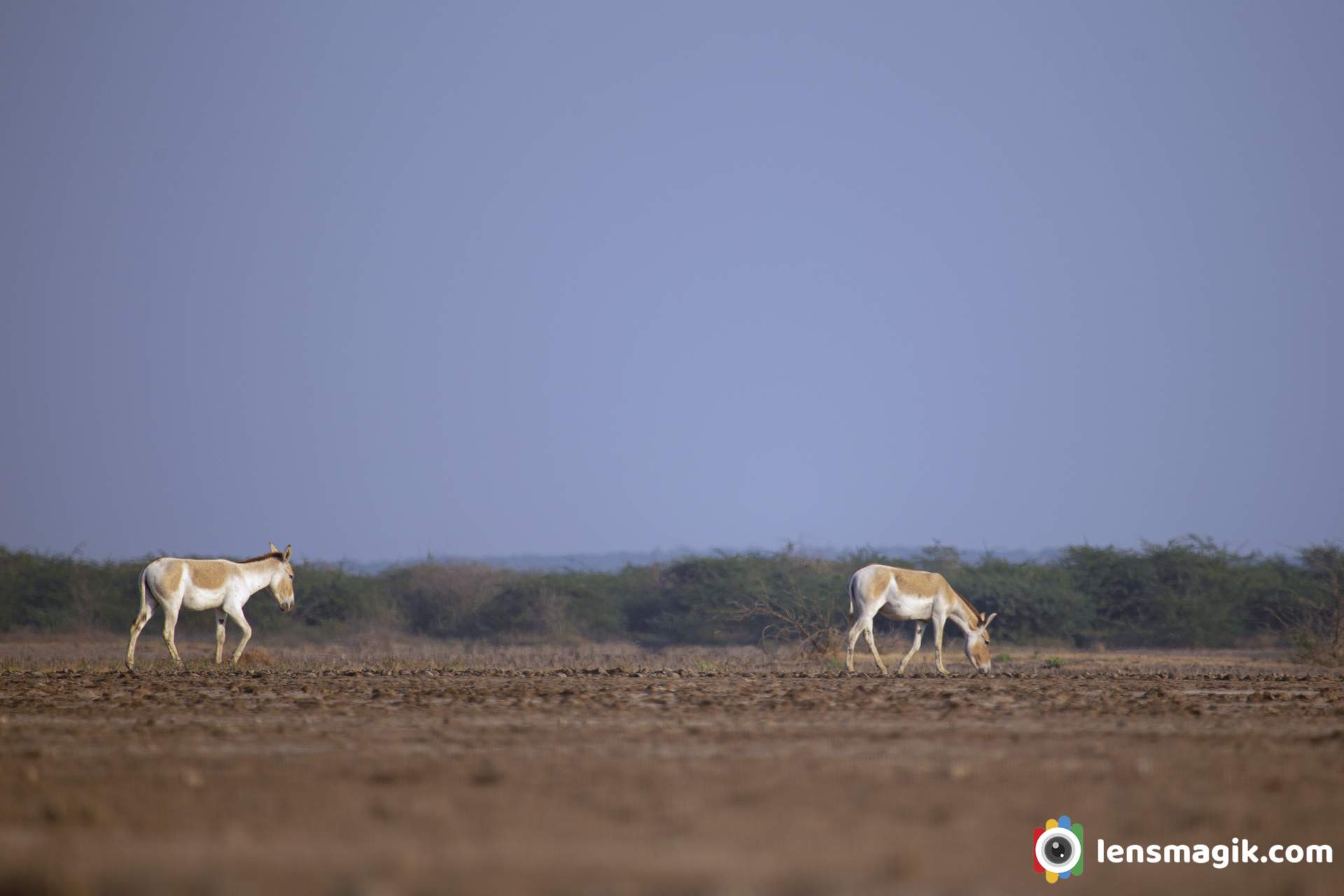
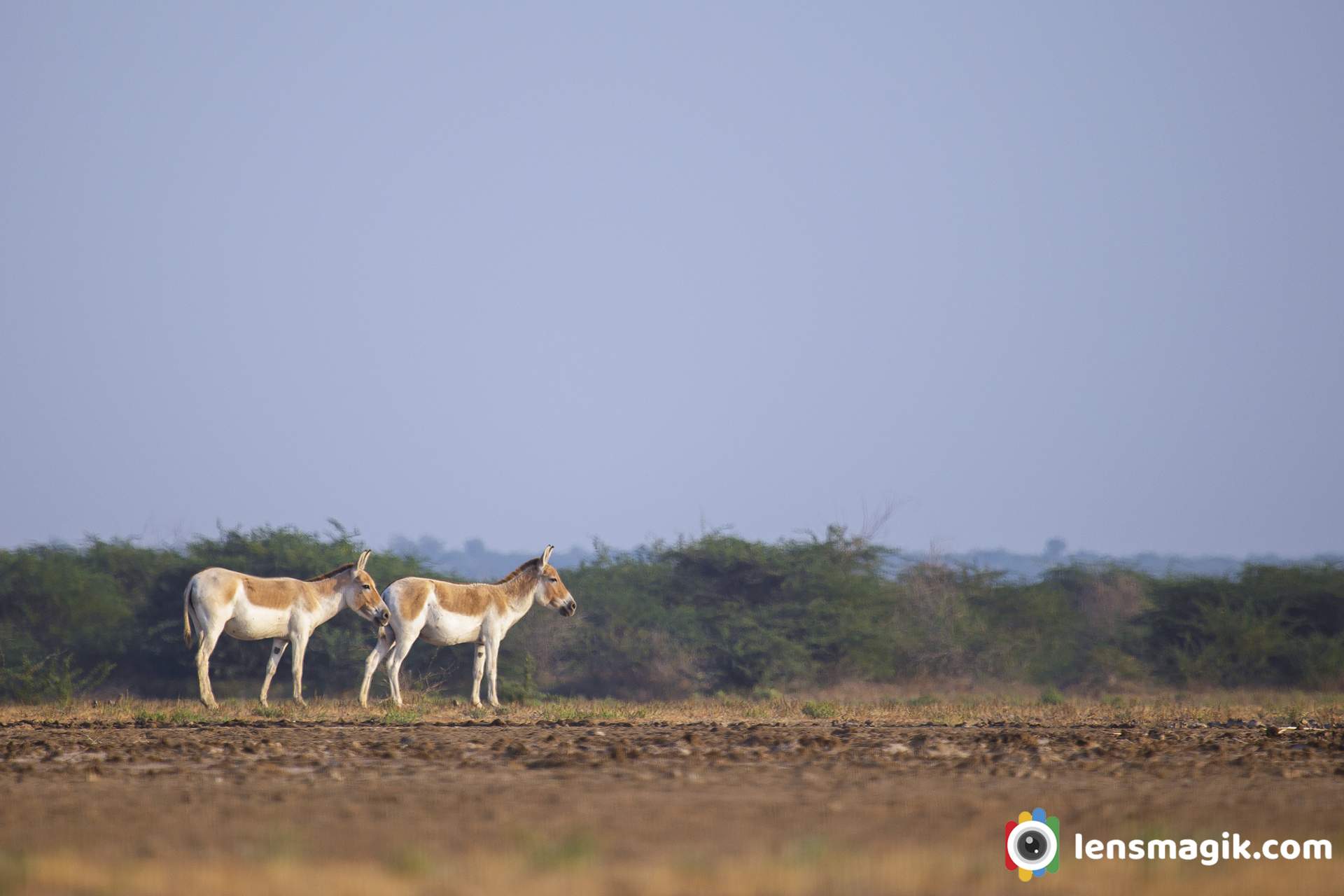
About Wild Ass Sanctuary Gujarat :
Little rann of Kutch has two good sites one is Bajana where you can enter LRK from forest office. Another site is Dasada where good wetlands and outskirts area of amazing agricultural lands. From Bajana entrance route you can find amazing migratory birds and wild ass too. Lots of winter visitor birds and raptors found here. Best time to visit for raptors is November to February. Dasada village has good wetlands. Also some good wetlands area outside LRK where you can find migratory birds and some resident birds too. Also short eared owl found here and also endanger Bastard bird is found here. LRK is prefect sanctuary for wildlife and birders. Here you can find all types of birds and mammals. In little rann of kutch spices of invertibrates, insects, spiders, amphibians, reptiles, lizards, snakes etc are found. Sanctuary is in a desert of Kutch.
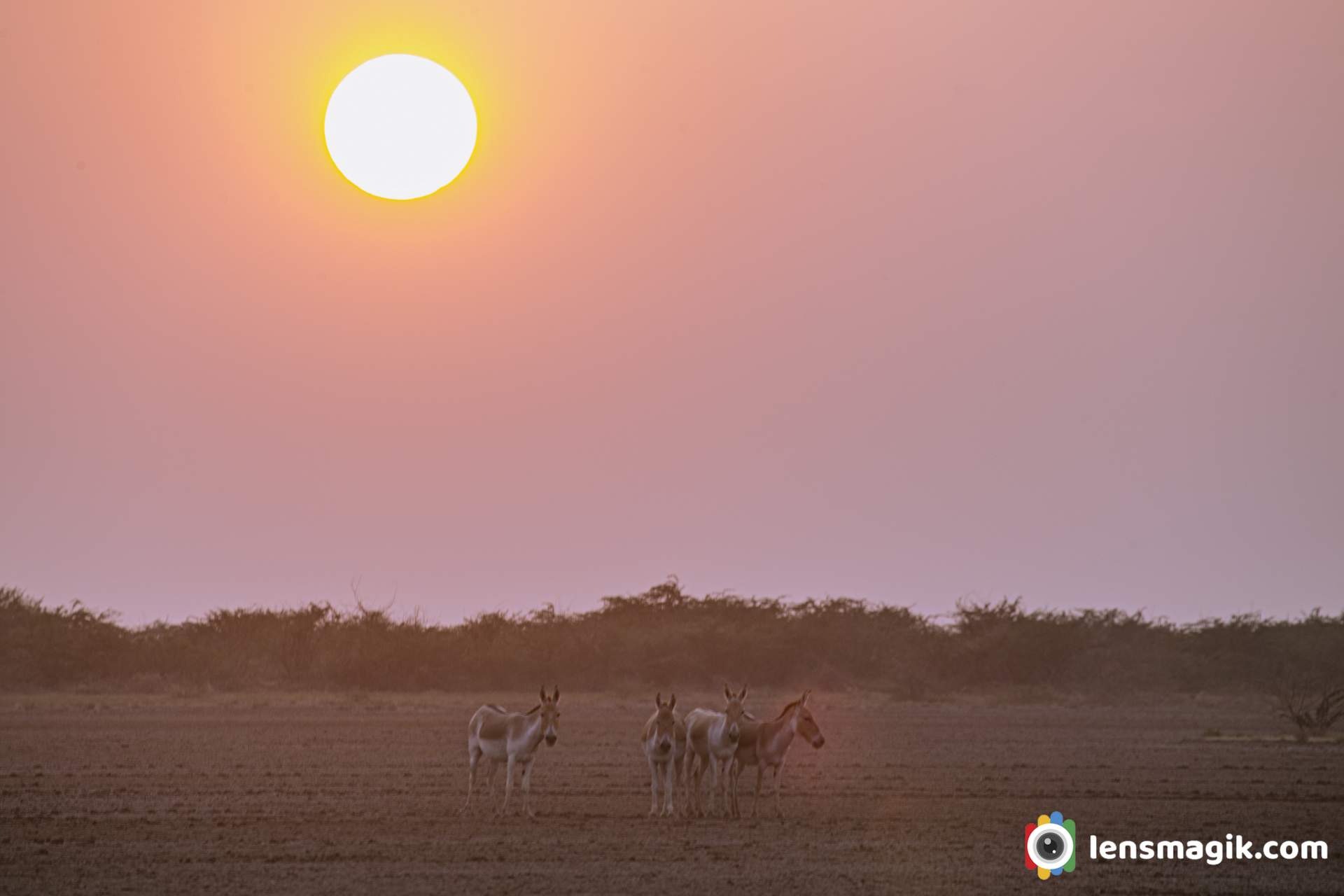
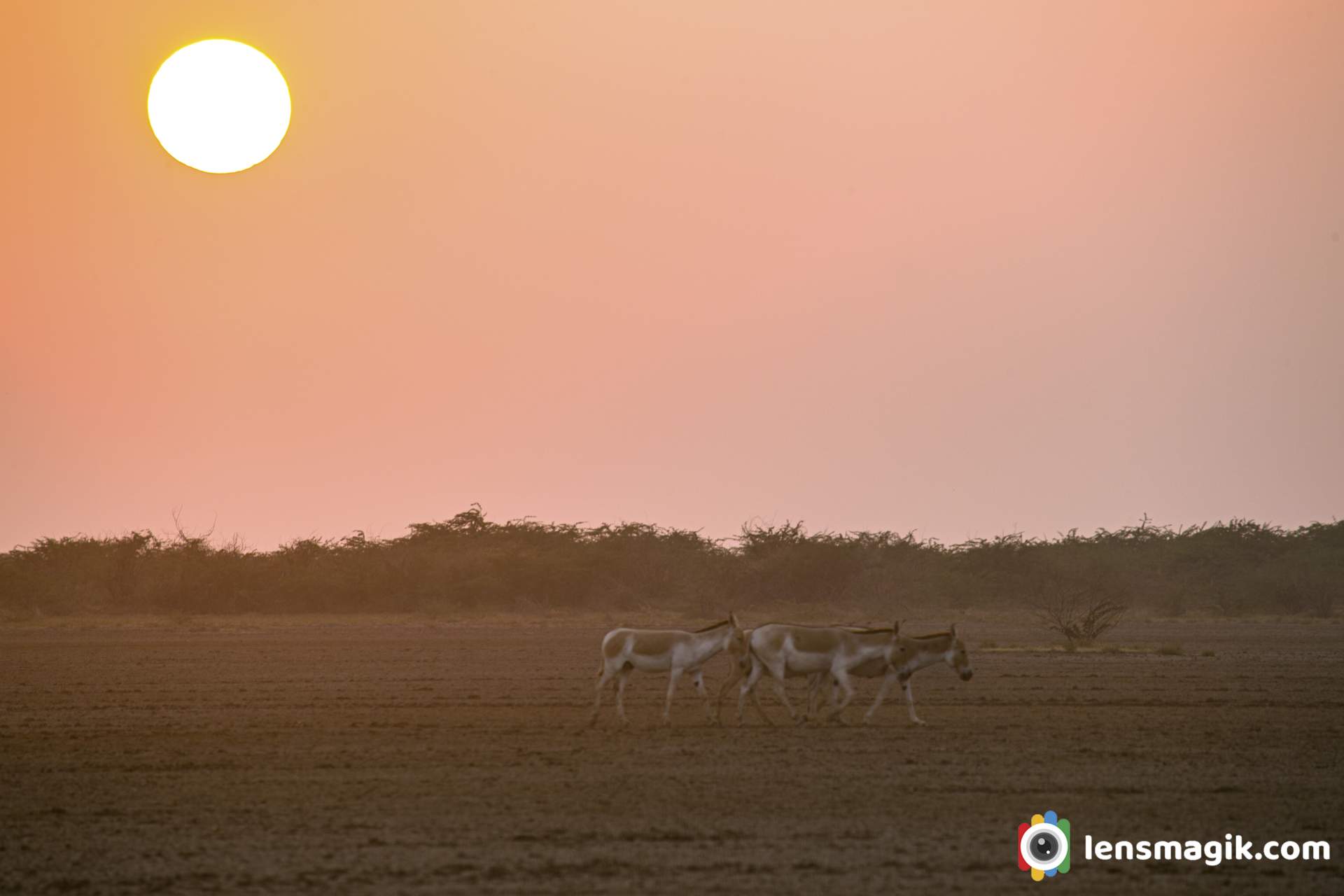
At the edge of sunset wild ass is beautiful subject to shoot. LRK has good horizon site to capture 360 degree view . Little rann of kutch is very good sanctuary for birders too. In winter season LRK, little rann of kutch is best place to visit for raptors. Lots of migratory birds and raptors are found here . Wild ass is looks like a donkey. Same body structure as donkey but only the difference is color. LRK is good place for wildlife photographer bcz you found mammals , birds, migratory birds, raptors and also owls and endanger spices of Bastard found here.
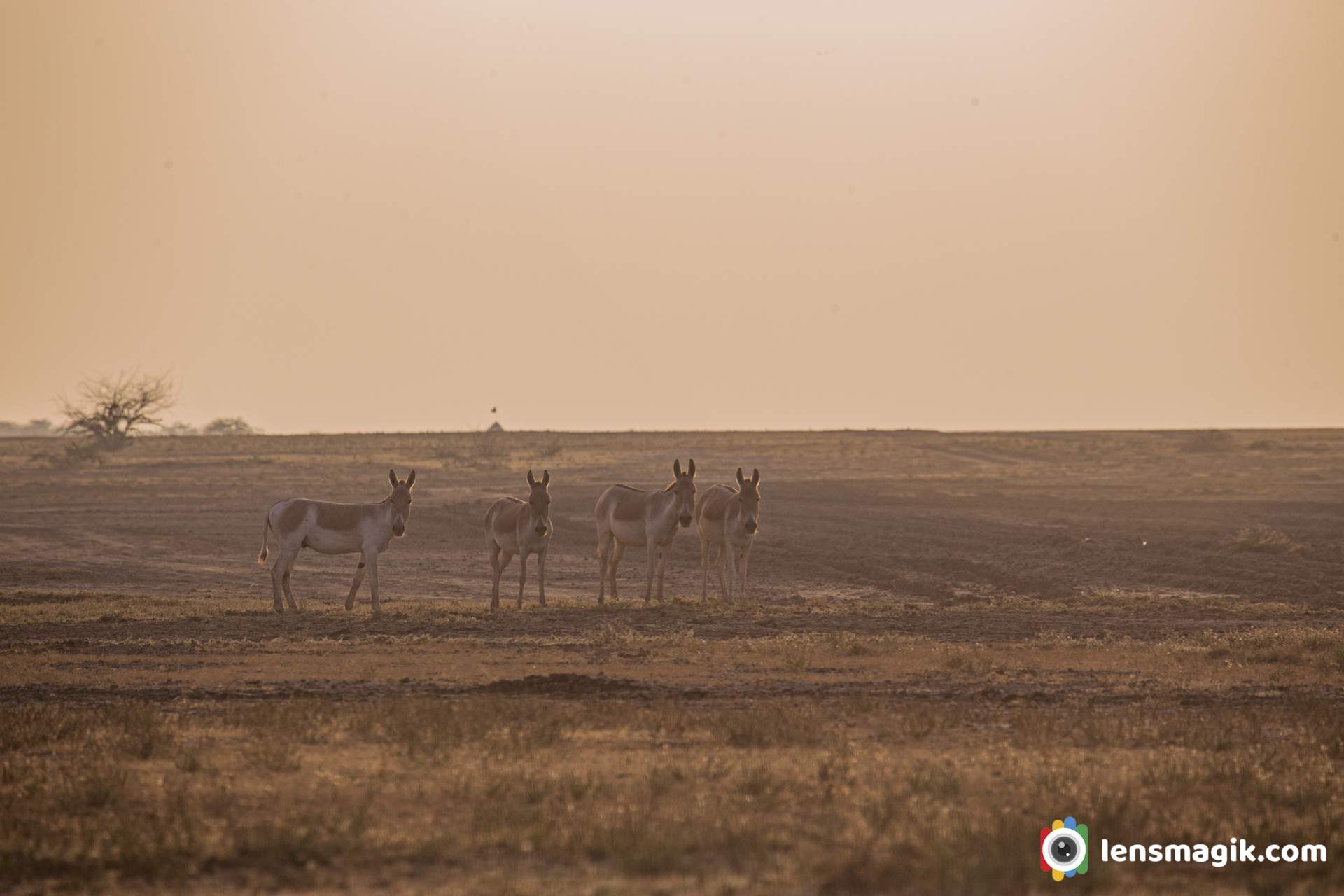
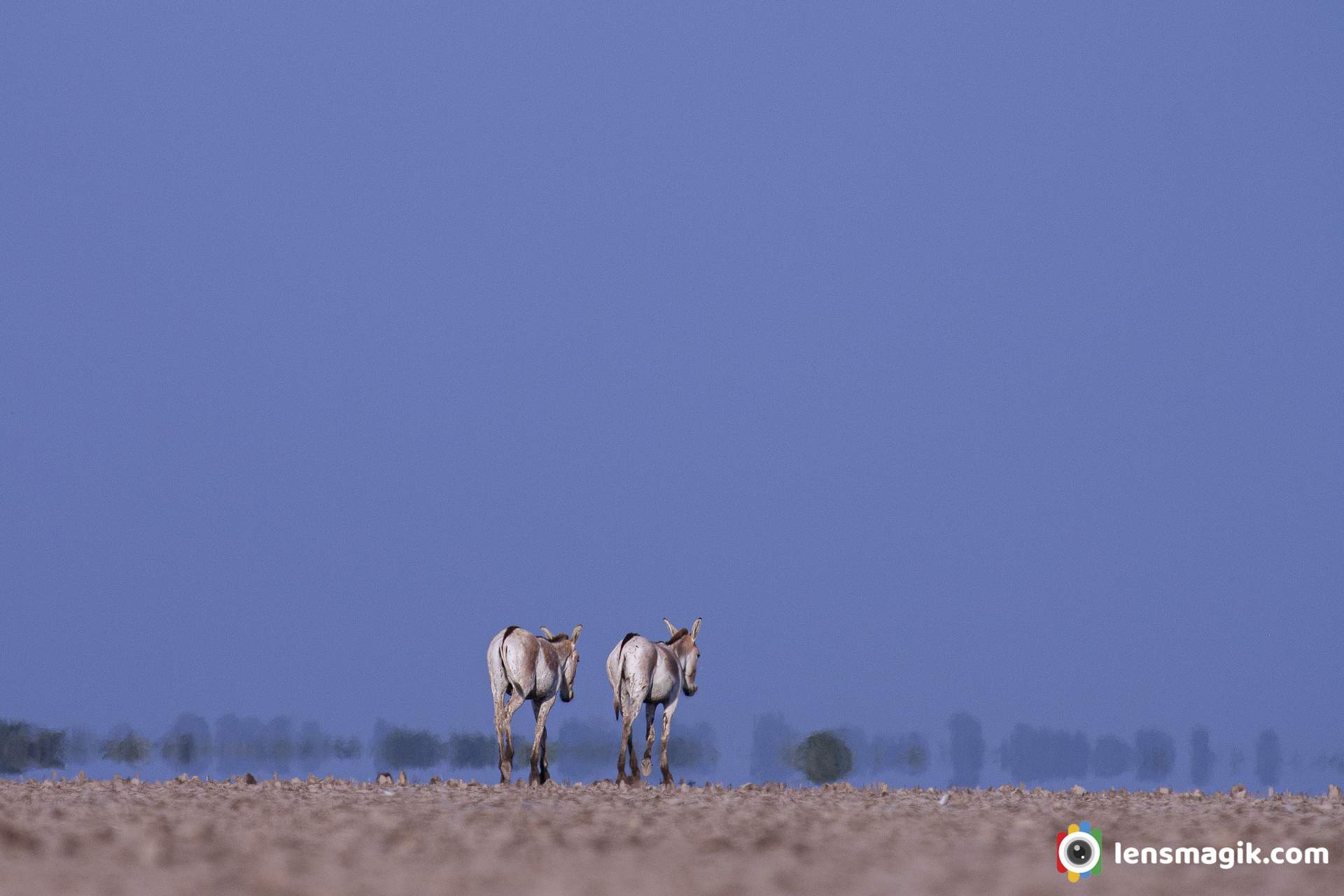
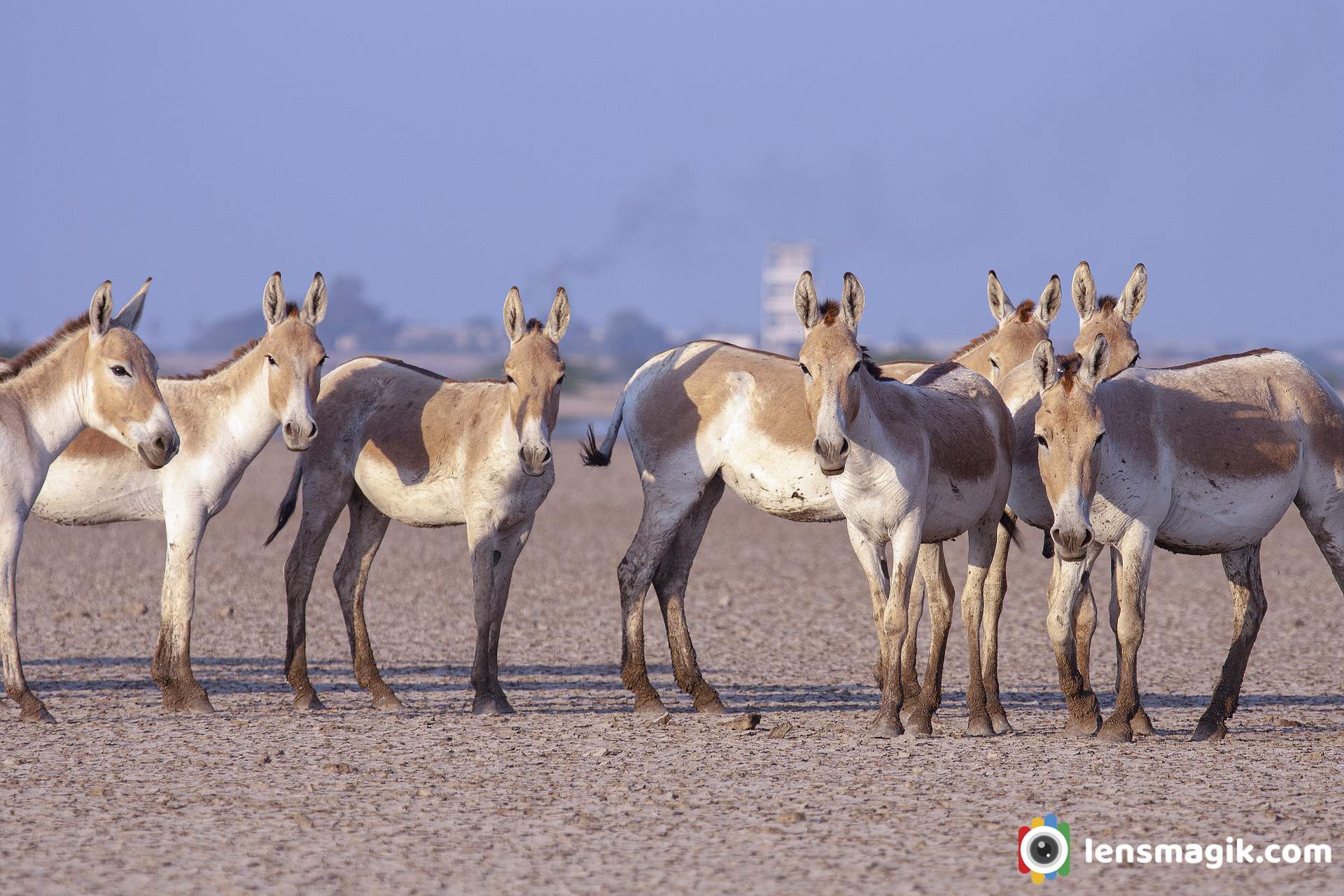
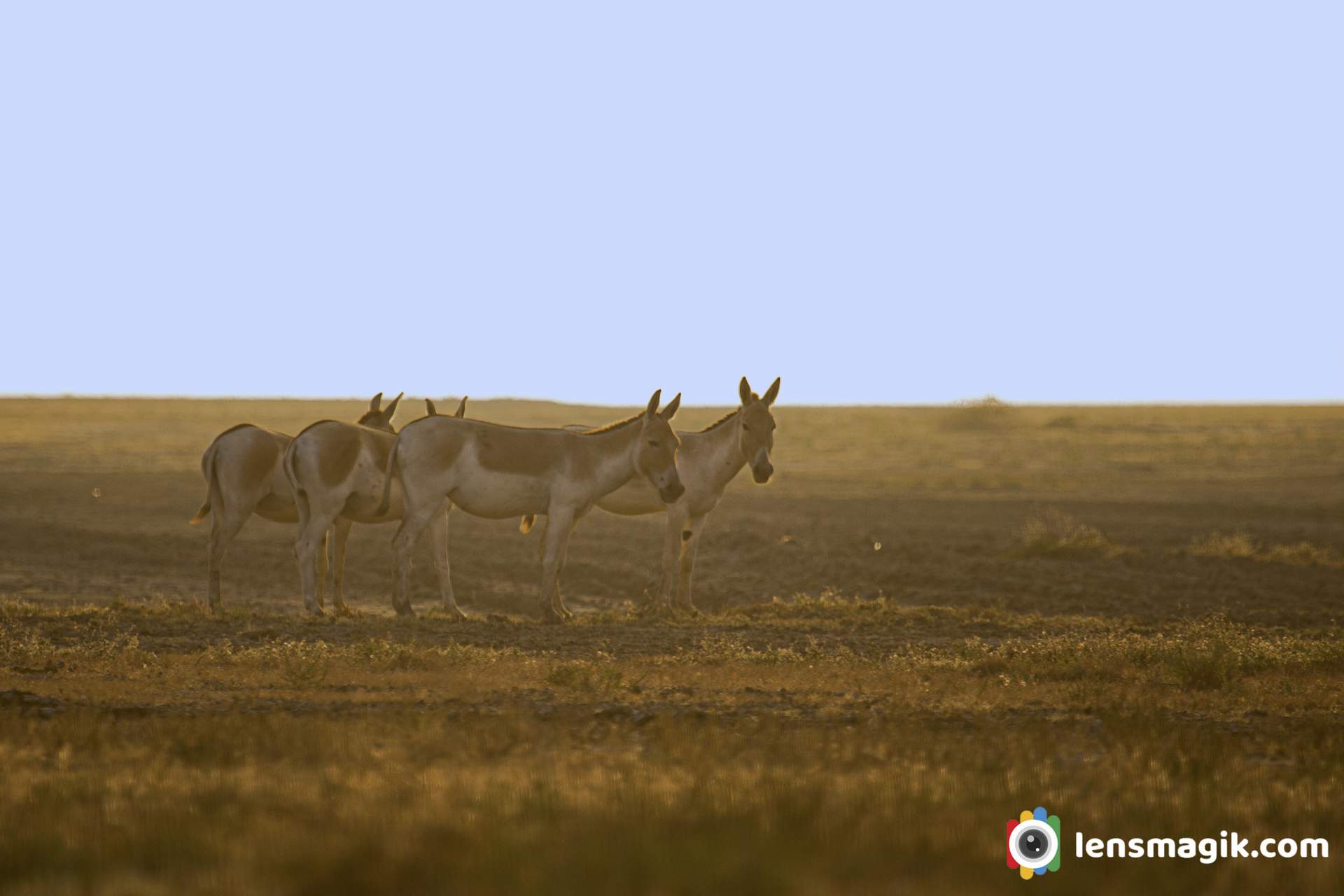
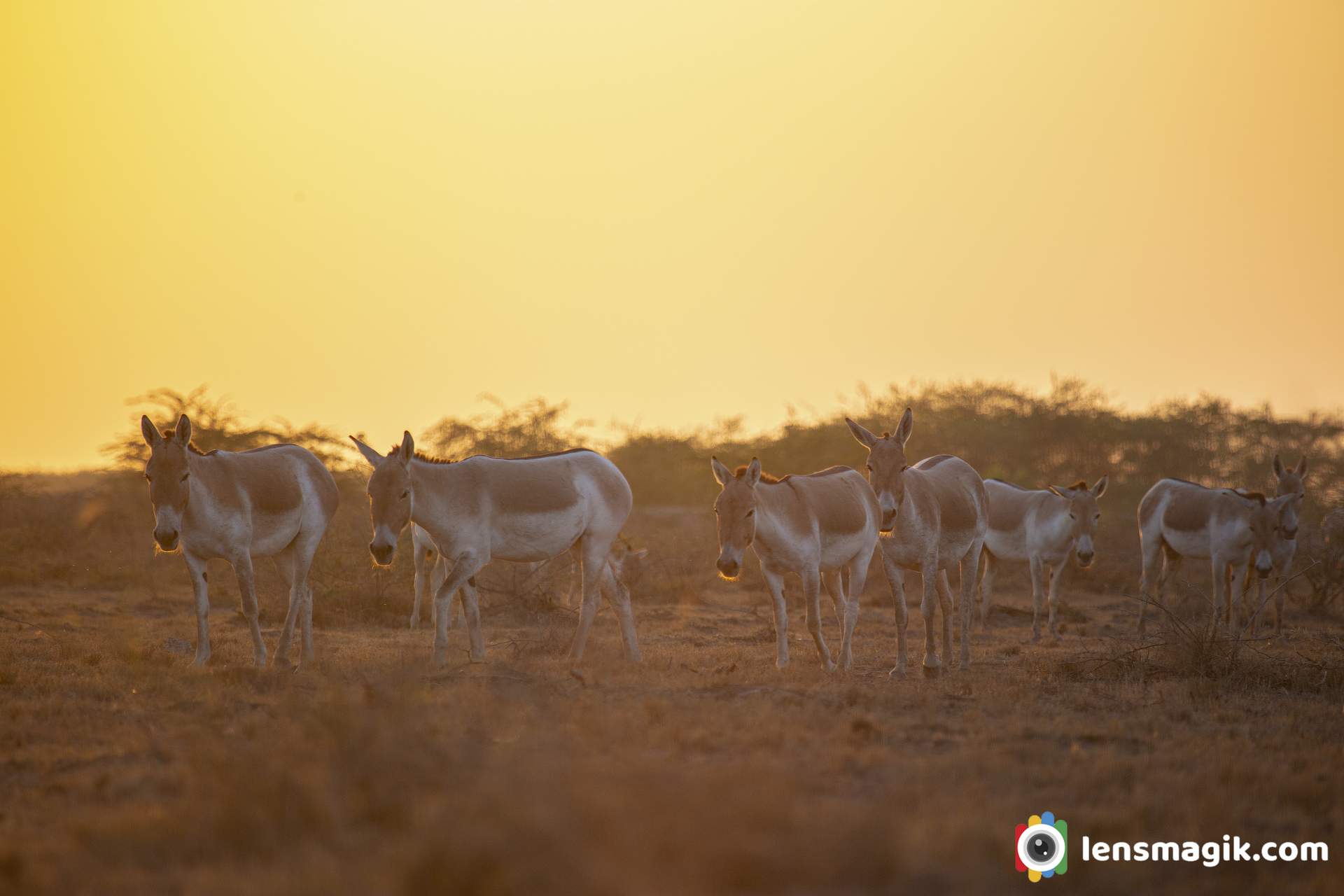
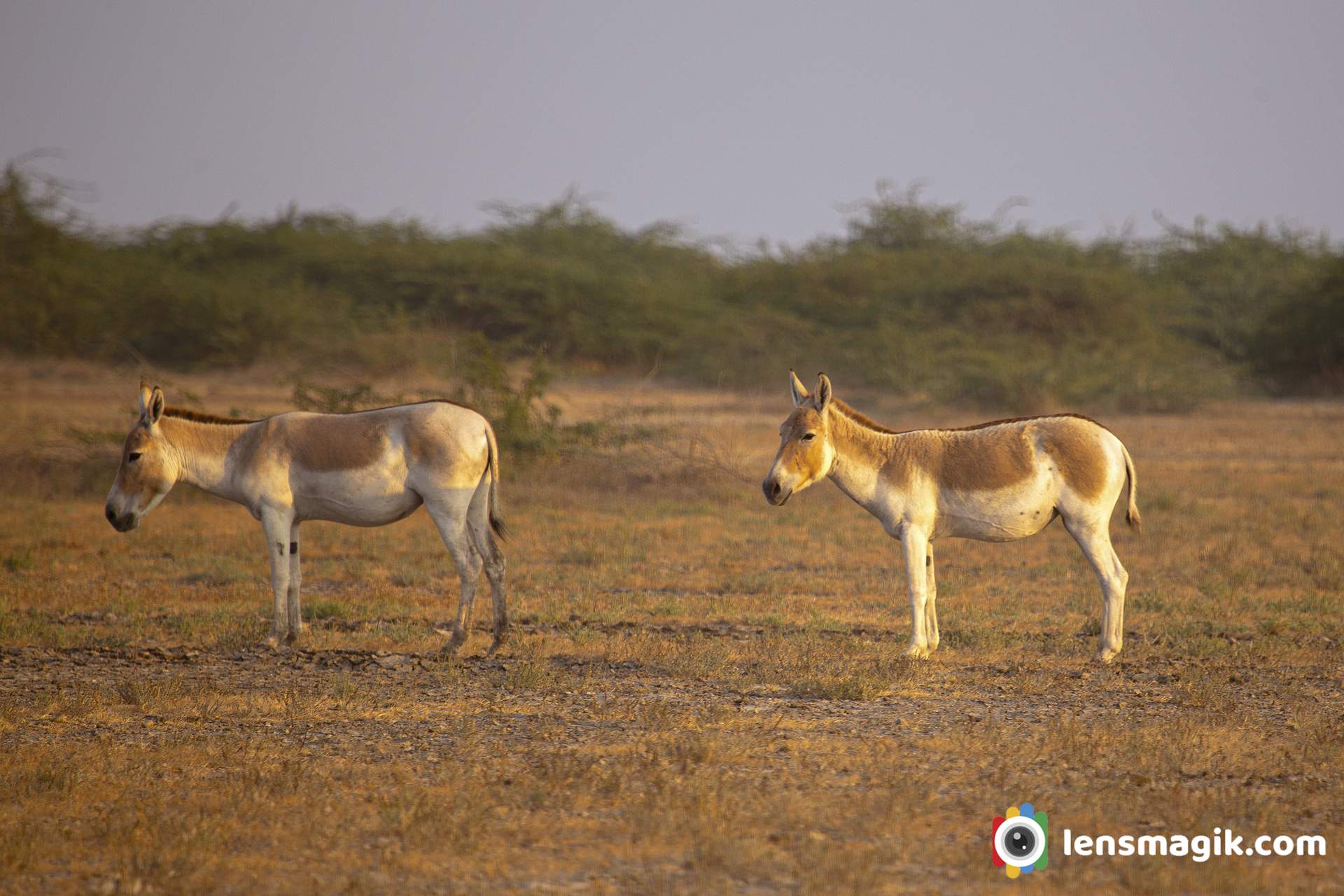
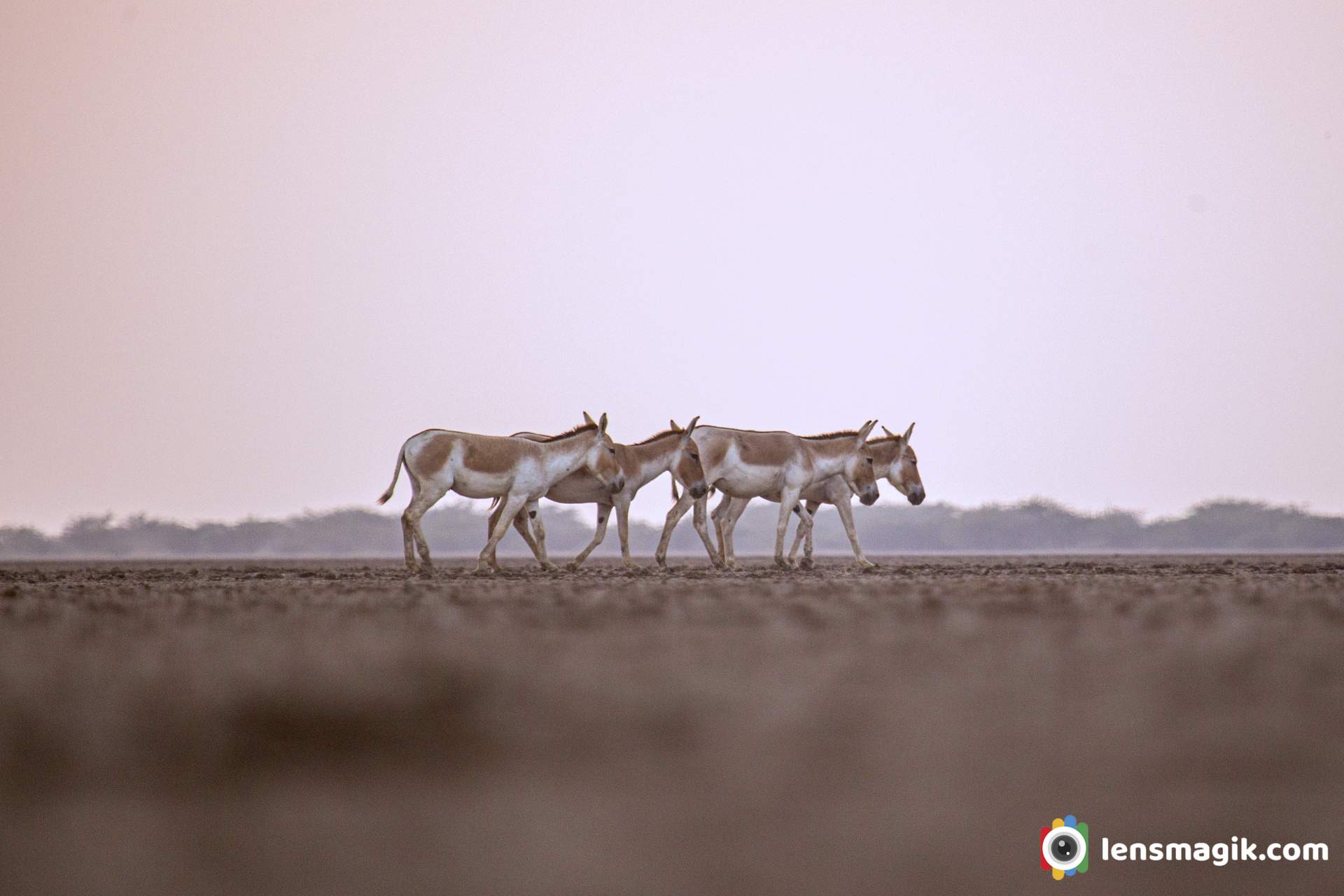
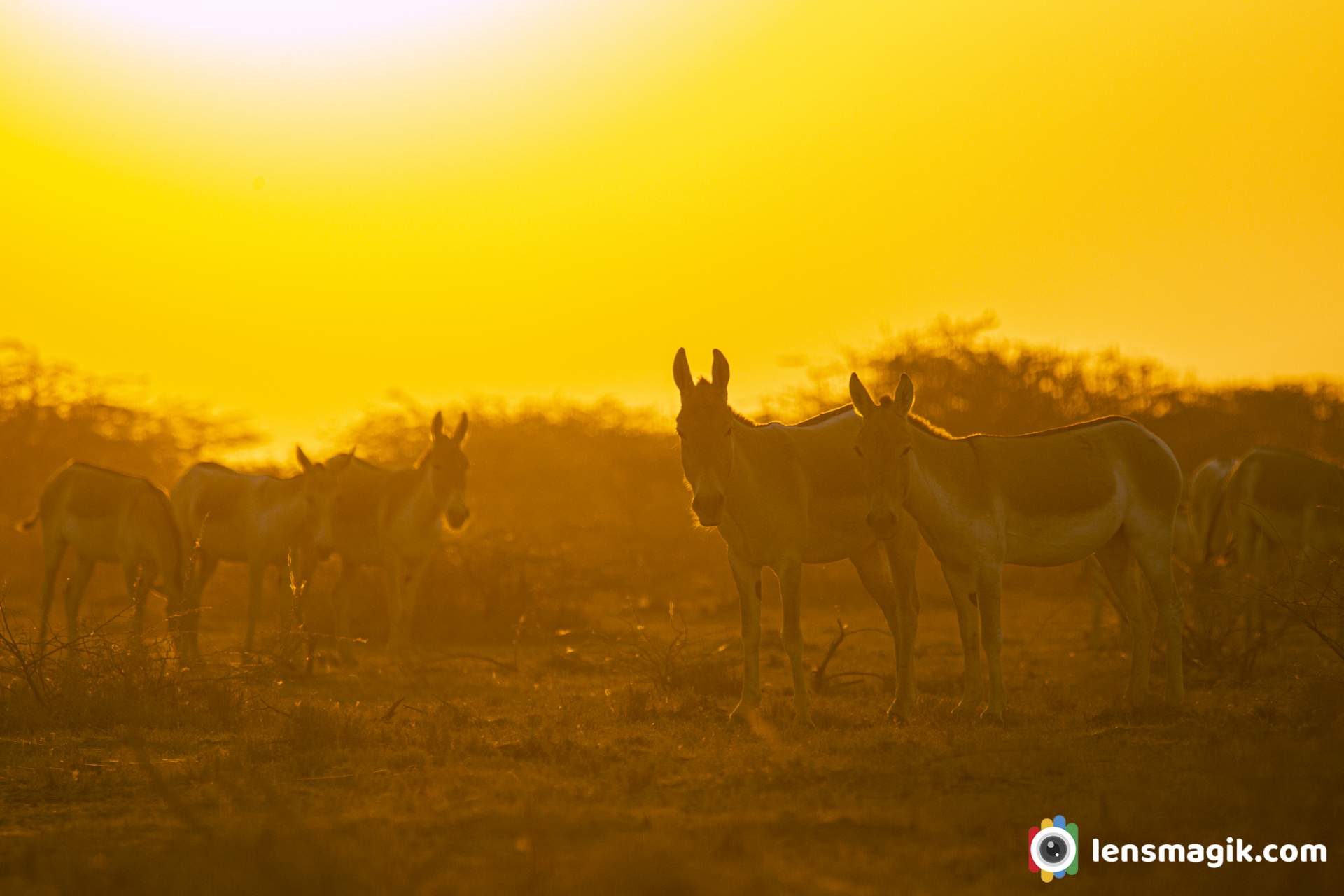
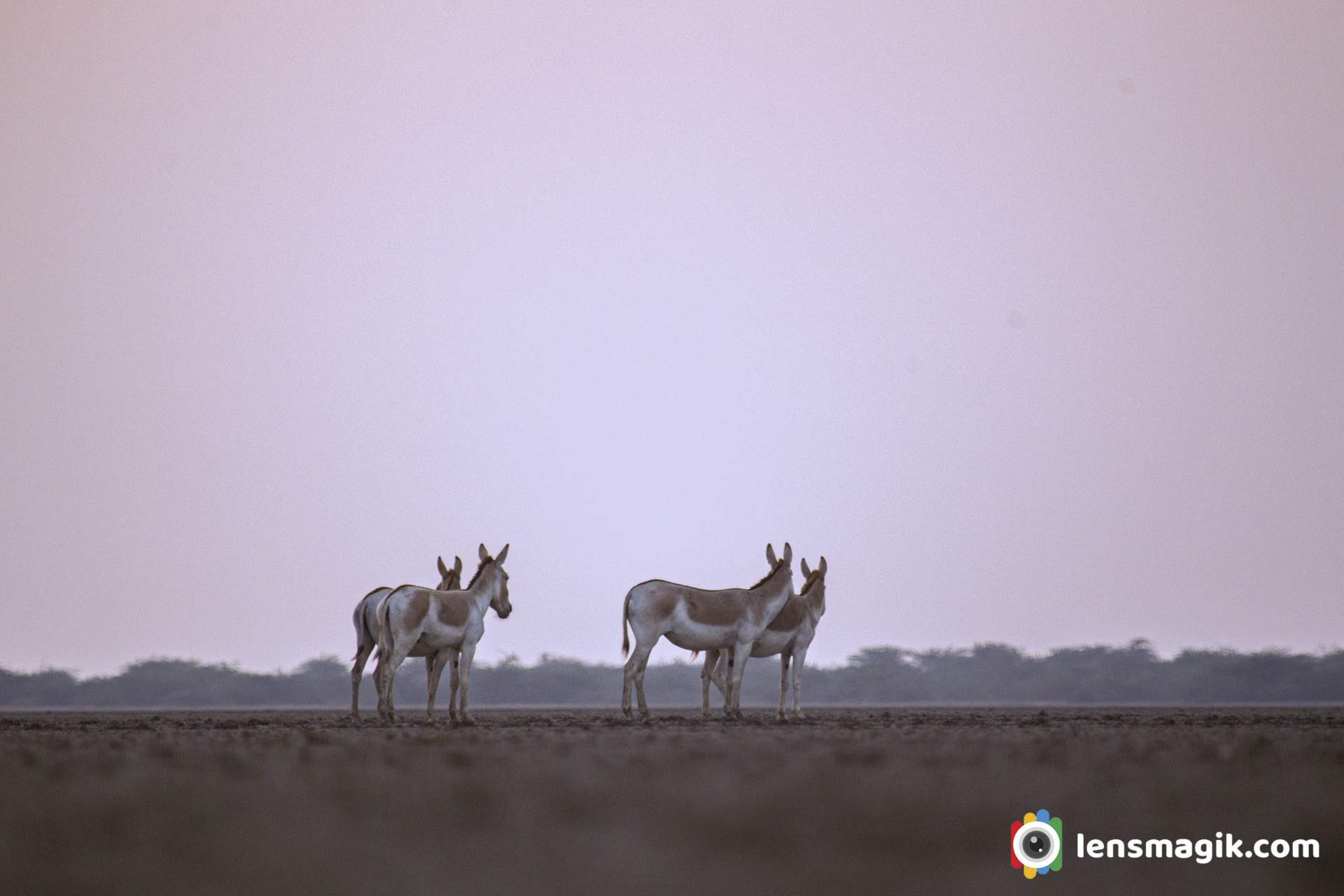
The running wild asses make frame very attractive. Also a golden light with Indian Wild Ass looks beautiful frame and theme photo of colors of rann.
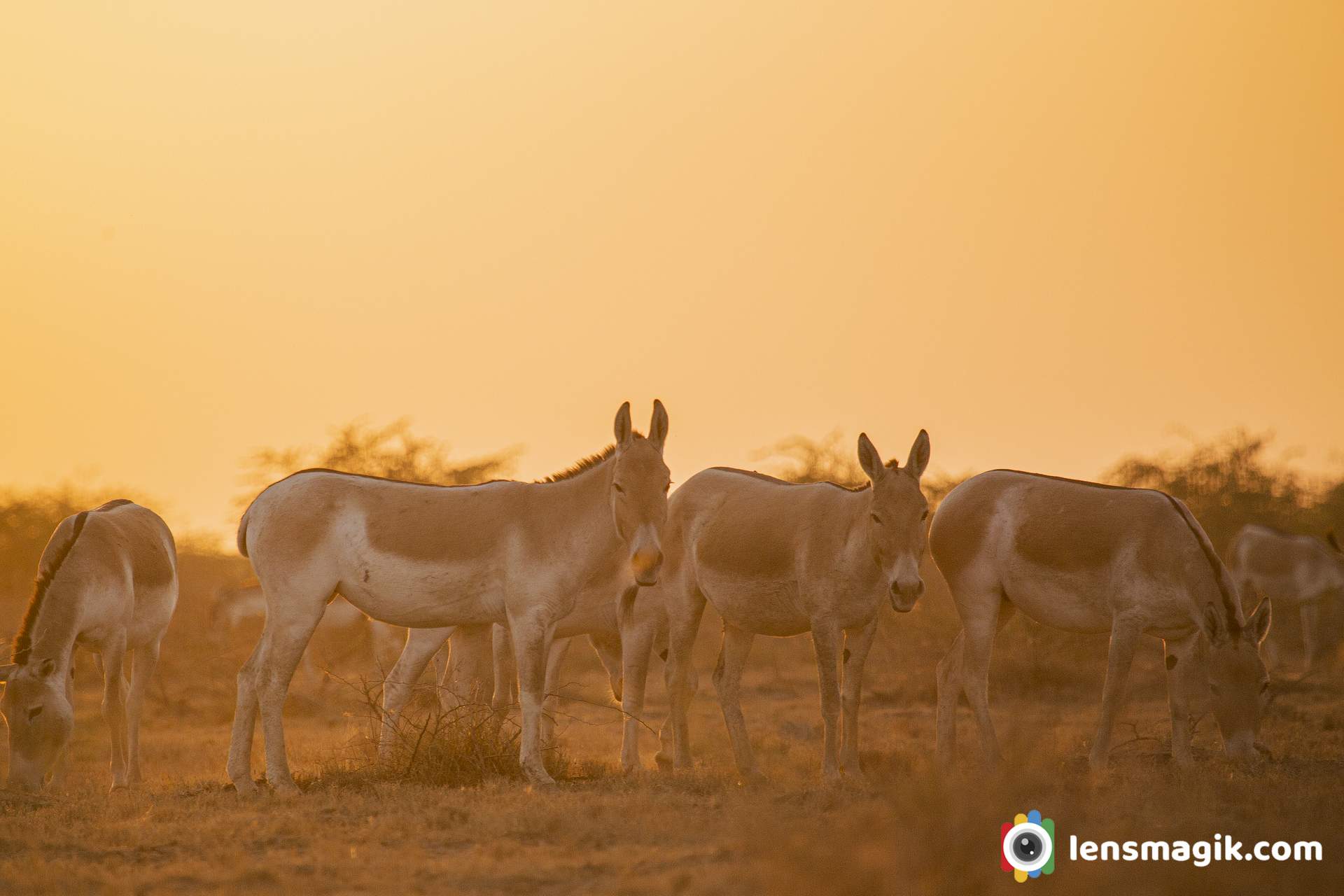
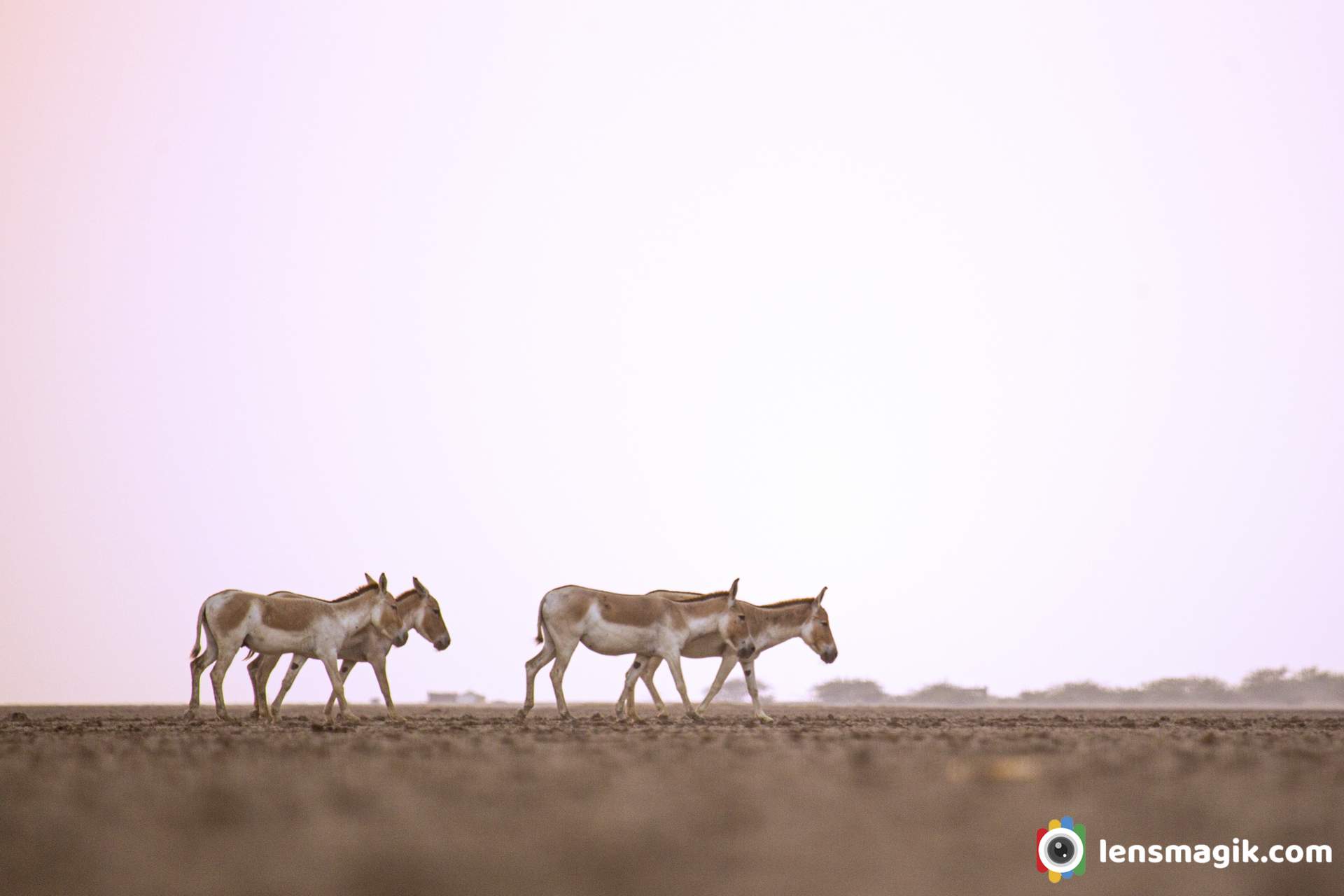
Best time to visit LRK is November to march. You can go from Bajana wildlife sanctuary gate to enter.
LRK : Little rann of Kutch
Nearest village :: DASADA, BAJANA
From Ahmadabad to LRK distance about 100-120 km
Gear used : Canon 1000D, Canon 6D, Canon 100-400mm lens
Read more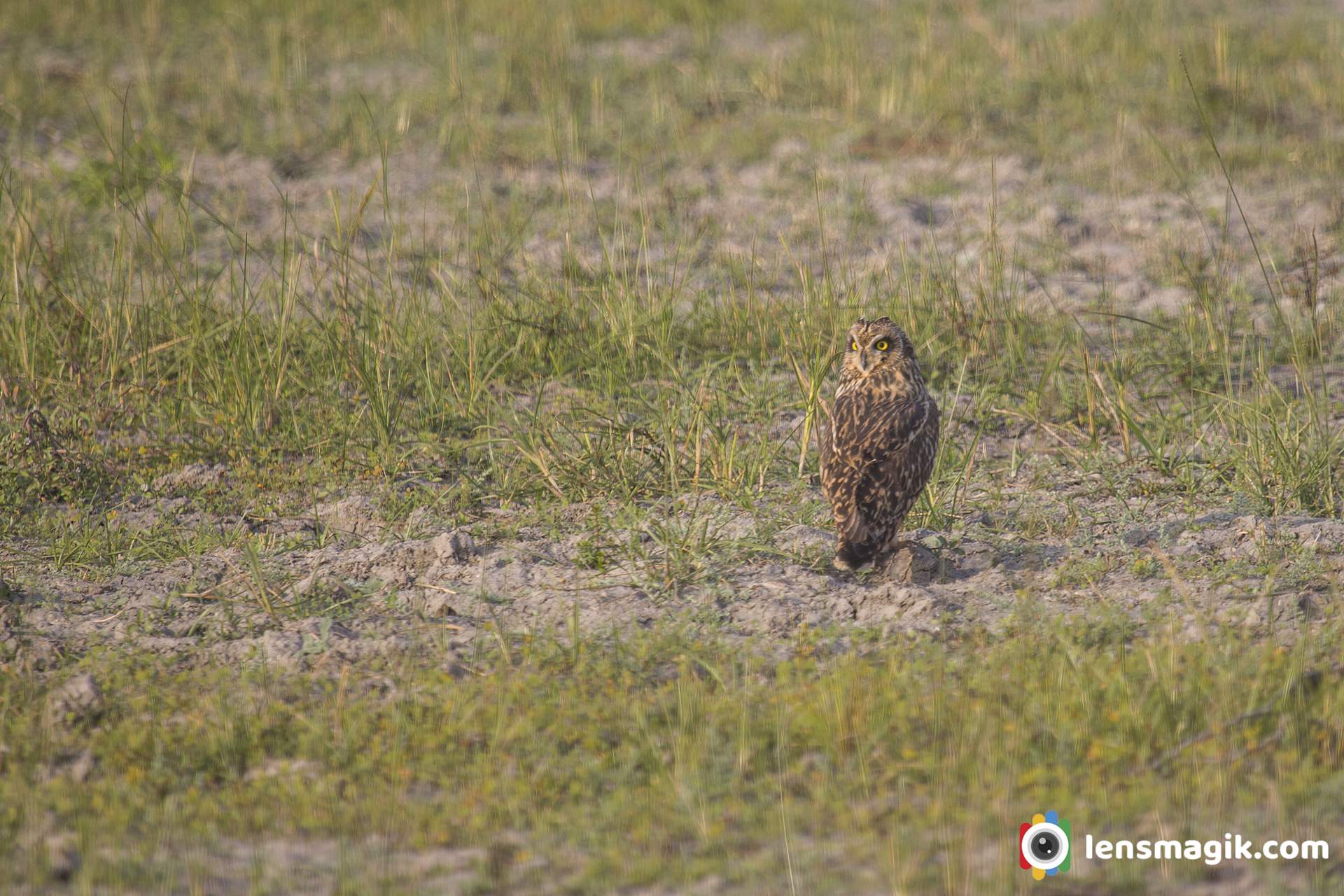
Short Eared Owl is generally found in grassland. It is in family Strigidae. Its ear cannot be visible in regular pose so may be it called short eared owl. You can see its ears only in defensive pose of it. It is generally found in open area and grasslands. But the color of feathers is simillar to dry grassland so to find it is very difficult in grassland. In Gujarat it found in Little Rann of Kutch mostly and easily. Little rann of kutch is very popular place for birding and specially for Wild Ass.
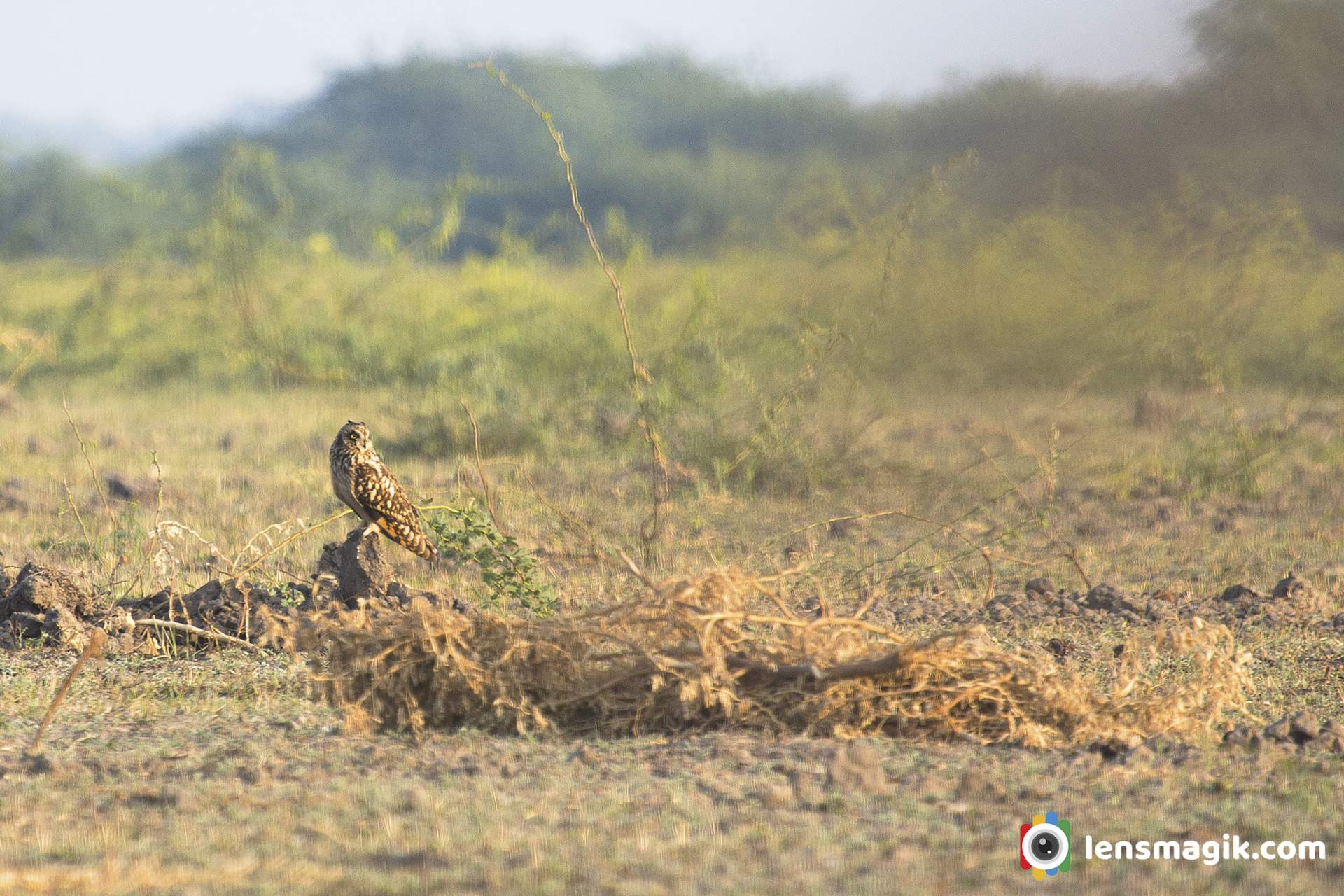
Description of Short Eared Owl :
- It is medium size owl.
- Length of short eared owl is 34-43 cm and weight is 475 gm aprrox.
- It has short , black and strong bill.
- It has big head, large eyes, wings are broad and a short neck.
- It is described as moth and bat like in flight.
- Its wingspan almost 33 - 43 inch.
Some Facts to know about Short Eared Owl :
- It is simillar in looks with Long Eared Owl just difference is ear tuff of long eared owl can easily visible.
- It breeds in Europe, North and south America , Asia and Caribbean etc.
- It is known to relocate to area of higher population of its food.
- Breeding season is once in a year around in March or April in Northen Hemisphere.
- It nests on ground in medow and it made by grass and vagitations.
- They hunts mostly at night and mouse or rat is favorite food of its. It also feed small mammals like squirell, mole, rat, bats etc.
- It is listed endangered in Mexico.
- 4 to 7 eggs approx. found in Short eared owl clutch and eggs incubated by female in 20-35 days approx.
- It is partially migratory.
- Call of short eared owl is waowk....waowk......waowk or toot.....toot......toot . During breeding it sounds also like eeee - yerp sound.
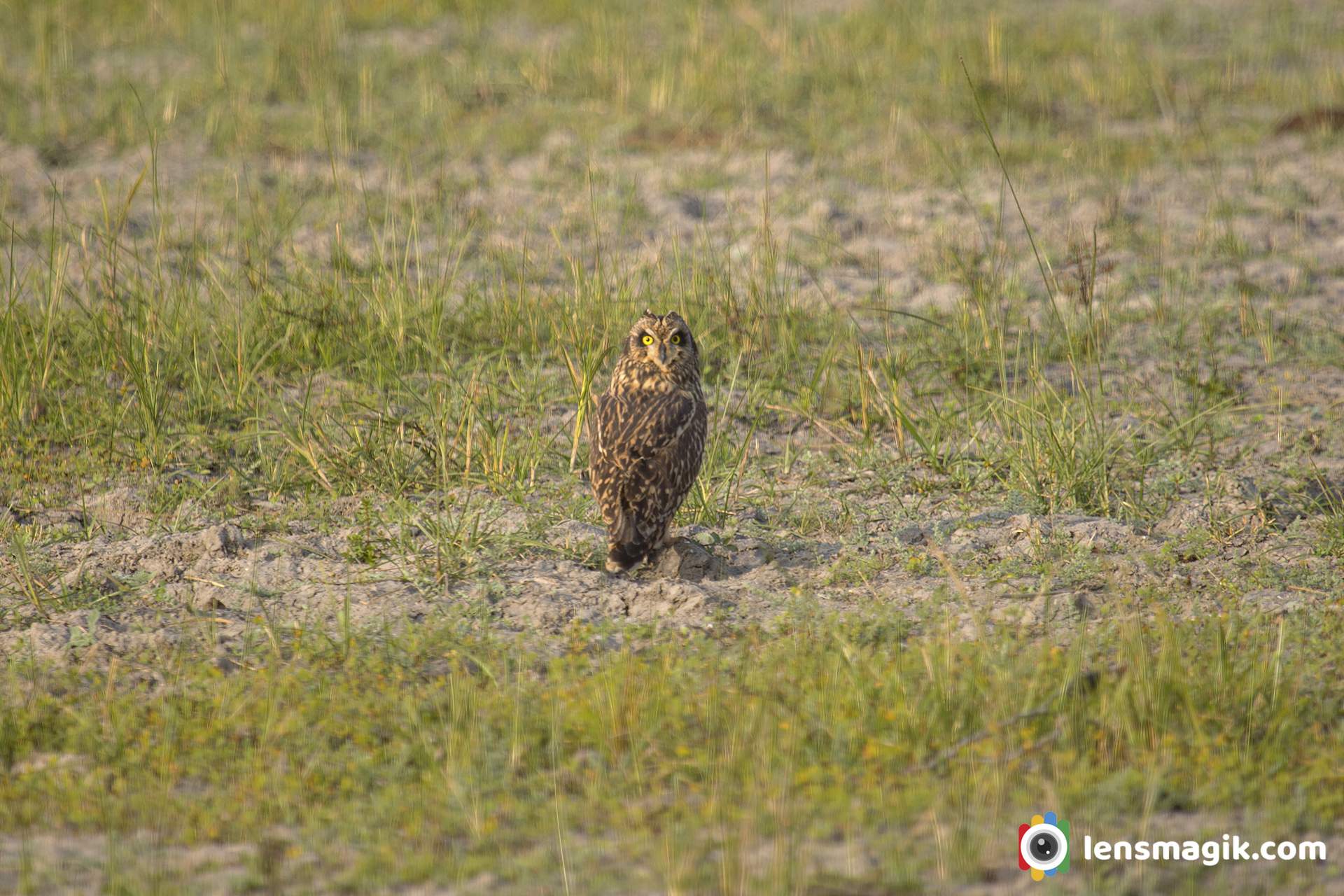
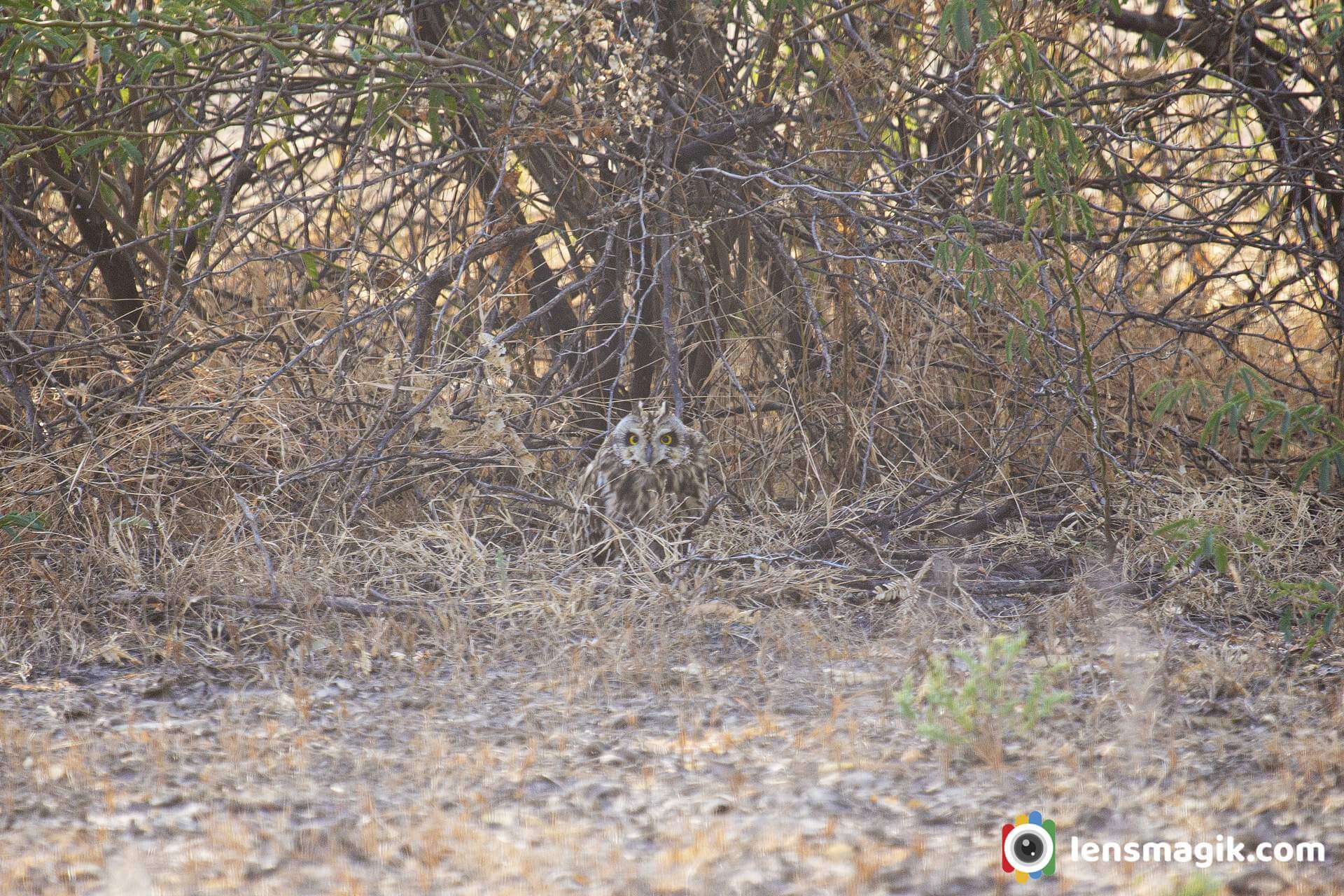
Birds of Little Rann of Kutch :
Little rann of kutch is very well known for Wild Ass. But its is heaven for birding too. Lots of migratory birds and Specially Raptors found during winter season . Short Eared Owl is also resident bird and breeds here too. Lrk is sanctuary that you can take 360 degree horizons view. Beautiful sunset and sunrise locations here. There are also many outskirts area near LRK is good for birding and horizons photos.
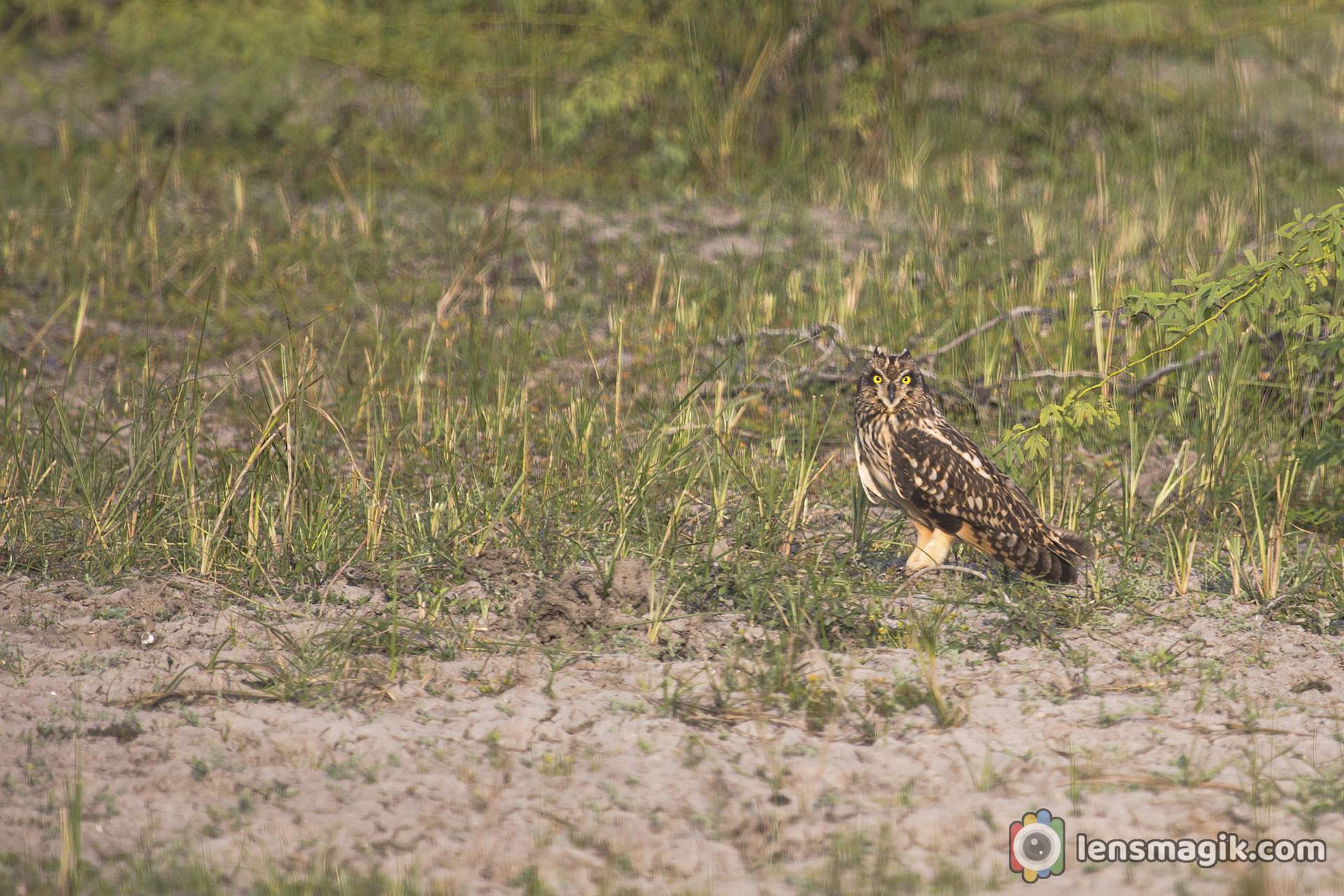
How to Reach LRK : Little rann of kutch is about 165 km from Ahmedabad. You can go by own car inside sanctuary.
Nearest Airport is Ahmedabad.
Gear Used : Canon 6 D, Canon 100-400 mm lens
Read more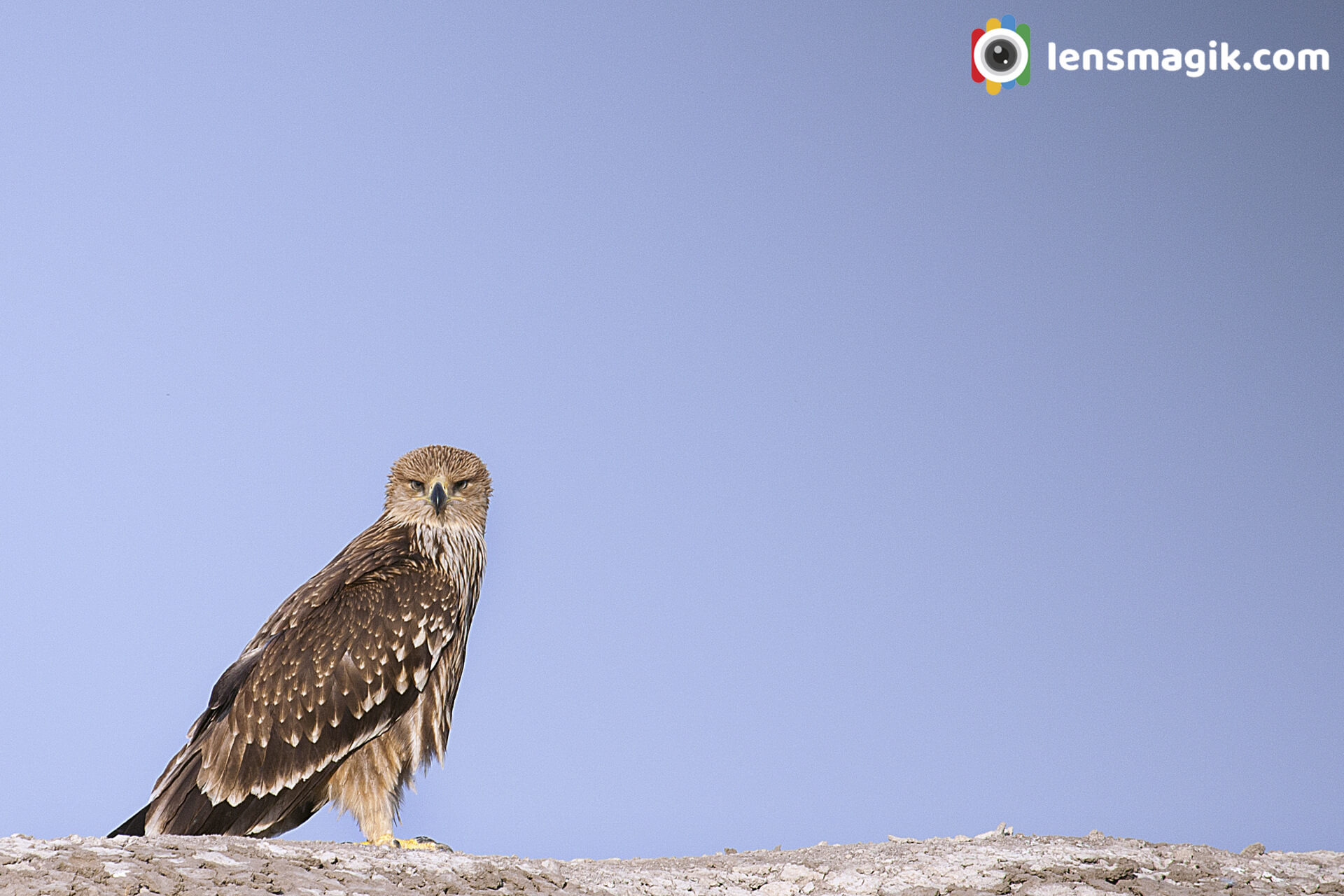
Eastern imperial eagle is member of Aquilinae family. It is also called booted eagle. It is winter visitor in LRK Gujarat, India. It migrate form southeast Europe. It also breeds in Southeast Europe. My first siting of Eastern Imperial Eagle at LRK ( Little Rann Of Kutch ) Gujarat. There are also other migratory raptors are found here. Little rann of Kutch sanctuary is known for Raptors during winter season.
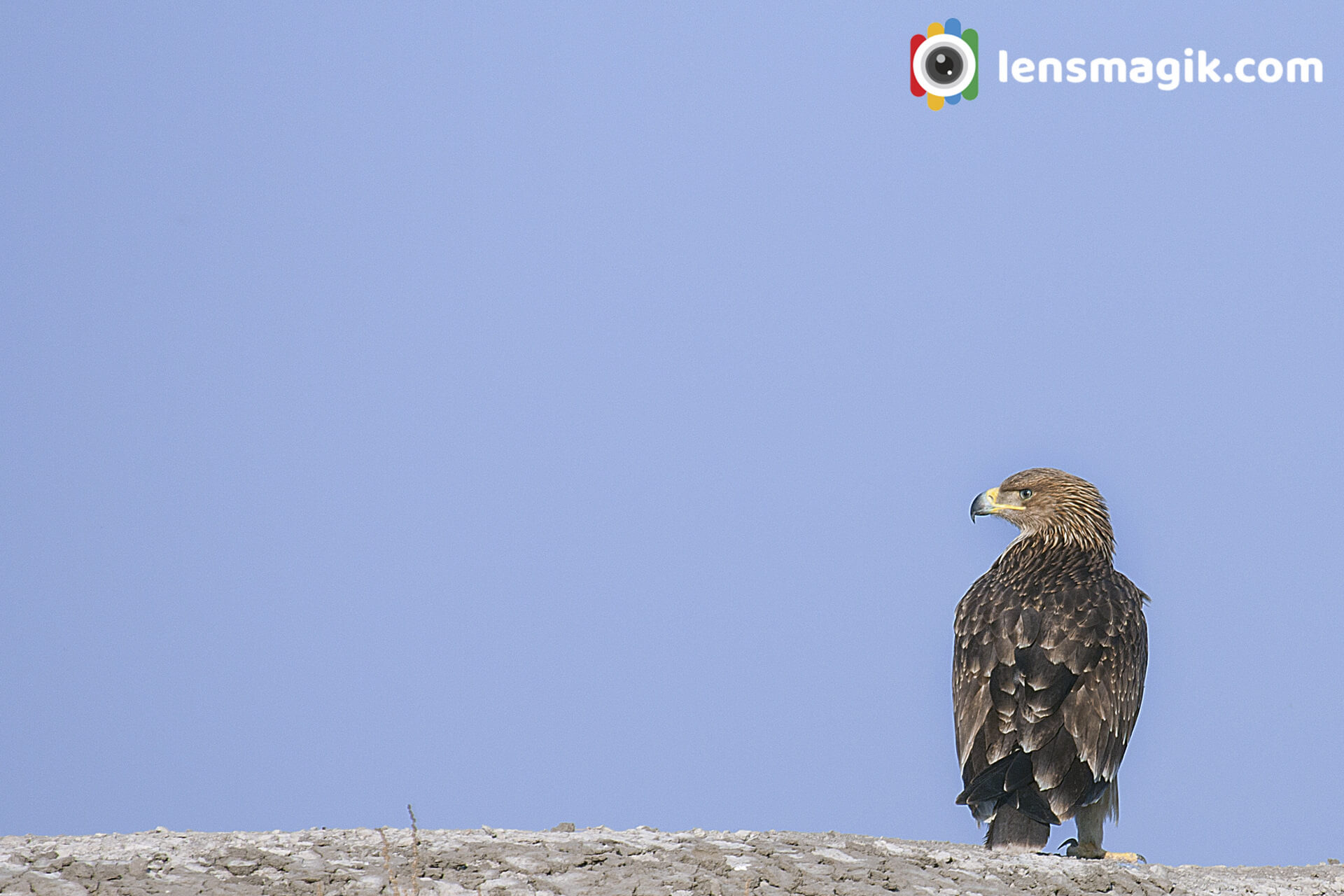
Description of Eastern Imperial Eagle :
It is large in size and dark in color. White spots on its wings and wings color is dark grey. It has long and thick neck, square tipped tail and well feathered strong legs. Generally Male are little smaller than female. In talk of Eastern Imperial Eagle size length is around 70-90 cm . Average wing spawn is about 5 to 9 ft. Eastern Imperial Eagle is a predator and also called Birds Of Prey. It generally hunts small mammals, reptiles and birds.
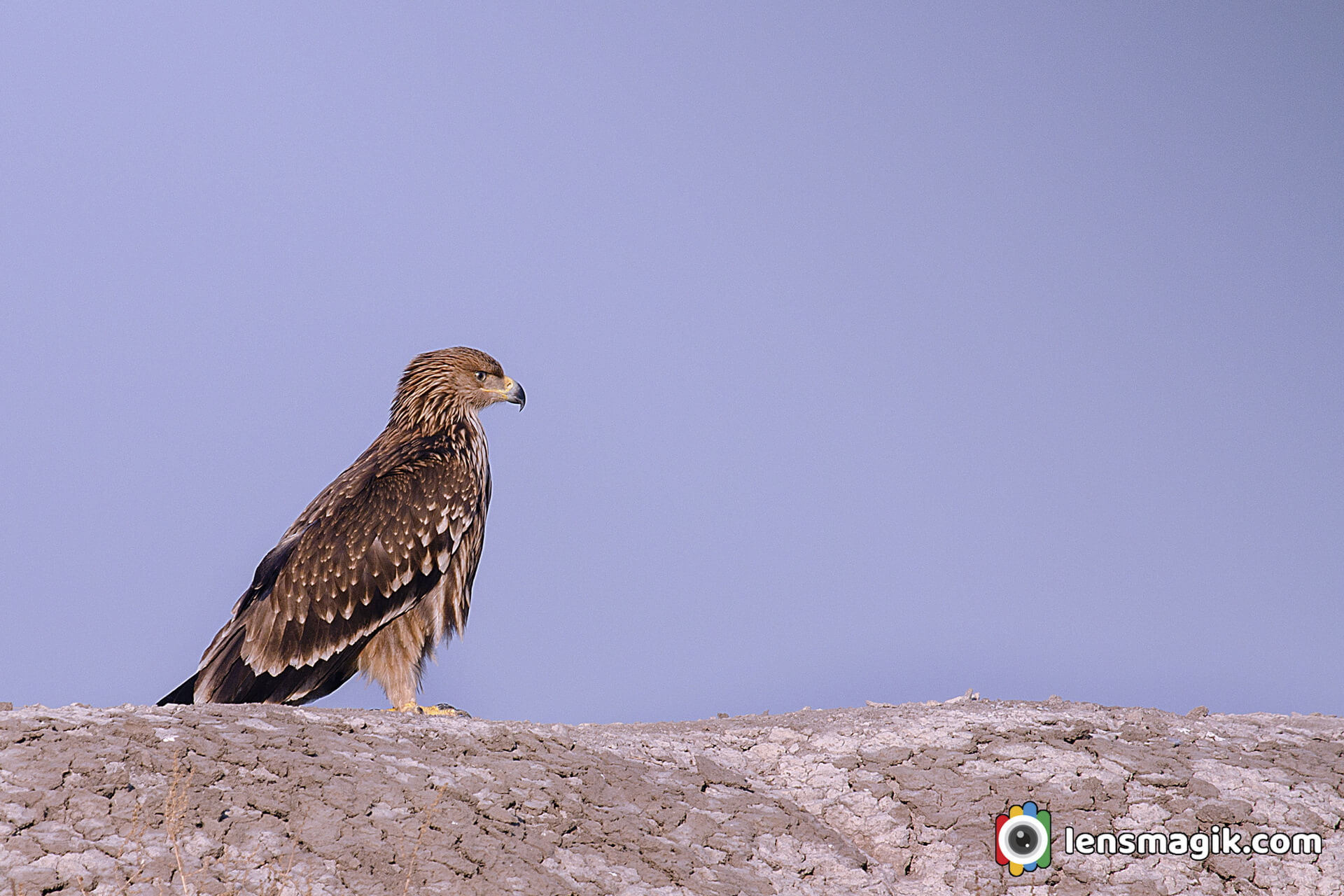
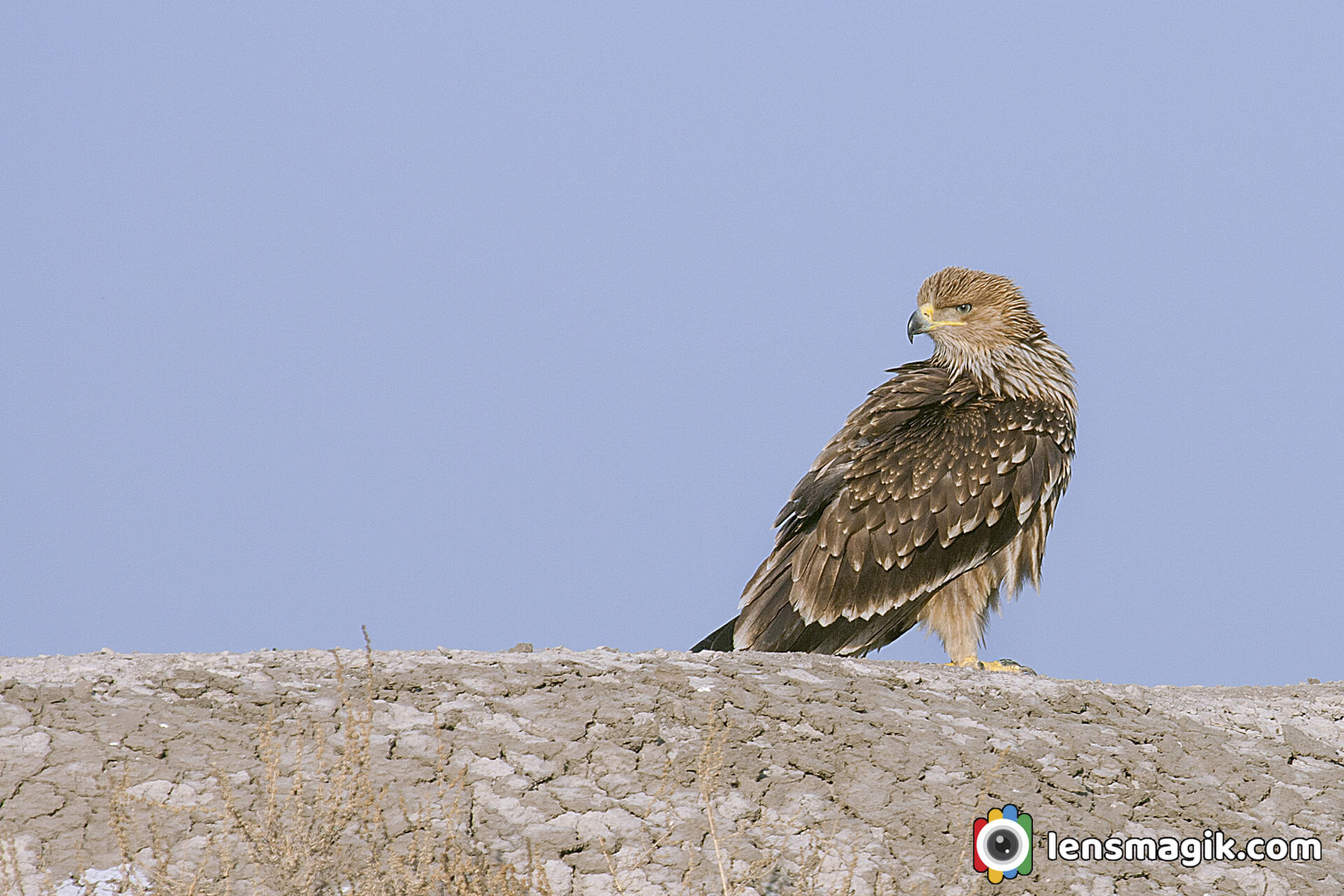
Some facts about Eastern Imperial Eagle :
- There may be confusion between Eastern Imperial Eagle and Golden Eagle.
- Difference is Eastern Imperial Eagle is smaller then Golden Eagle. Also Its head is larger than golden eagle.
- Eastern Imperial Eagle migrate from southeast Europe to middle east .
- Some Eastern Imperial Eagle is breed at Lake Baikal will migrate to south Asia.
- In winter Eastern Imperial Eagle found in Gujarat, Bihar, Madhya Pradesh and Jharkhand.
- Eastern Imperial Eagle weight around 2.5 kg
- Eastern Imperial Eagle bird call is owk owk..... gok gok or kraw kraw
- Best time to catch Eastern Imperial Eagle in Gujarat is November to February.
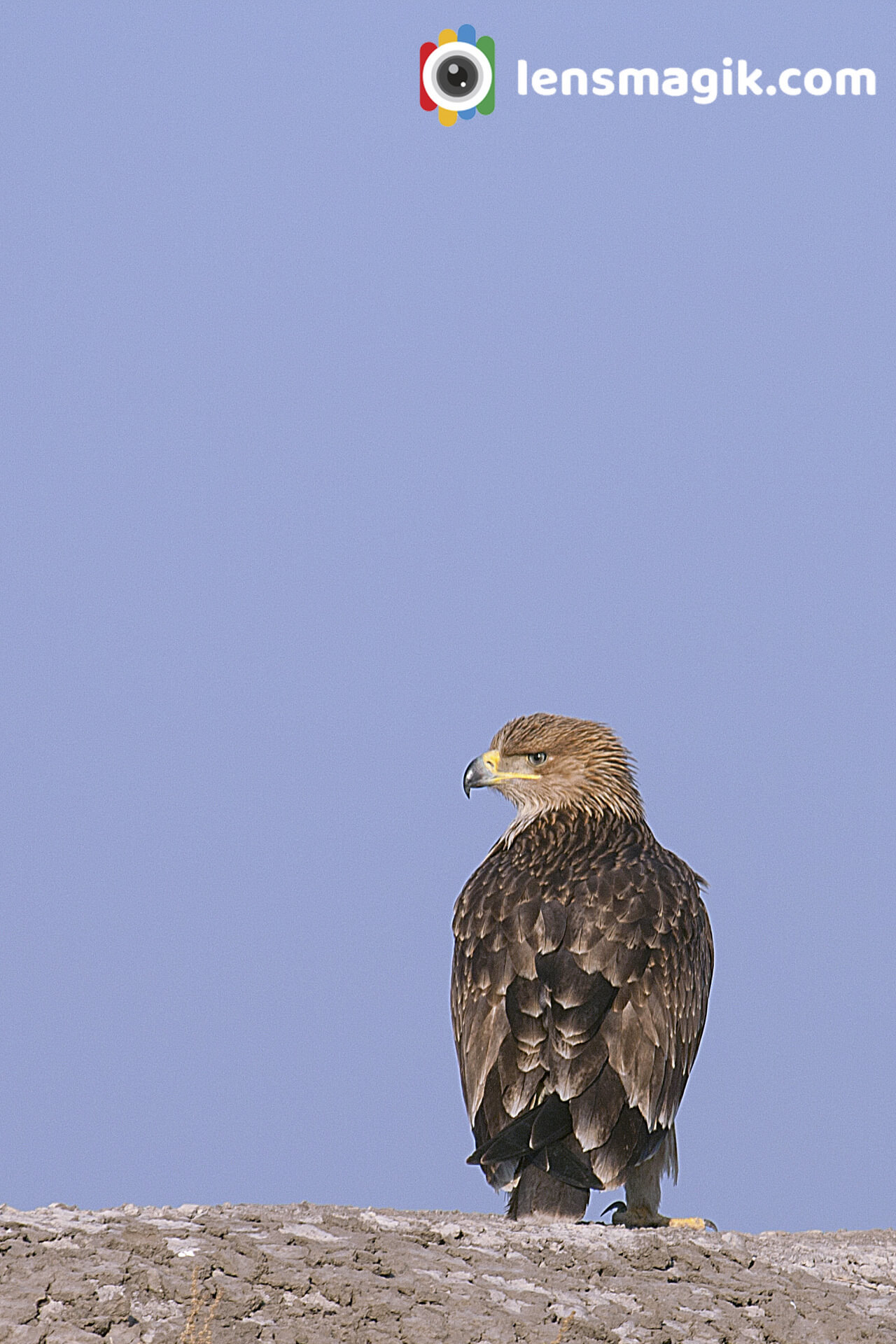
About Little Rann Of Kutch :
Little Rann Of Kutch is very well known for Raptors and migratory birds. During winter season there are lots of migratory birds like Flamingo birds, Pelican, Goose birds etc and also Raptors, falcons, harriers etc. So that LRK is beautiful place to visit for wildlife lovers in Gujarat. Also small birds are good attractions for bird watchers of Gujarat. And the best think is the Horizons Of LRK. A beautiful sunset and sunrise views from LRK you can see a flat surface looks beautiful. Amazing wetland areas also in LRK and also outskirts of LRK.
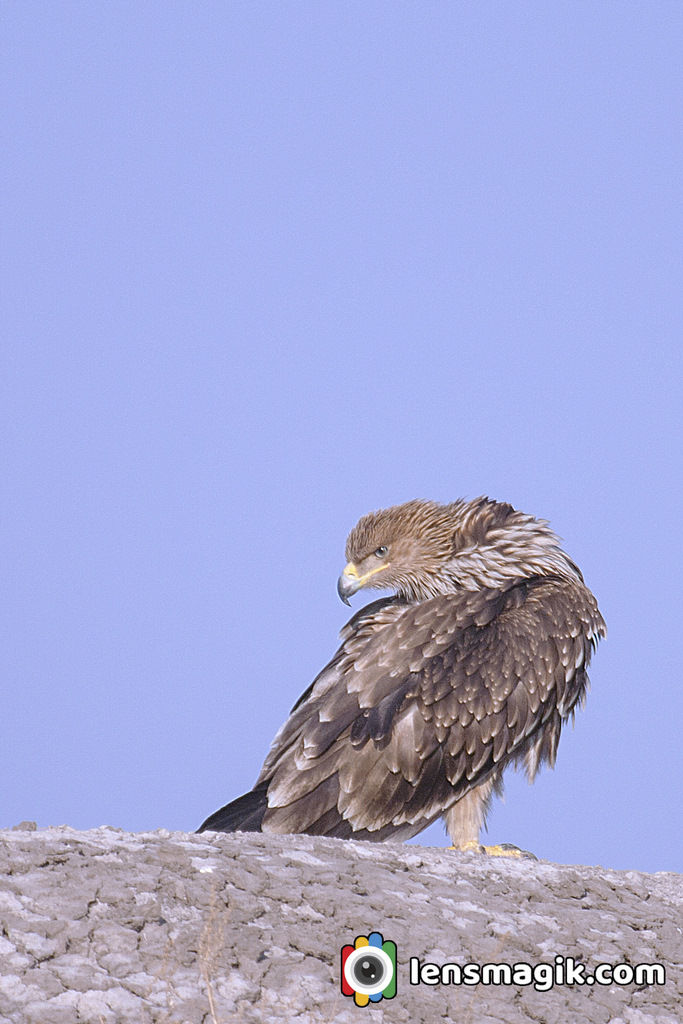
Little rann Of kutch is about 120 km from Ahmadabad. You can go Bajana Forest Entry gate for enter in LRK. Also some outskirts village area where you can find good wetlands for birds and sunset or sunrise shooting.
Location : Little Rann of Kutch
Best time to Visit LRK : November to March
Nearest Airport is Ahmedabad.
Gear Used : Canon 1000 D with Canon 100-400 mm lens.
Read moreAccentor is a small bird of prunellidae family. In India it is generally found in East Sikkim area. It built its nest low in a bush. When i was on a trip to Singalila National Park. I found at sandakphu area. Sandakphu is high altitude place in Singalila National Park located in West Bengal. From here you can see Mt. Kanchenjunga very clear which is highest peak of West Bengal. Lots of Birds here. To visit Singalila Park November to February you can found lots of snow and good landscapes too with snow on Mt Kanchenjunga. Also if you are going for birding you can visit March to May/June Month is the best . It is very cold weather during winter November to February at Singalila National park.
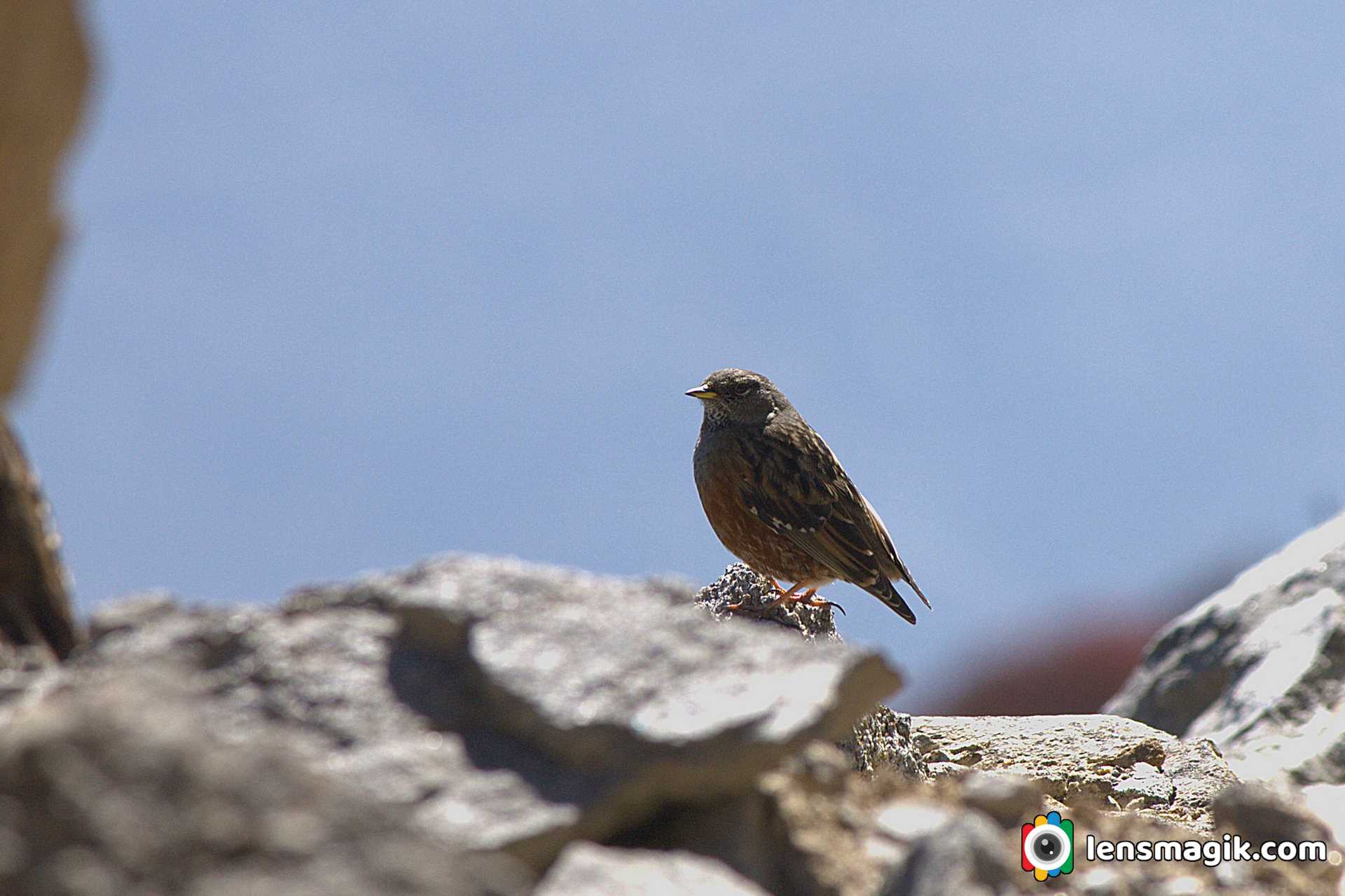
About Alpine Accentor Bird :
- Alpine Accentor bird is robin size bird. Length of bird is around 15 -17 cm.
- Bird just like similar to house sparrow in color with brown back streaked.
- Adult Alpine Accentor have red brown spotting on underparts
- Also adult have grey head too.
- In Asia Accentor found at 2000 m above height. Specially at Himalayas.
- It build nest in bush.
- It laying 3-4 plain (not spotted) eggs of sky blue color.
Singalila National Park :
Singalila national park is located in West Bengal. There are lots of birds in this sanctuary. Also its good for trekking at Sandakphu. From here you can see Mt. Kanchenjunga easily and very closely. Also a beautiful Himalayan Mountain range with snow. Amazing weather very cold in winter and moderate in summer. Summer season is the best for birding at sandakphu.
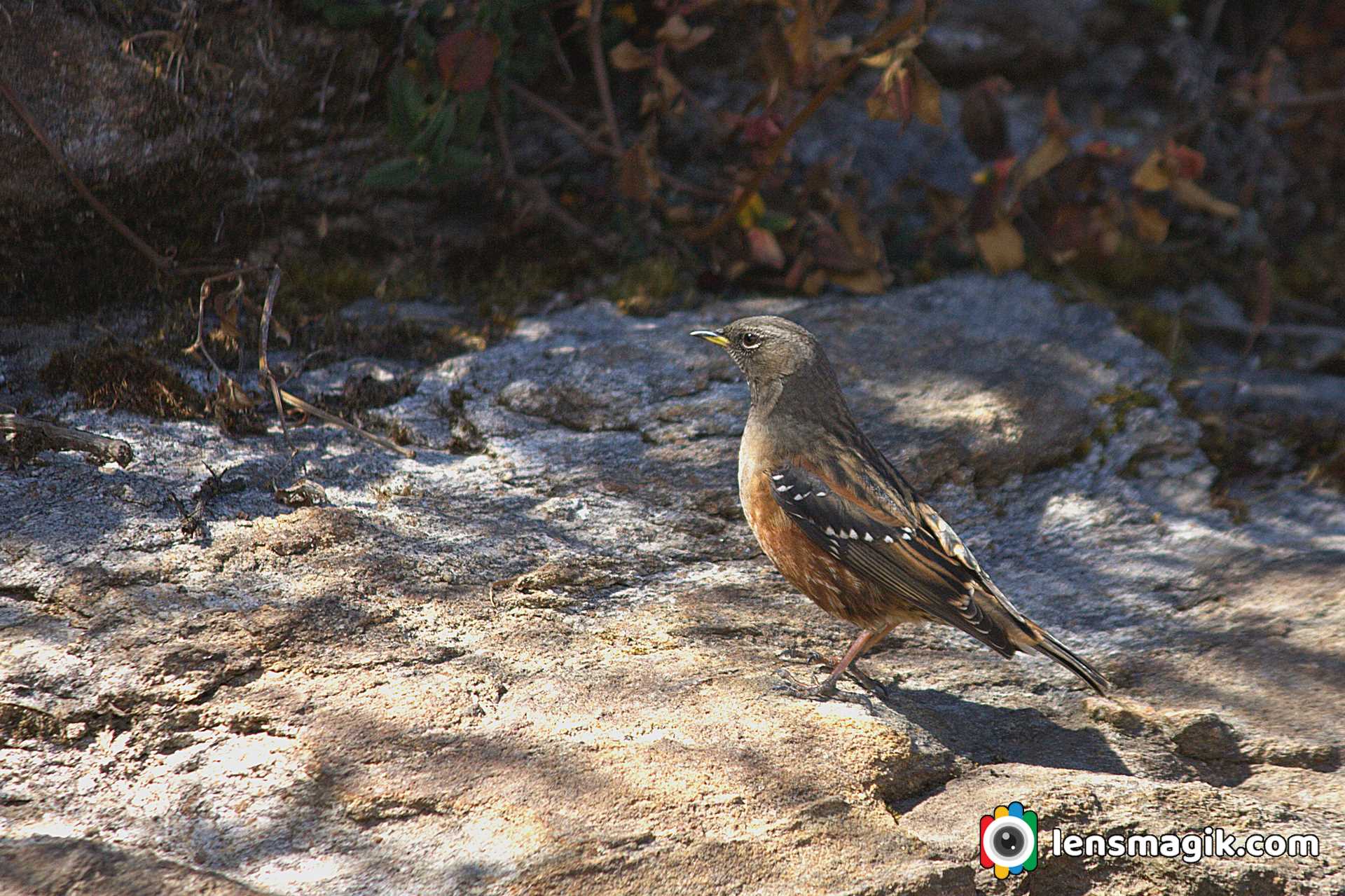
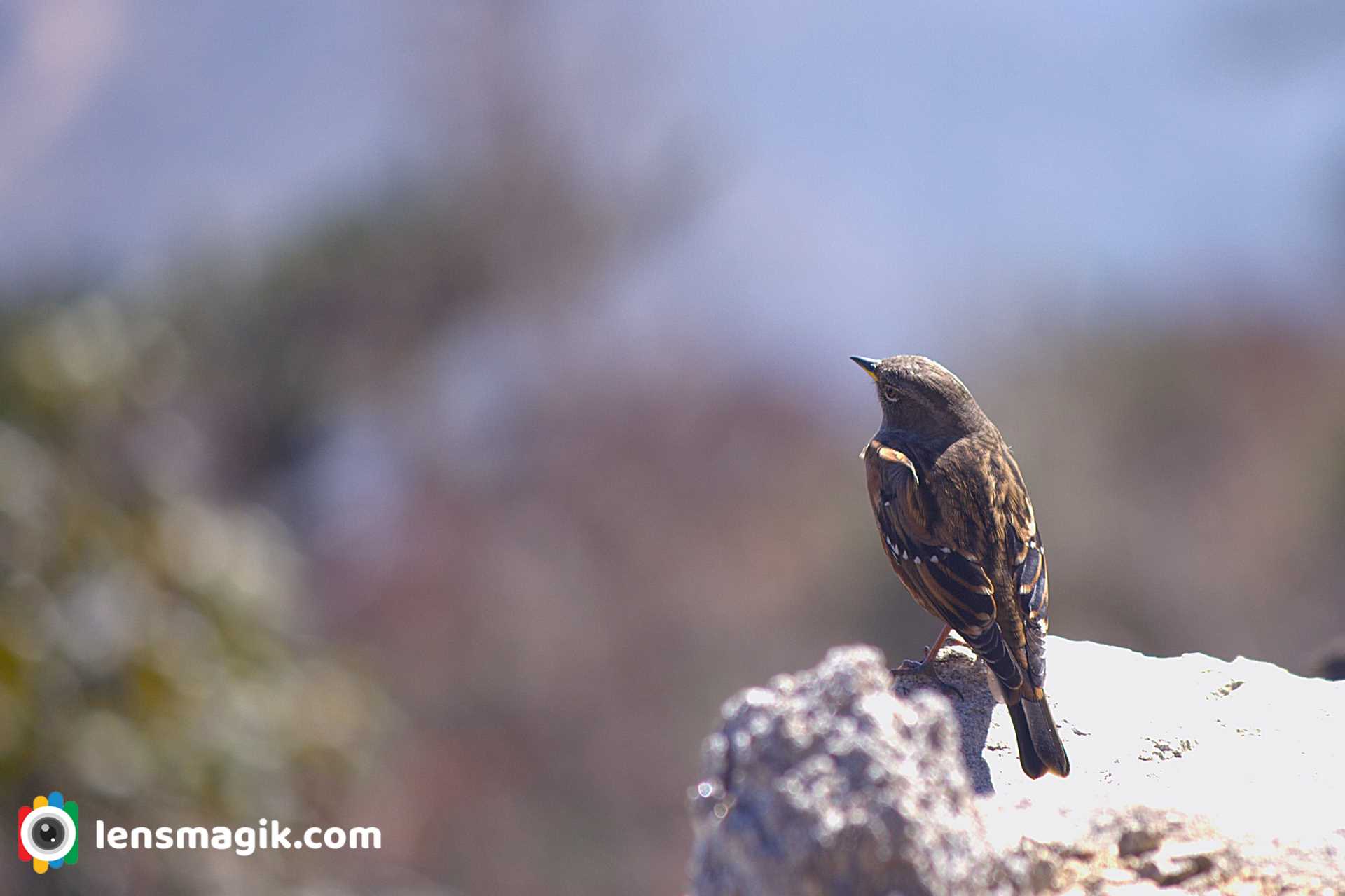
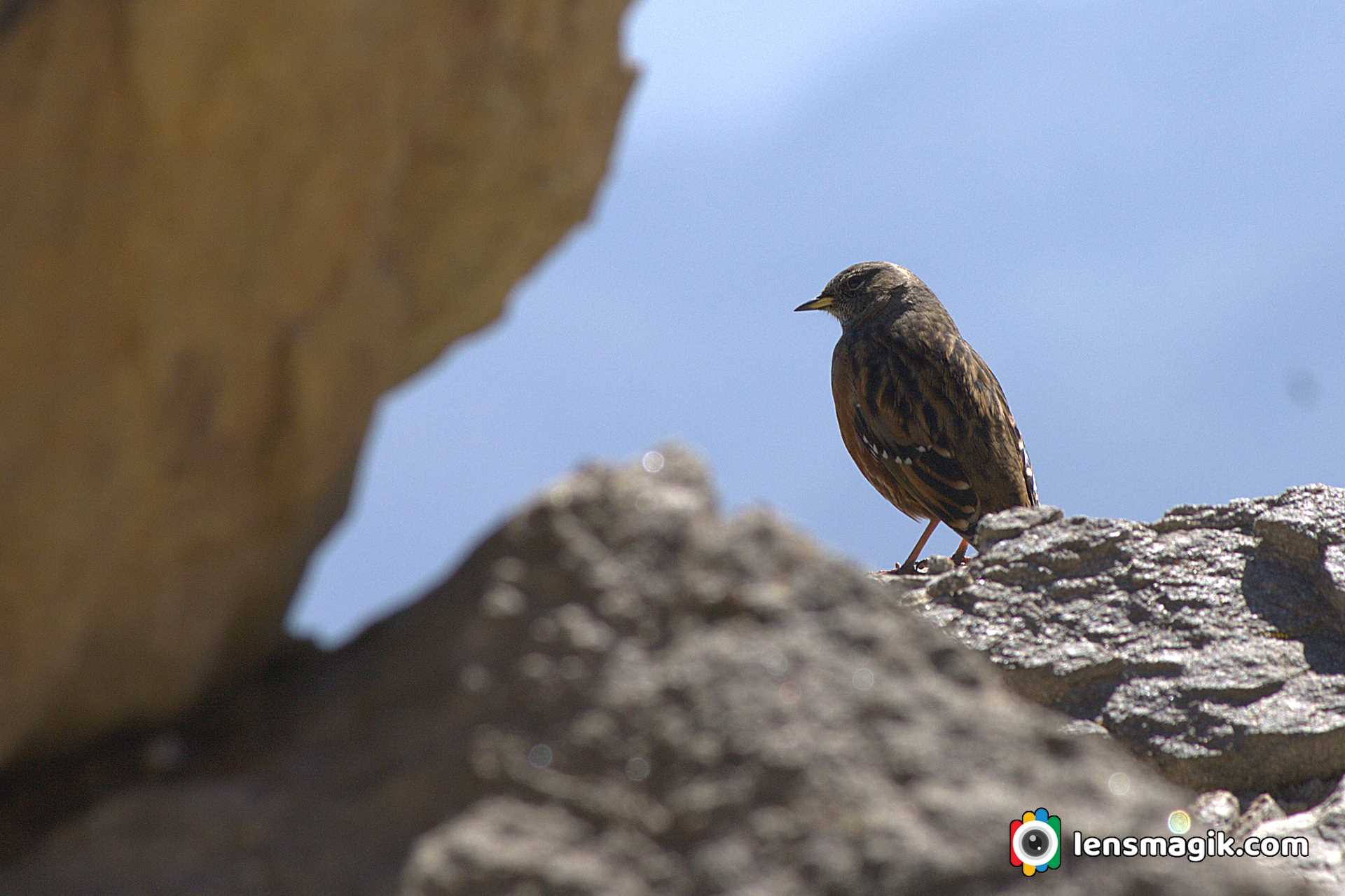
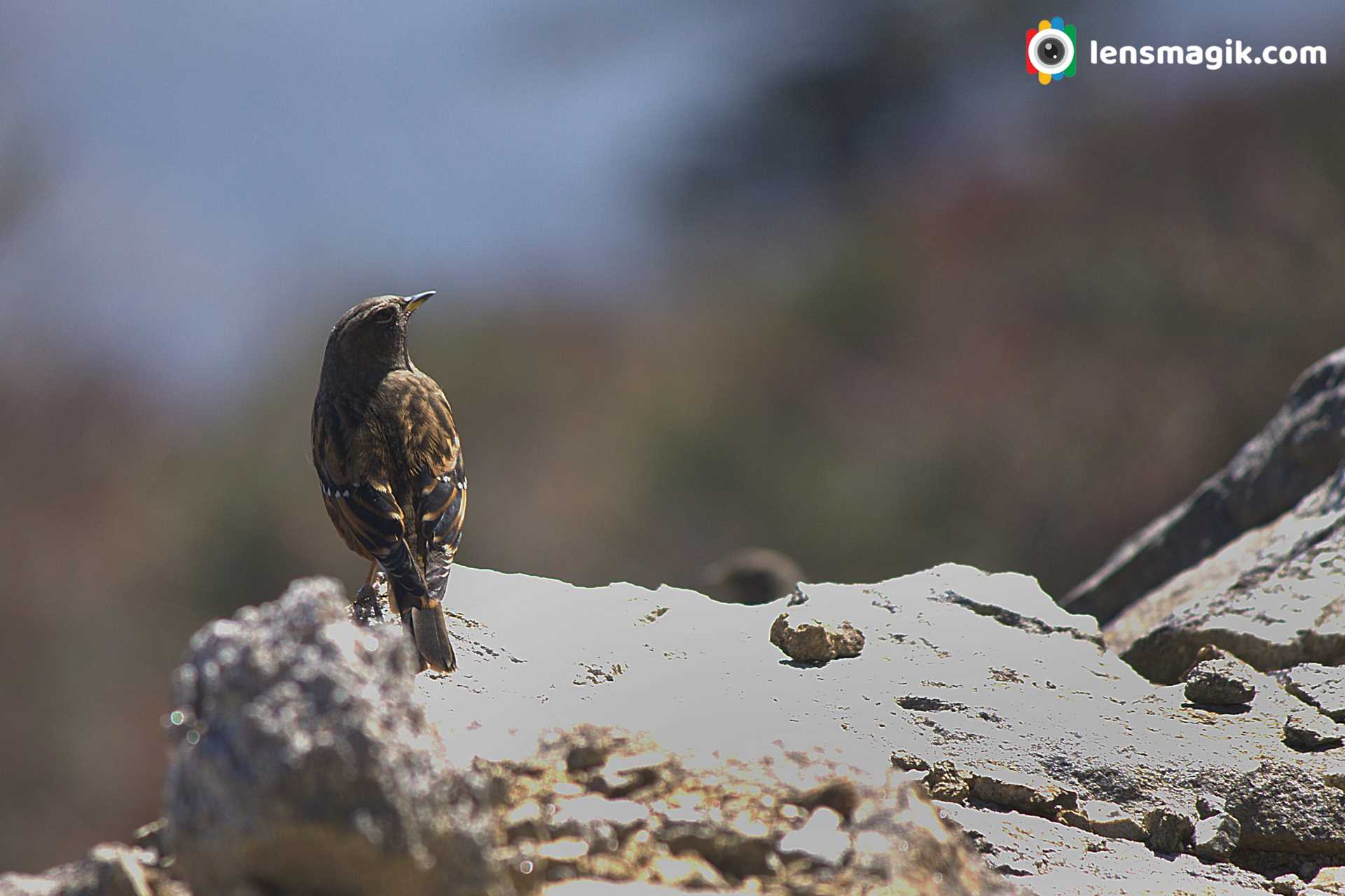
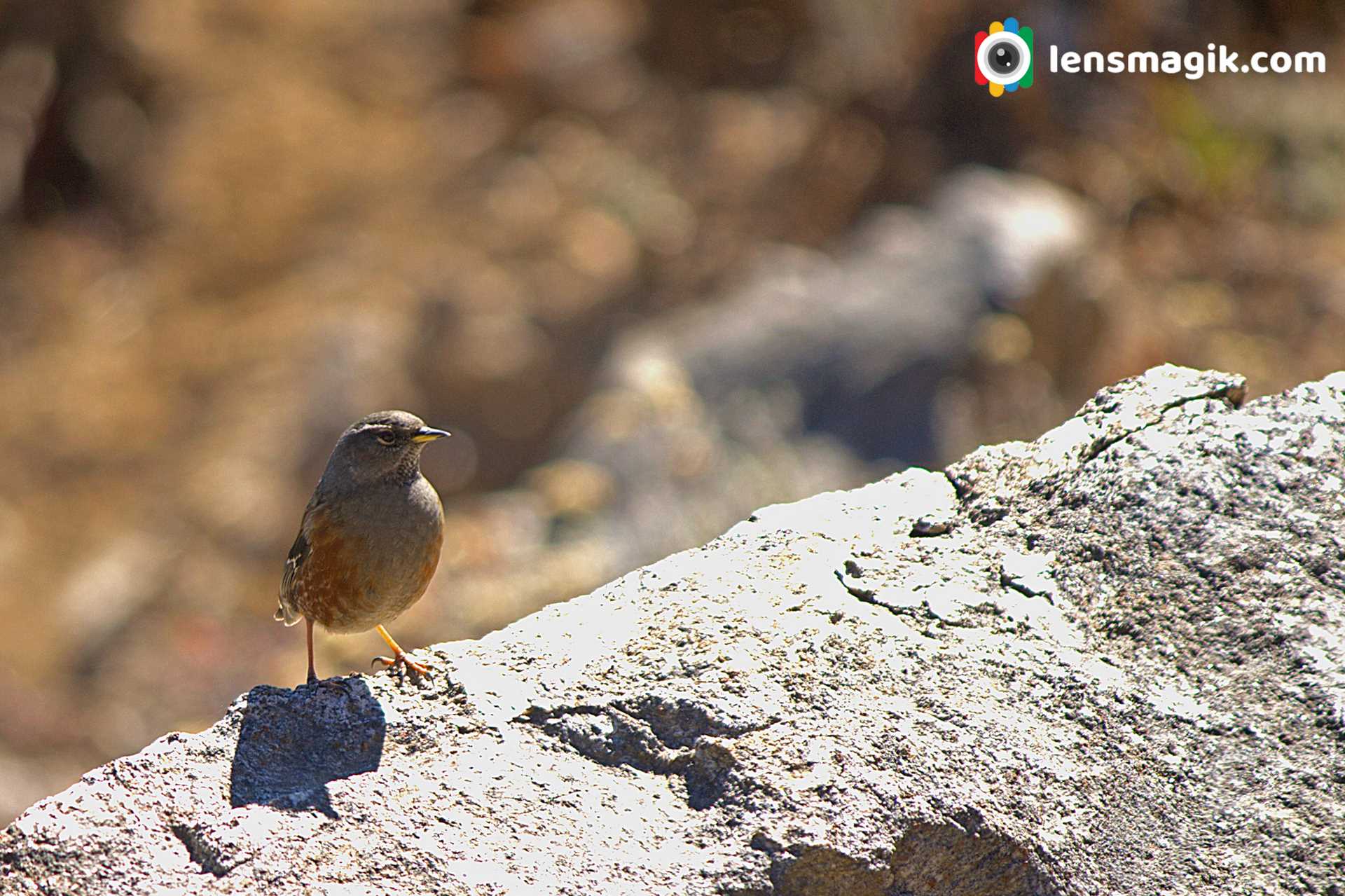
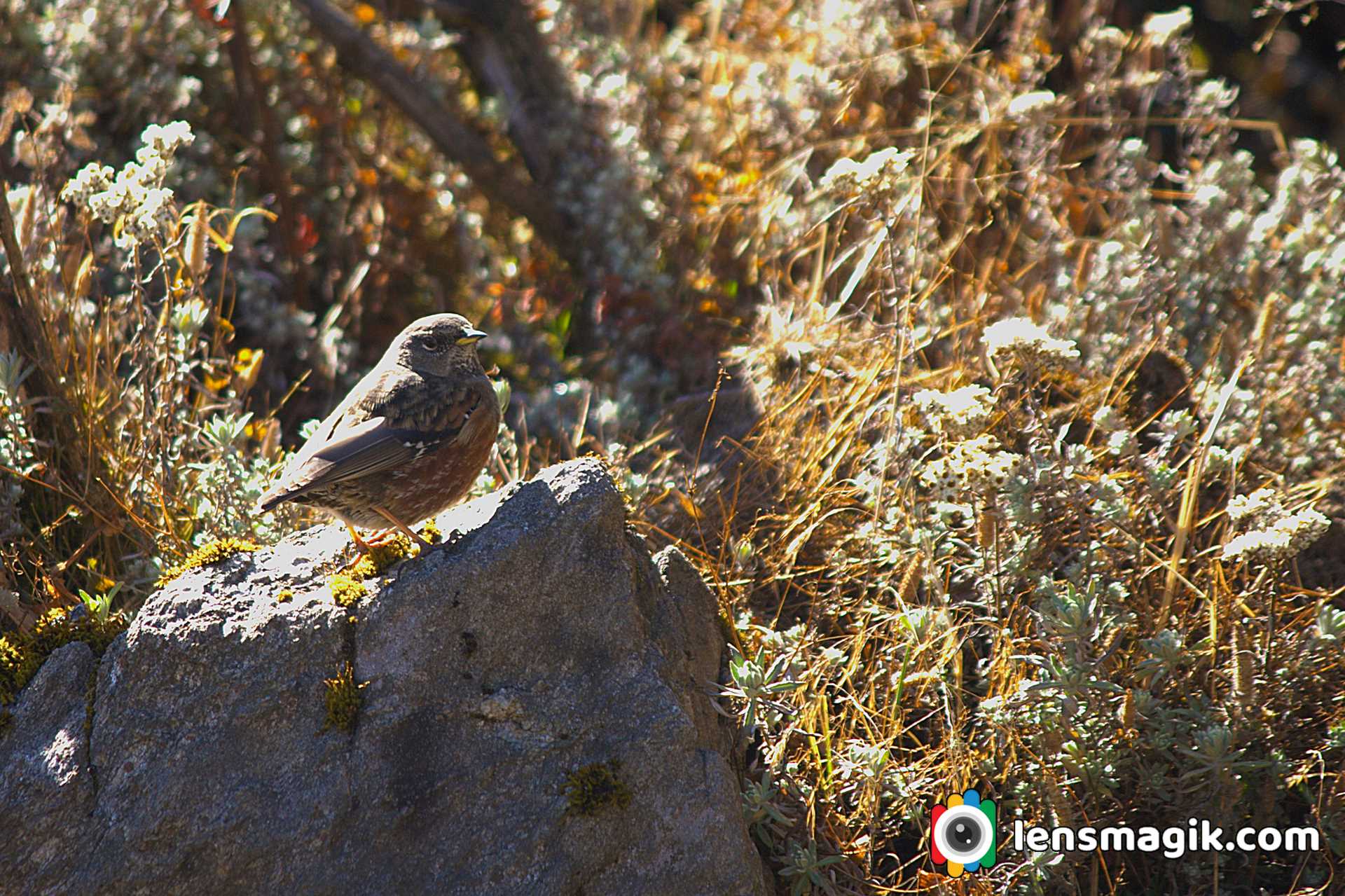
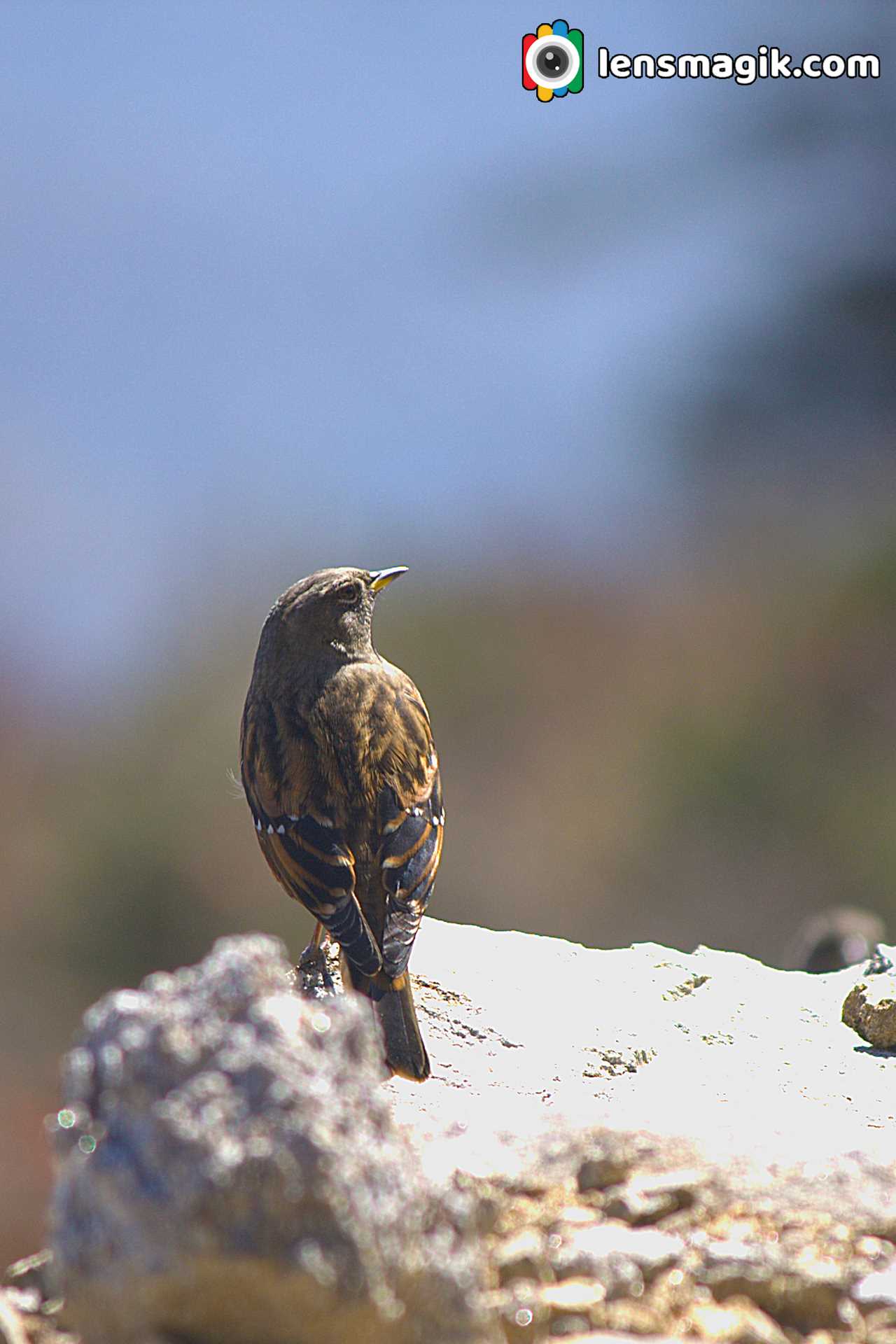
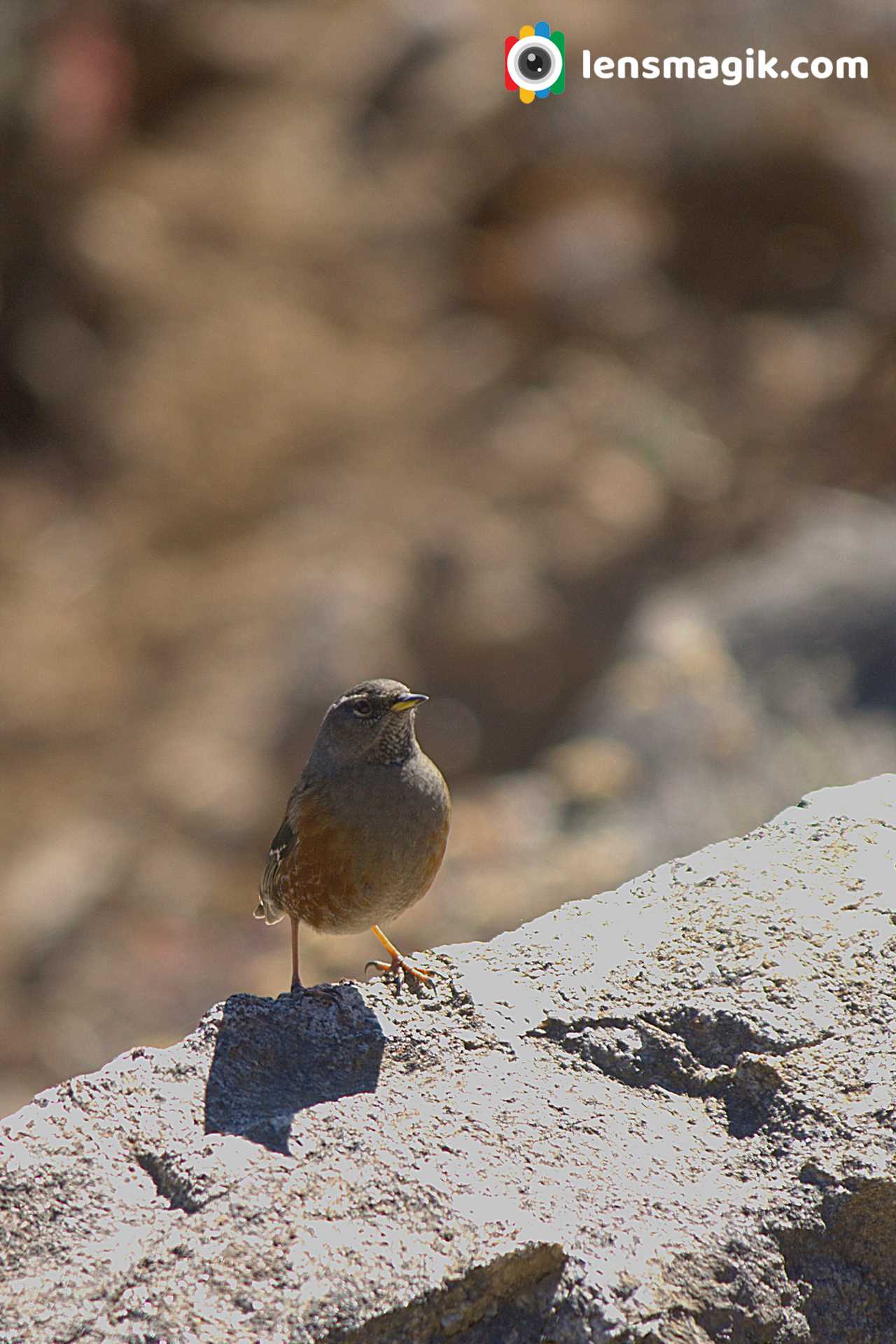
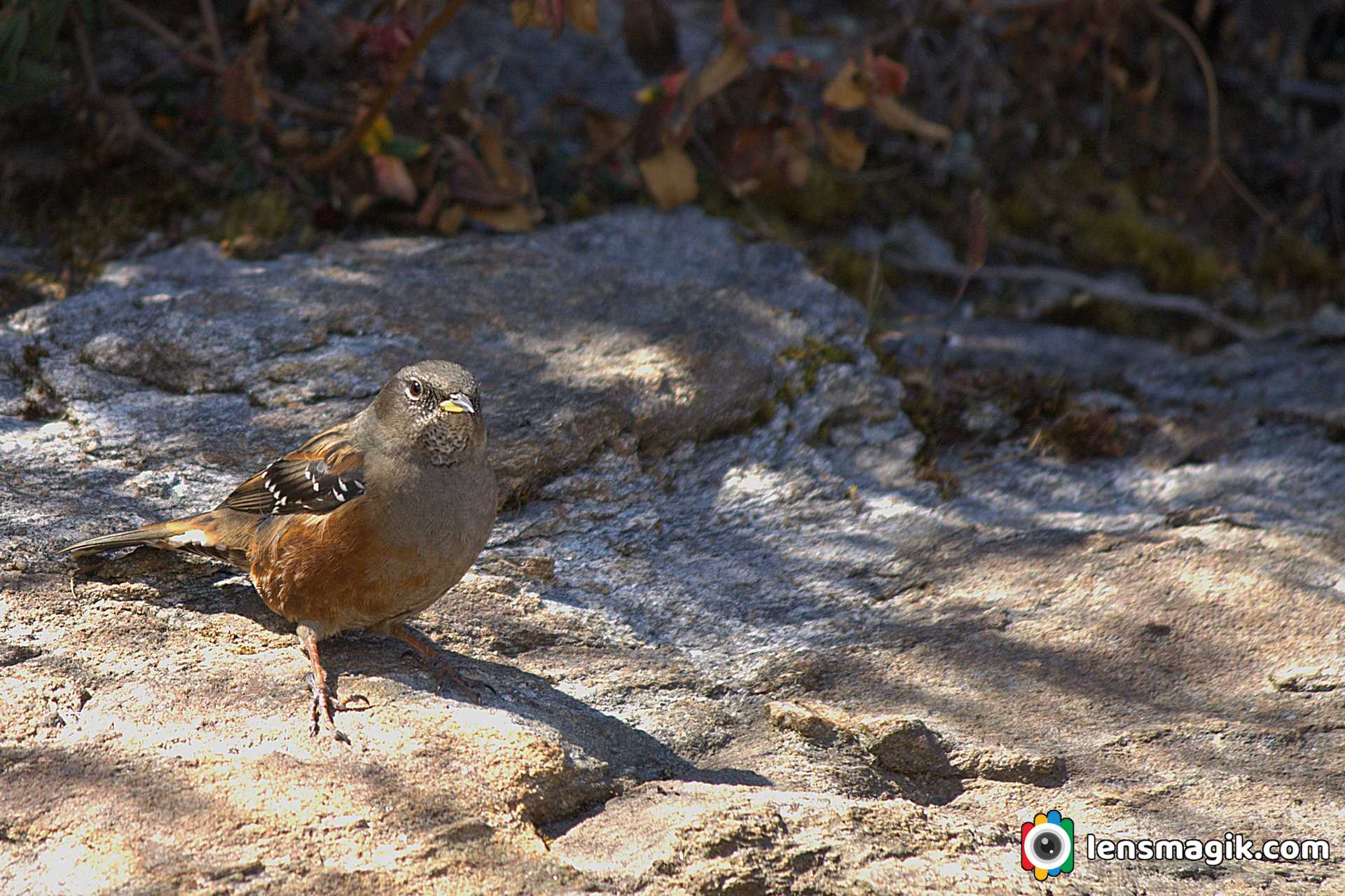
Alpine Accentor bird Binominal Name is Prunella Collaris . Total 9 subspices are recognised of Alpine Accentor bird.
Gear used : Canon 1000 D, Canon 55-250 mm Lens.
Road To Heaven is named to the road from Khavda to Dholavira in Kutch Gujarat. The road is so wonderful and scenery so it known as Road to Heaven . Khavda to Dholavira distance is around 58km but from Khavda there is a single line narrow road passes through small villages around 15-20 km approx. The main road starts after it and it is around 30-35 km approx. strait to Dholavira. Road is under constriction but almost 70-80% work done. The road heading to the city of Harappan Civilization Dholavira which is one of the largest site of Harappan Civilization and Indus valley Civilization.
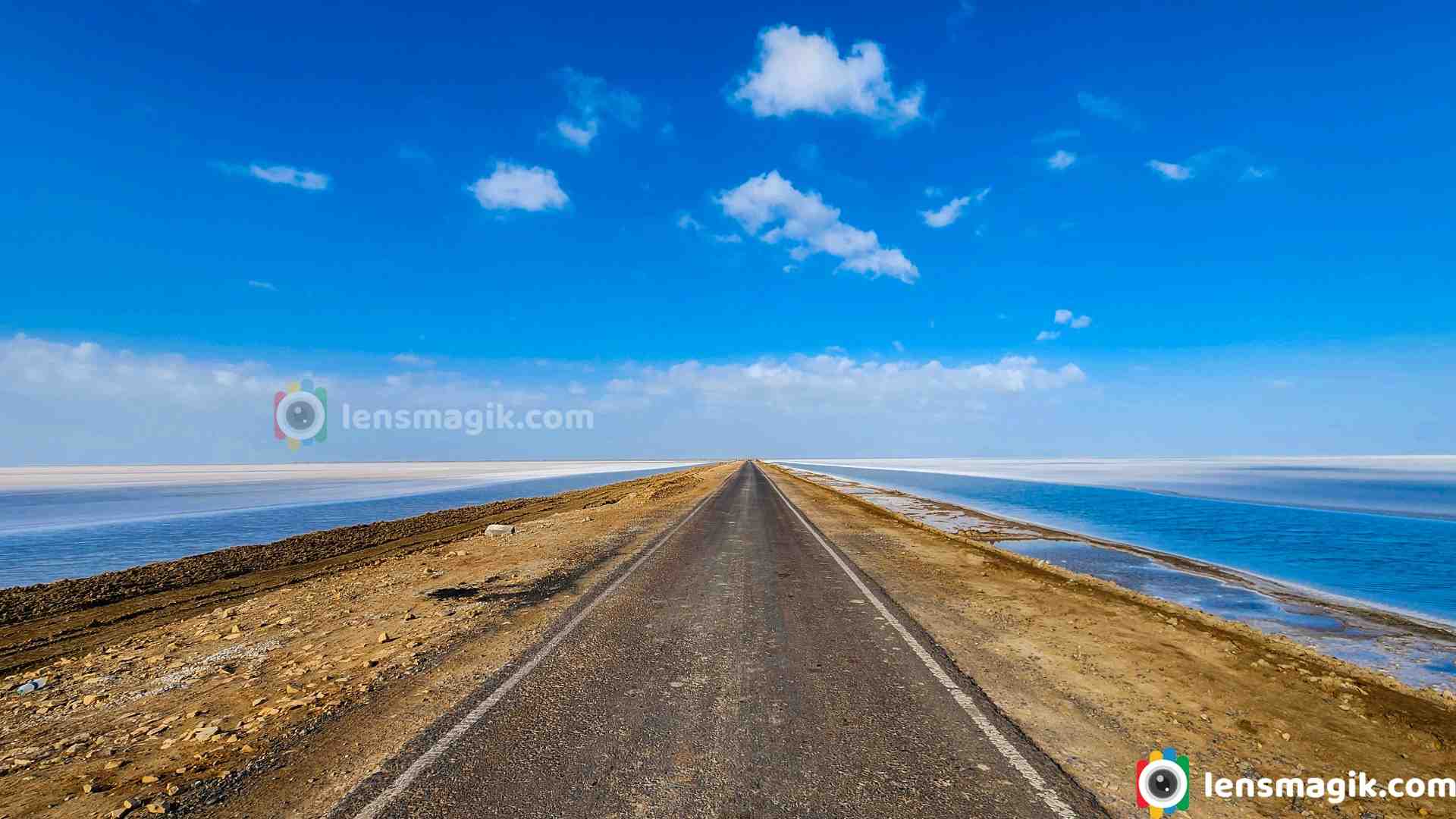
Kutch is a largest district of Gujarat and also of India. Main City or Headquarter of Kutch District is Bhuj. Kutch is famous for White Desert or White Rann. In Every winter season from December to February celebrate “ Rann Utsav “ to attract foreigners and also locals. Tent City made in white desert to stay and also cultural programs arranged in it. The main Rann Utsav held in Dhordo of Kutch.

After visit White desert people also visit Dholavira which is nearest destination from Dhordo and also Kalo Dungar in between. From Dhordo you will have to go Khavda first and then from Khavda to Dholavira which is connected through “ Road To Heaven “. Dholavira is located at Khadir Bet. Khadir bet is separated because after monsoon the water filled outer side of bet. So the Road To Heaven is the way to connect Khadir bet to main city Bhuj.
About Road To Heaven Dholavira / Road to Heaven in Kutch :
- · It connected from Khavda to Dholavira.
- · Road to heaven distance around 30-35 km.
- · After monsoon the rain water on the both side of the road. You can see beautiful Greater Flamingo birds in between. Water level is low but muddy.
- · After winter in January –February the water on both side of the road is evaporated and turn into salt. Not all water but some areas during the road.
- · Water on the both side of the road or Salt/ white layer on both side of the road make the beauty of the road and that’s why it name as “ Road To Heaven “
- · When you are on the road there is hardly some traffic you face the open road with both side water or salt at morning or evening make the scenery like a Heaven.

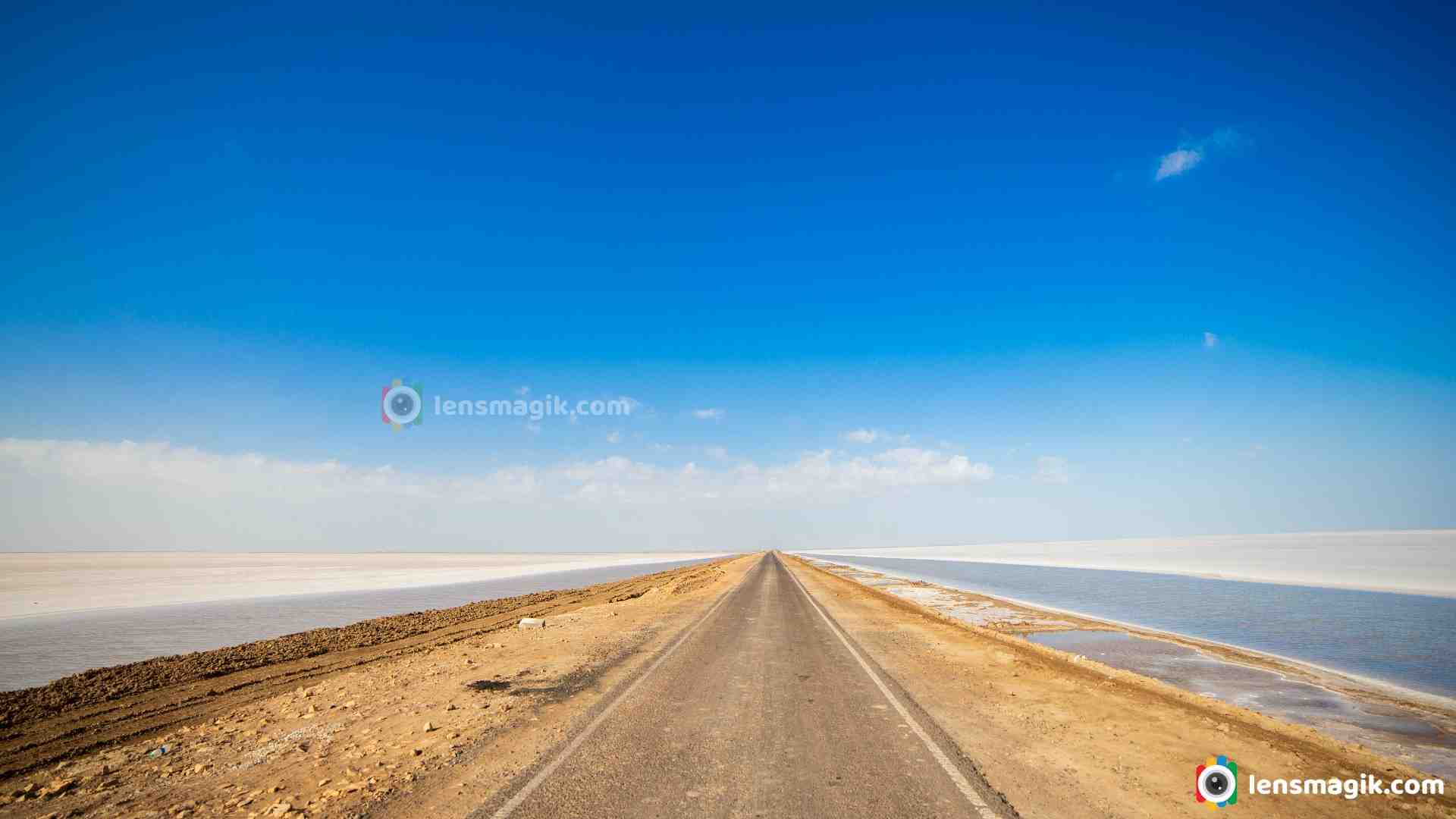
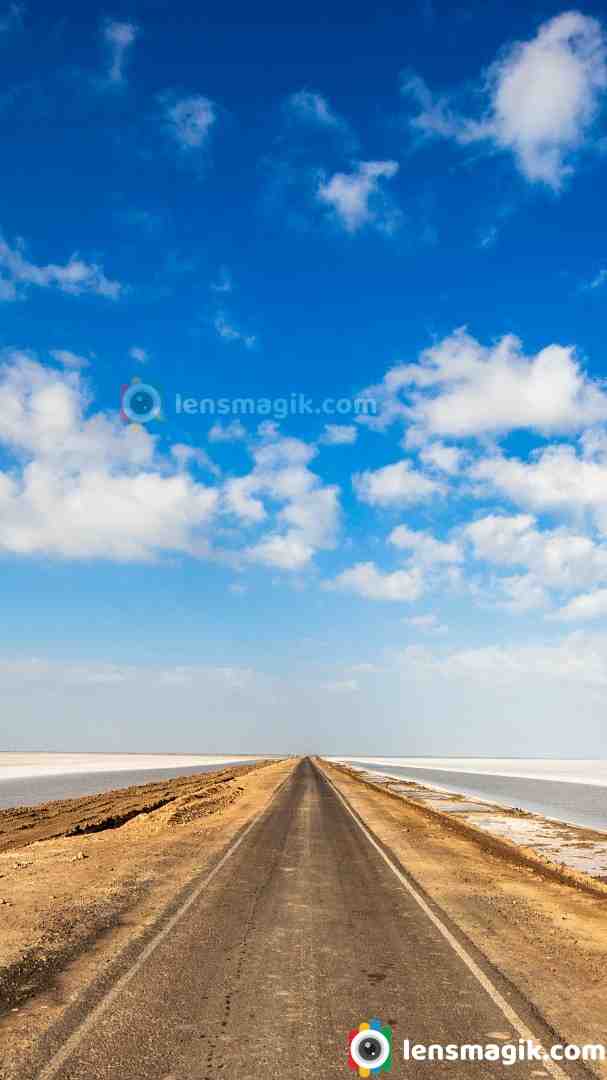
I must suggest to visit Road To Heaven in Kutch while you visit Kutch. Also Visit Dholavira which is one of the largest Harappan Civilization site.
Places to visit near Road To Heaven :
Dholavira, Kalo Dungar, Dhordo, White Desert
Places to Visit near Bhuj : White Desert , Kadiya dhro, Chhatardi, Mandvi beach, Vijay vilas palace, Bhujyo Dungar, Smriti Van, Vande matram memorial
Camera Used : Canon 80D, Canon 6D, DJI Mavic Air2
It is the largest species of Flamingo bird family and also a most widespread species of flamingo family.It is found in India ,south east , middle east and Africa. It is migratory bird. They also breed in India. In Gujarat they breed in Rann Of Kutch , Little Rann of Kutch also found in Thol Bird Sanctuary. I often visit Thol sanctuary so got good shots of them. Best time for shoot them is may-Jun at Thol bird sanctuary bcz of water level is too low . It is been recorded that some flamingo birds are resident in Gujarat at many places like LRK, Khijadia sanctuary, Nalsarovar and Thol Sanctuary. They also breed here and stay for all seasons. So you can find greater flamingo birds in all seasons in Gujarat at many places.
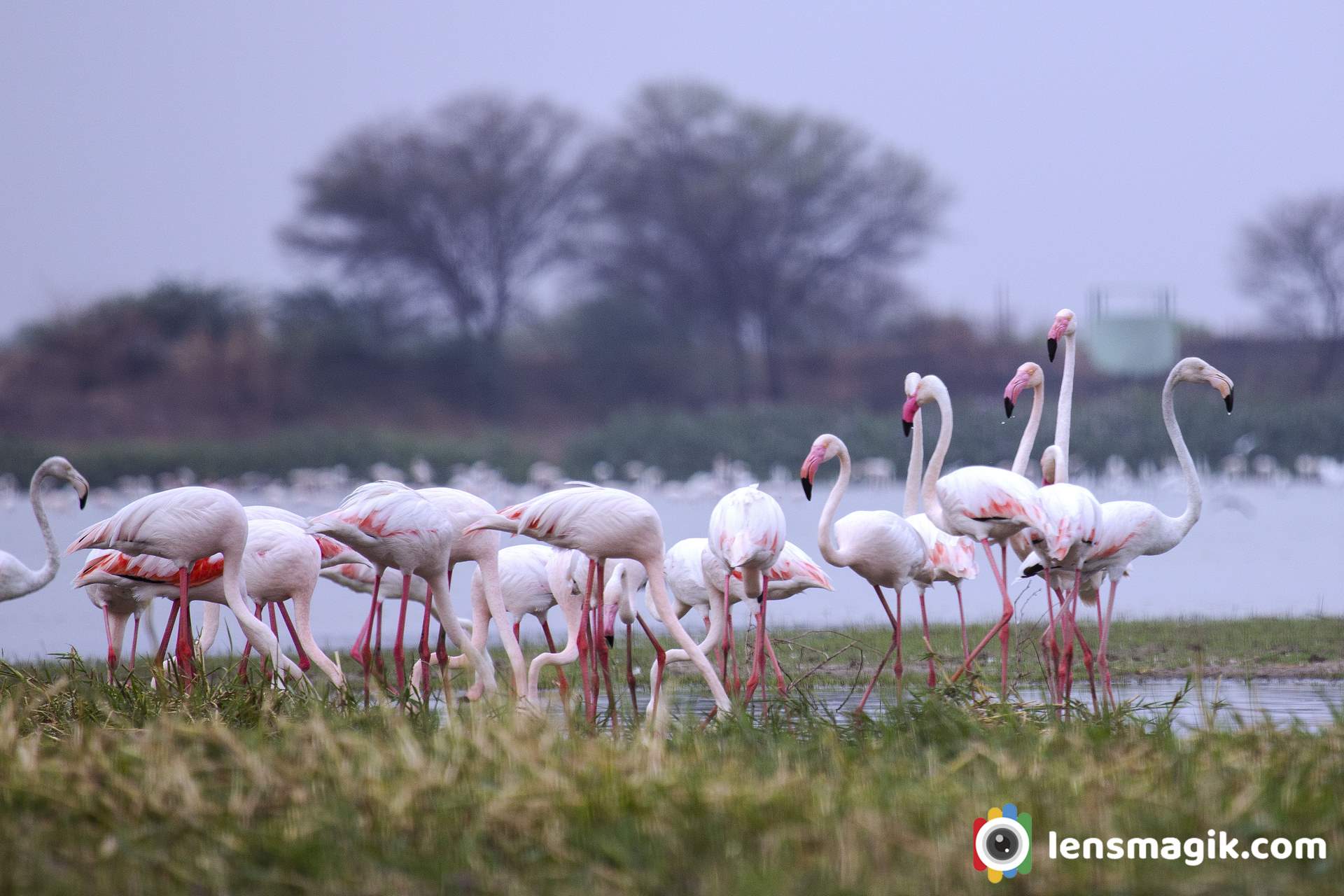
Flamingo bird facts and description :
- Greater flamingo bird is the largest living spices of flamingo.
- Greater flamingo has no subspices.
- Flamingo color most of pinkish white in plumage. Wings are red and feathers are black in end.
- Greater Flamingo bird call is like honking.
- The average lifespan of flamingo bird is 30-40 years.
- Main Difference between Greater flamingo and lesser flamingo is height . Lesser flamingo is shorter than greater flamingo. Also Greater flamingo has pale pink bill and black tip. In other case lesser flamingo has dark crimson bill. Lesser flamingo is also more red in color than greater flamingos.
Greater Flamingo birds In Thol Lake : Thol sanctuary is often i visit. Flamingo birds are stay here all seasons. I got good numbers of Greater flamingo and lesser flamingo bird images in a group when i visit Thol. This is my best time with flamingos. Also i got some beautiful pictures of flamingo birds with group and also in duo with some masti. Flamingos looks very good in frame bcz of their color. Thol lake is good place for birders because more than 150 birds spices found here. Also some mammals like Blue bull and black buck also found here. Lots of water birds and tree birds found here. Also sanctuary is not so big so you can find all birds in around 6 sqkm area. Best time to visit thol lake is November to March. All migratory birds are visit in winter so that is best time. Early morning is best for birders.
Timing And Fees of Thol Sanctuary :
Thol Sanctuary open at 6 AM in morning and close at around 5 PM
Fees of Thol Sanctuary is 50 INR per person and camera fees are 200 INR. Car fees are 500 INR.
Weekend fees may change that actually i don't know about it.
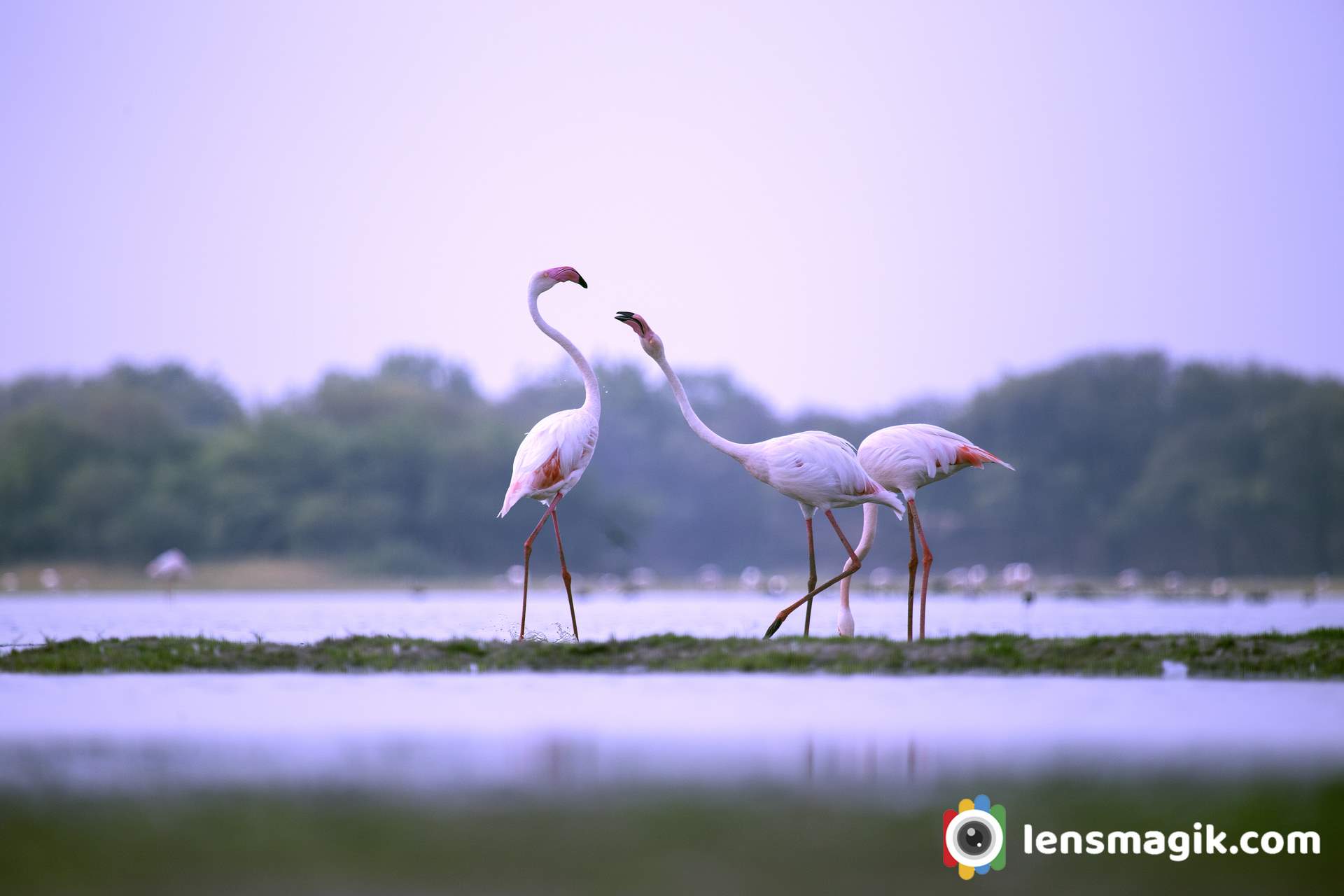
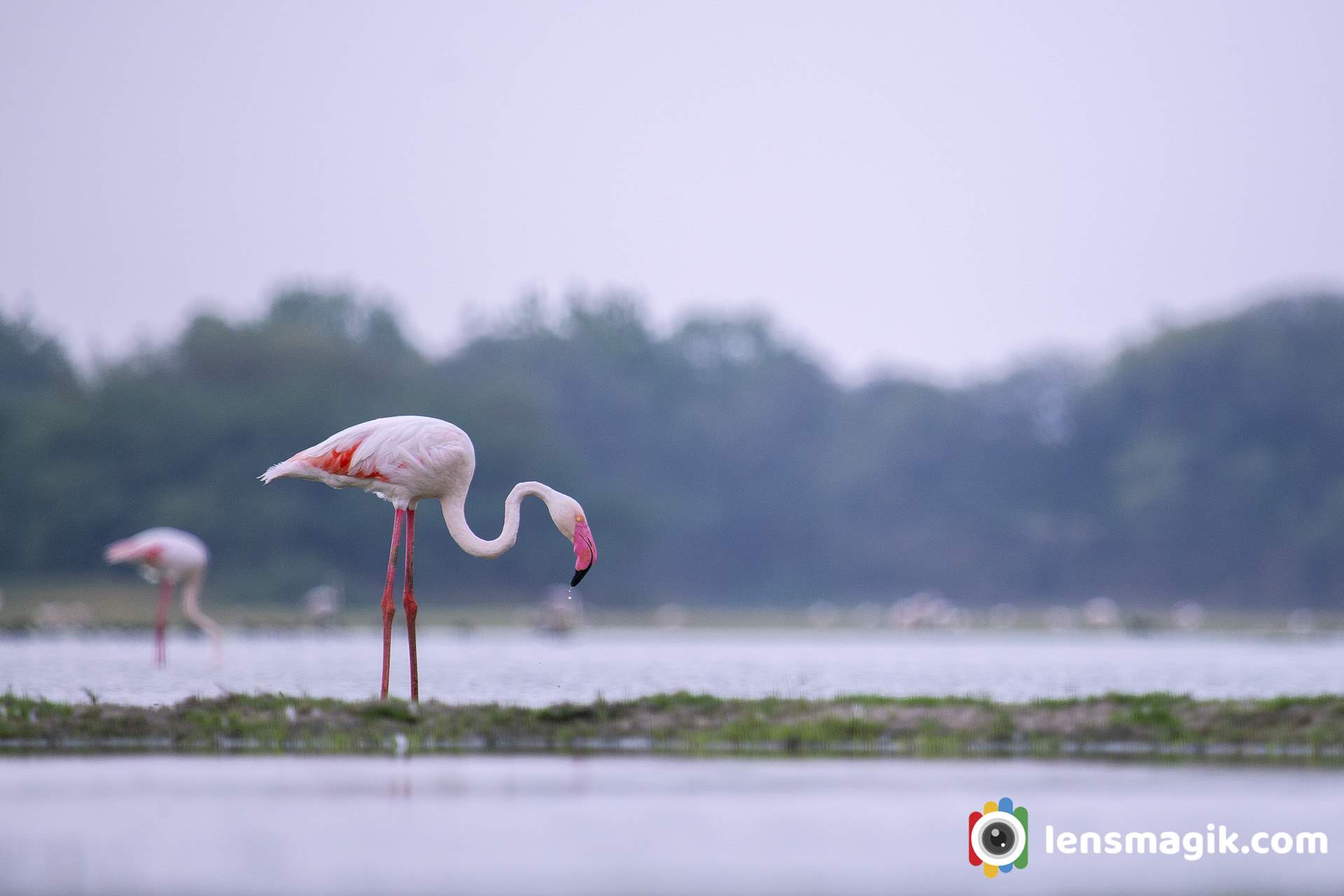
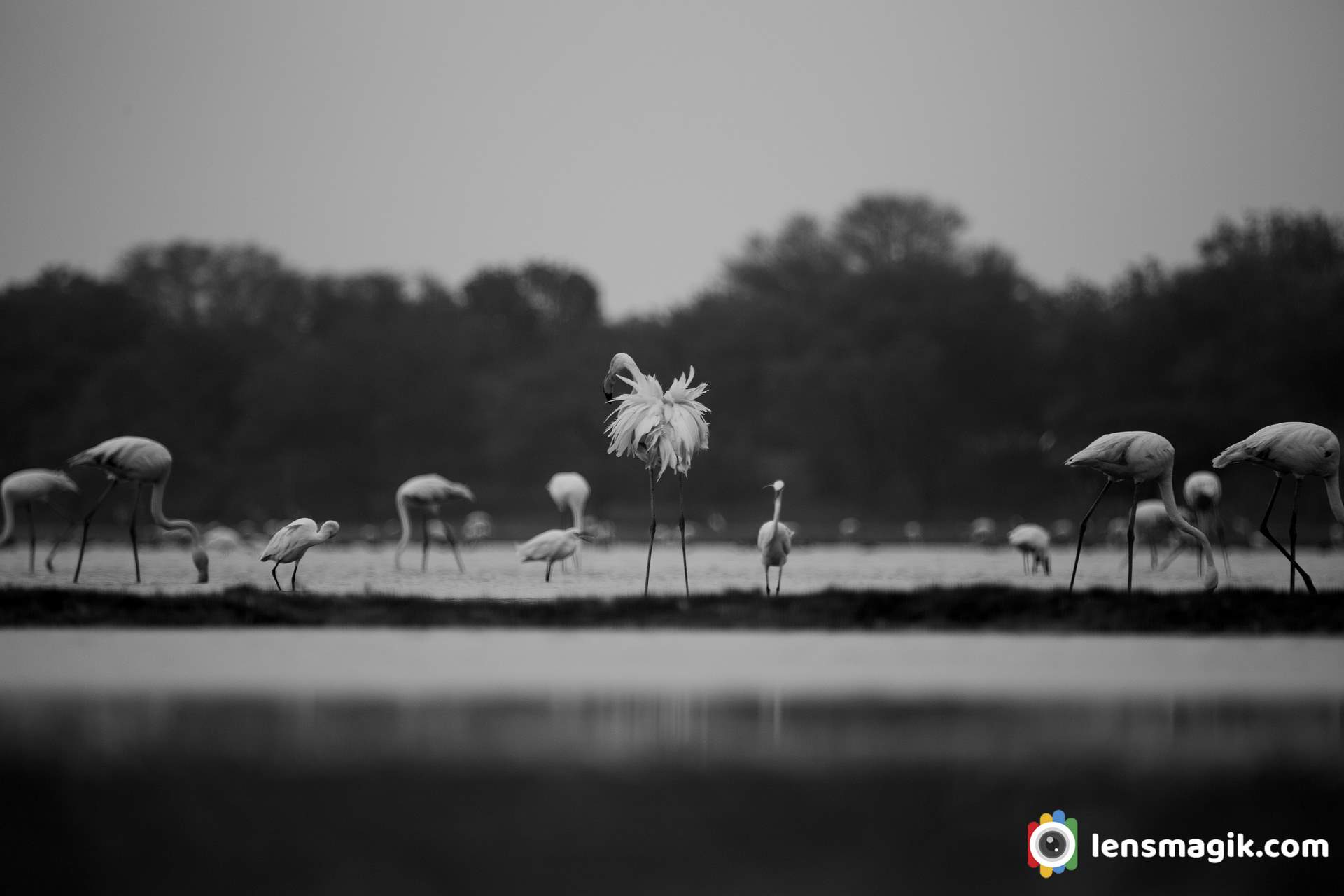
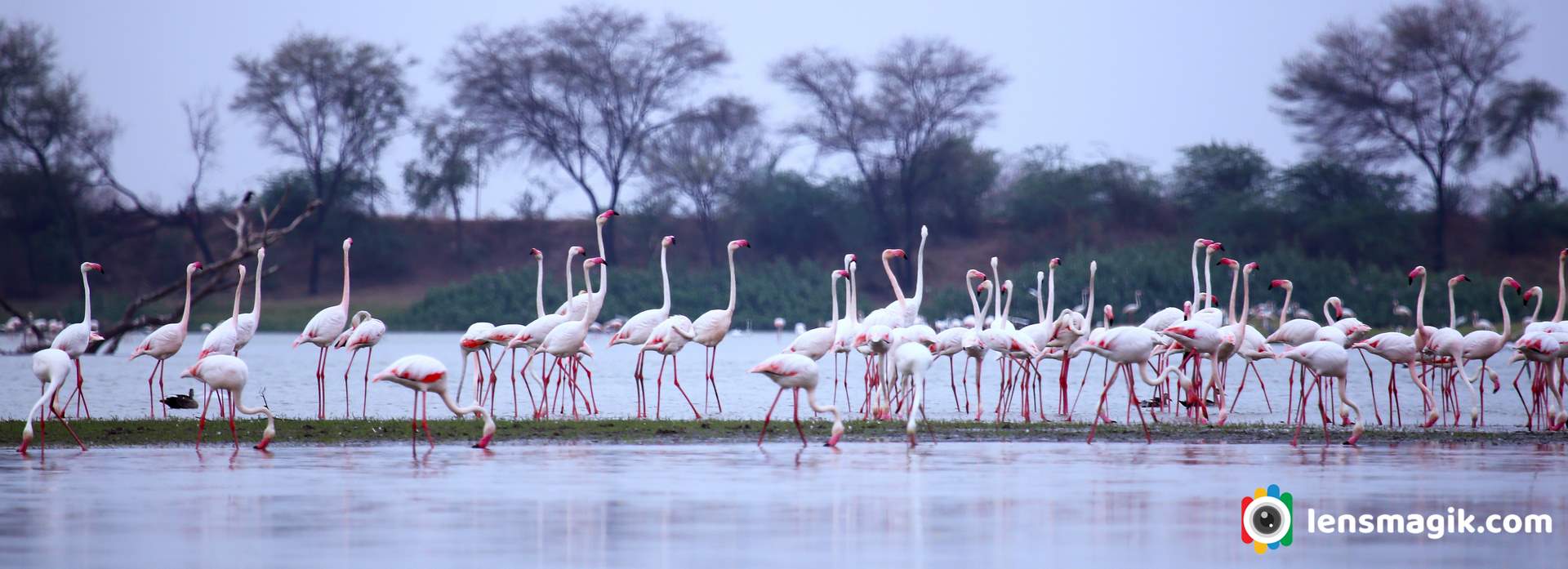
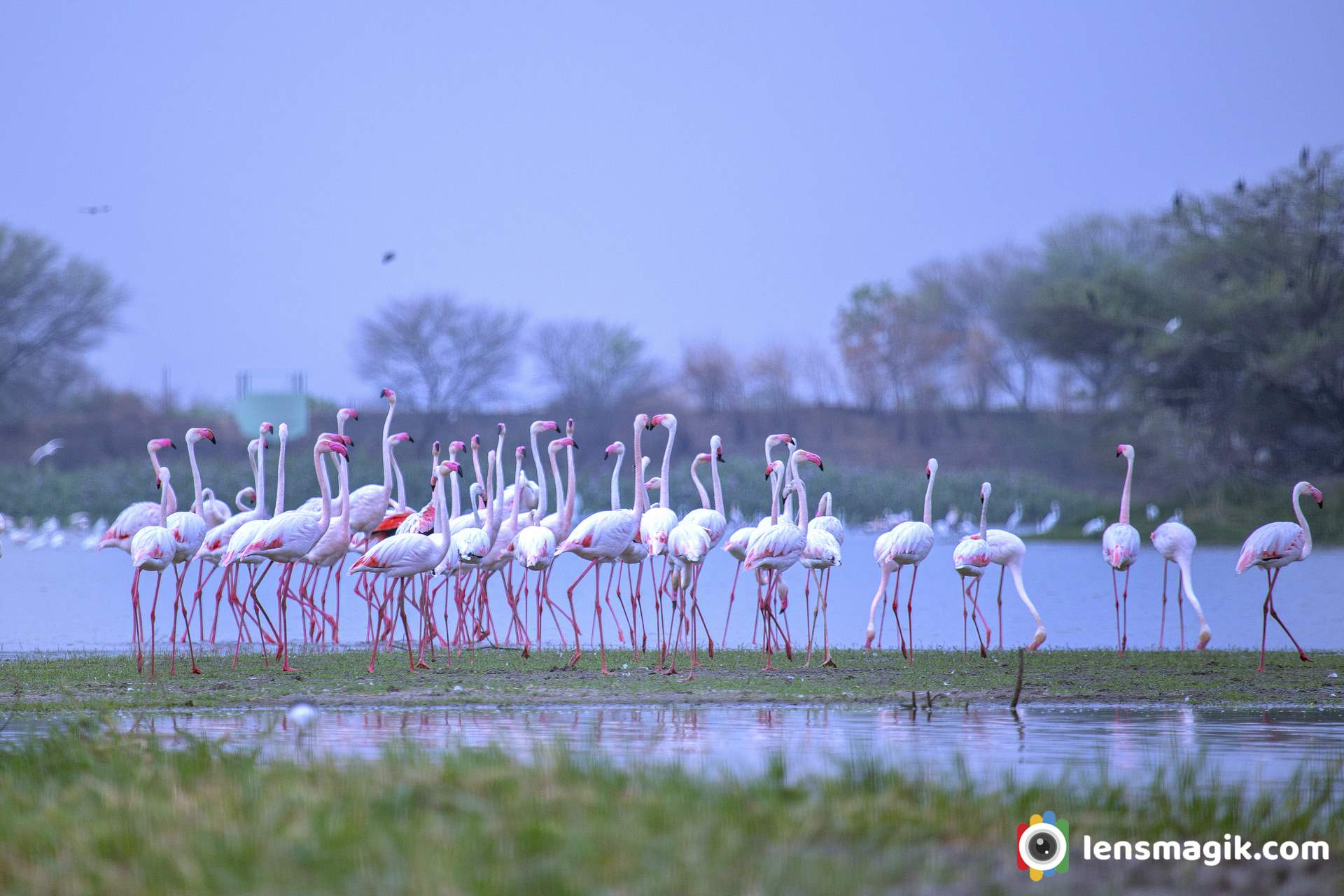
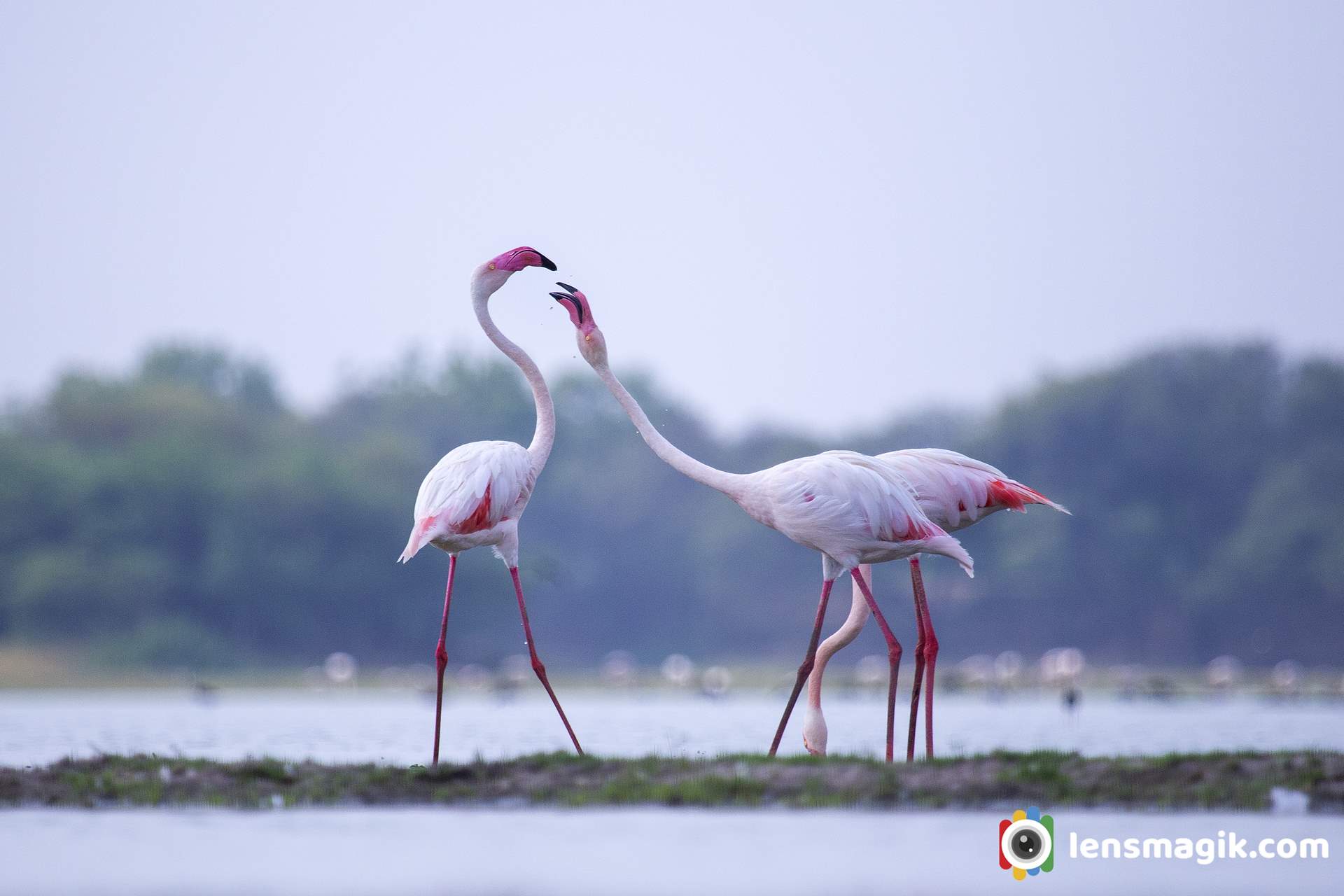
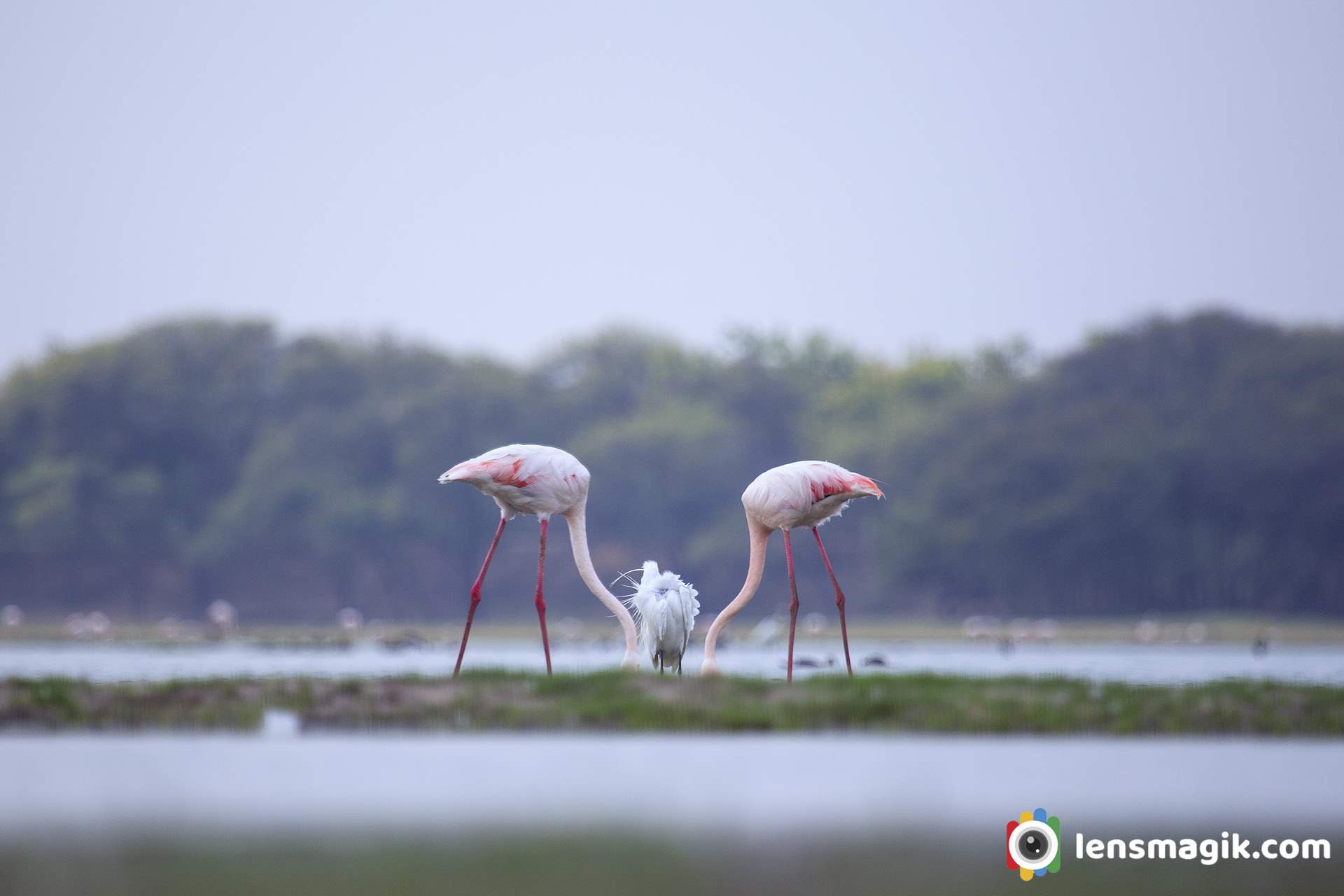
Two flamingos with little egret in between of them with down head all. The images of flamingo bird making a good frame. Because of its color flamingo birds images are very attractive and also their grouping make a perfect frame of flamingo bird picture.
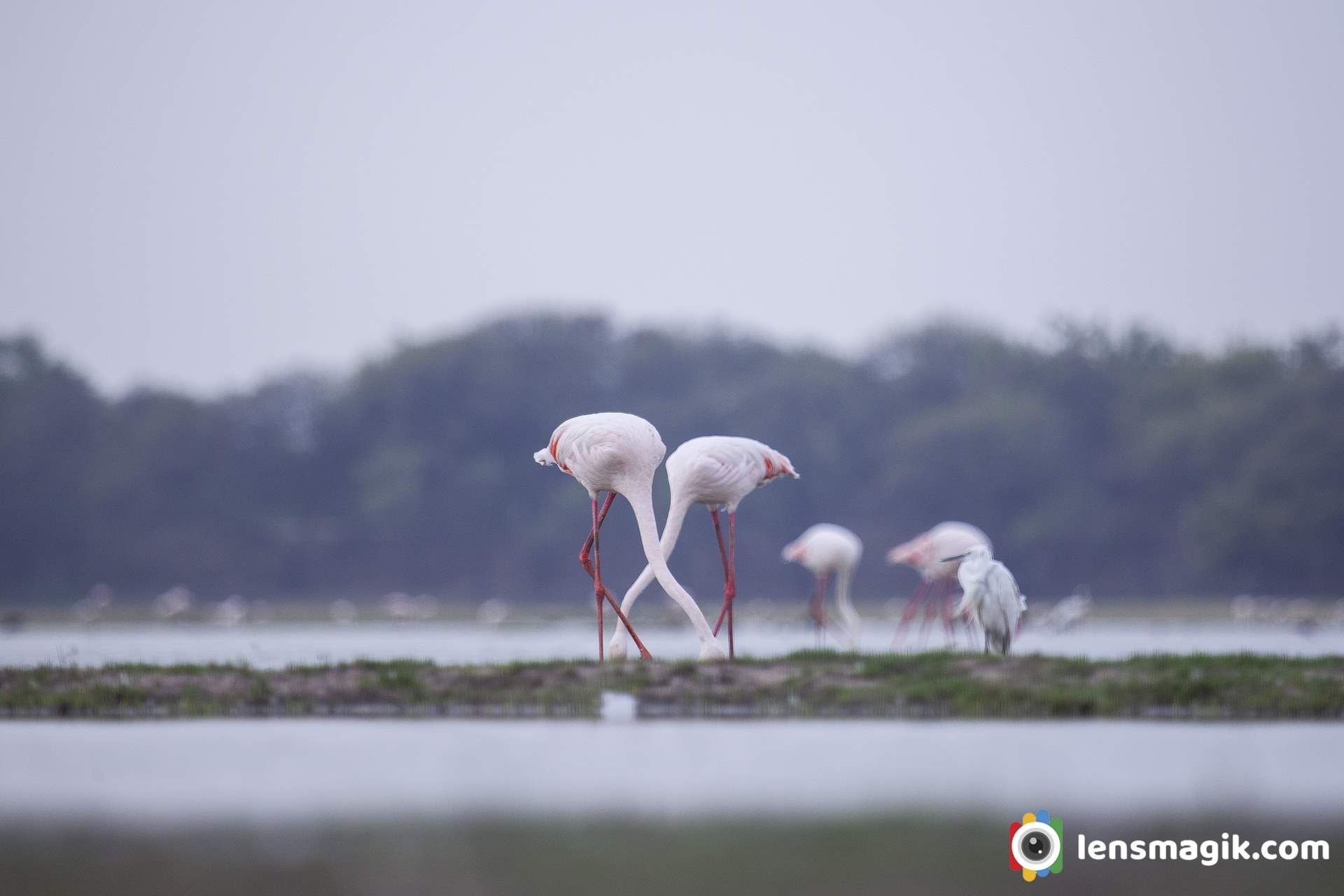
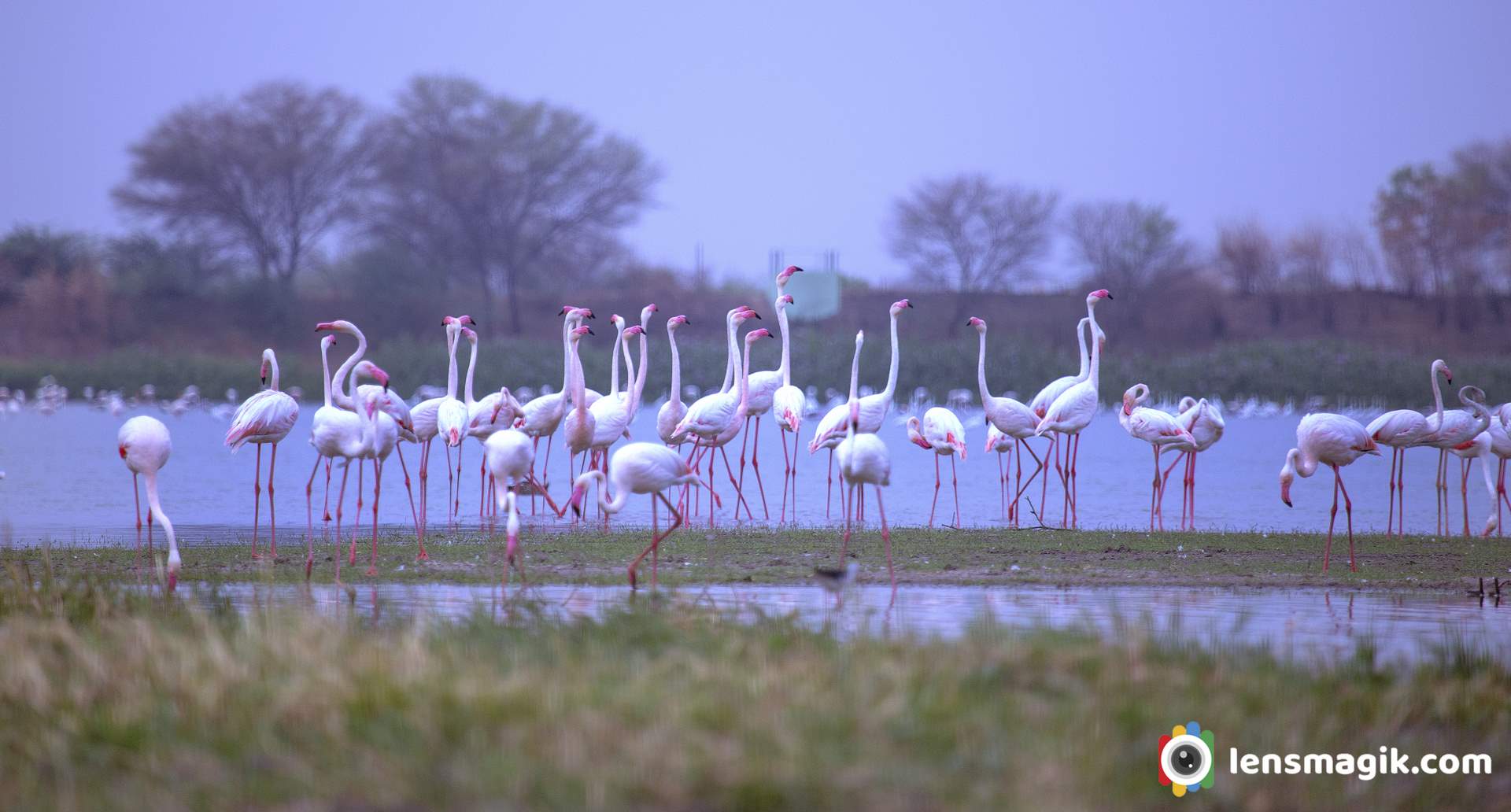
A morning pared time for flamingo birds. A beautiful Greater flamingo birds are in a raw make image nice and show their unity.
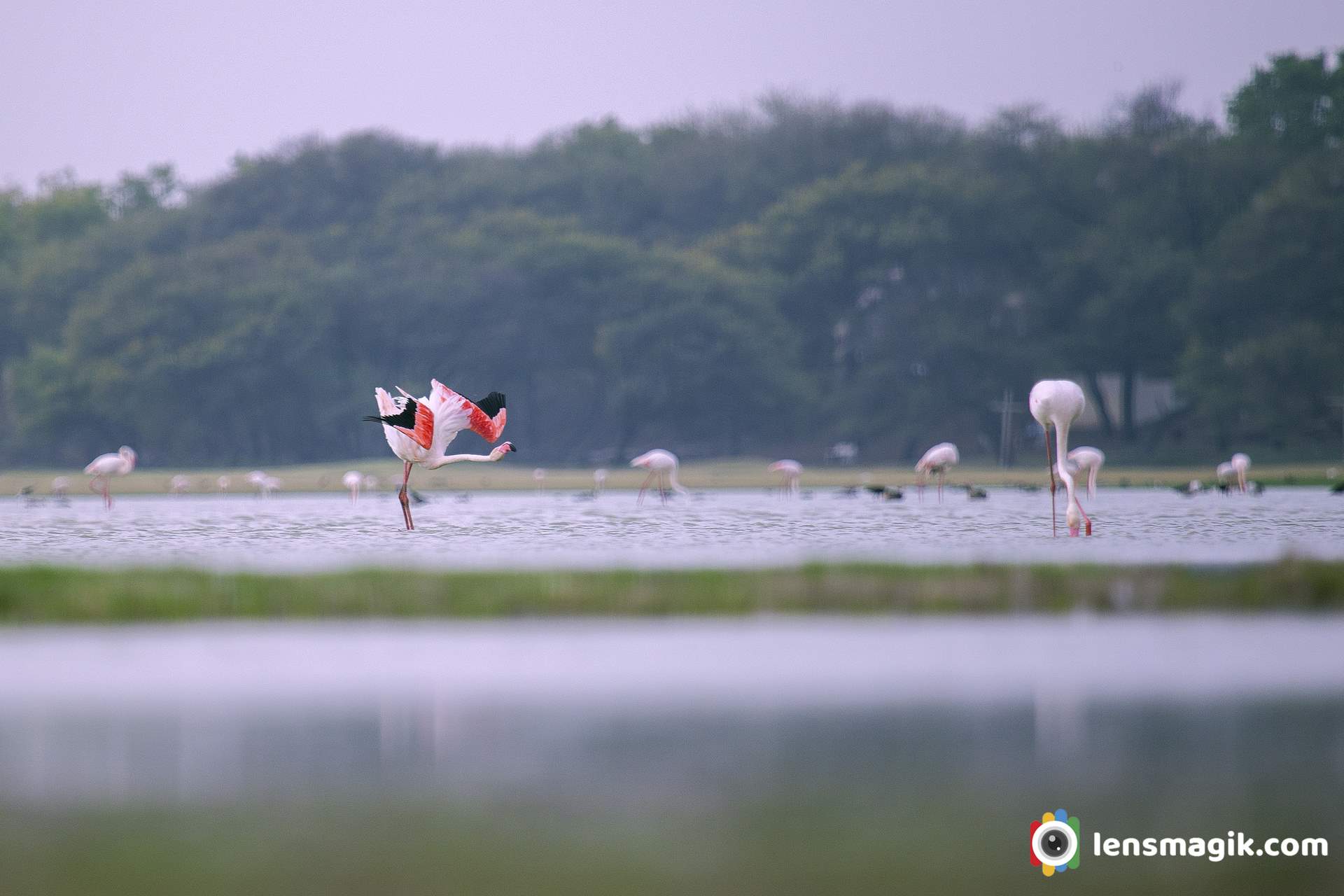
Perfact wingspan of Flamingo bird looks great. Pink Wings make image more attractive.
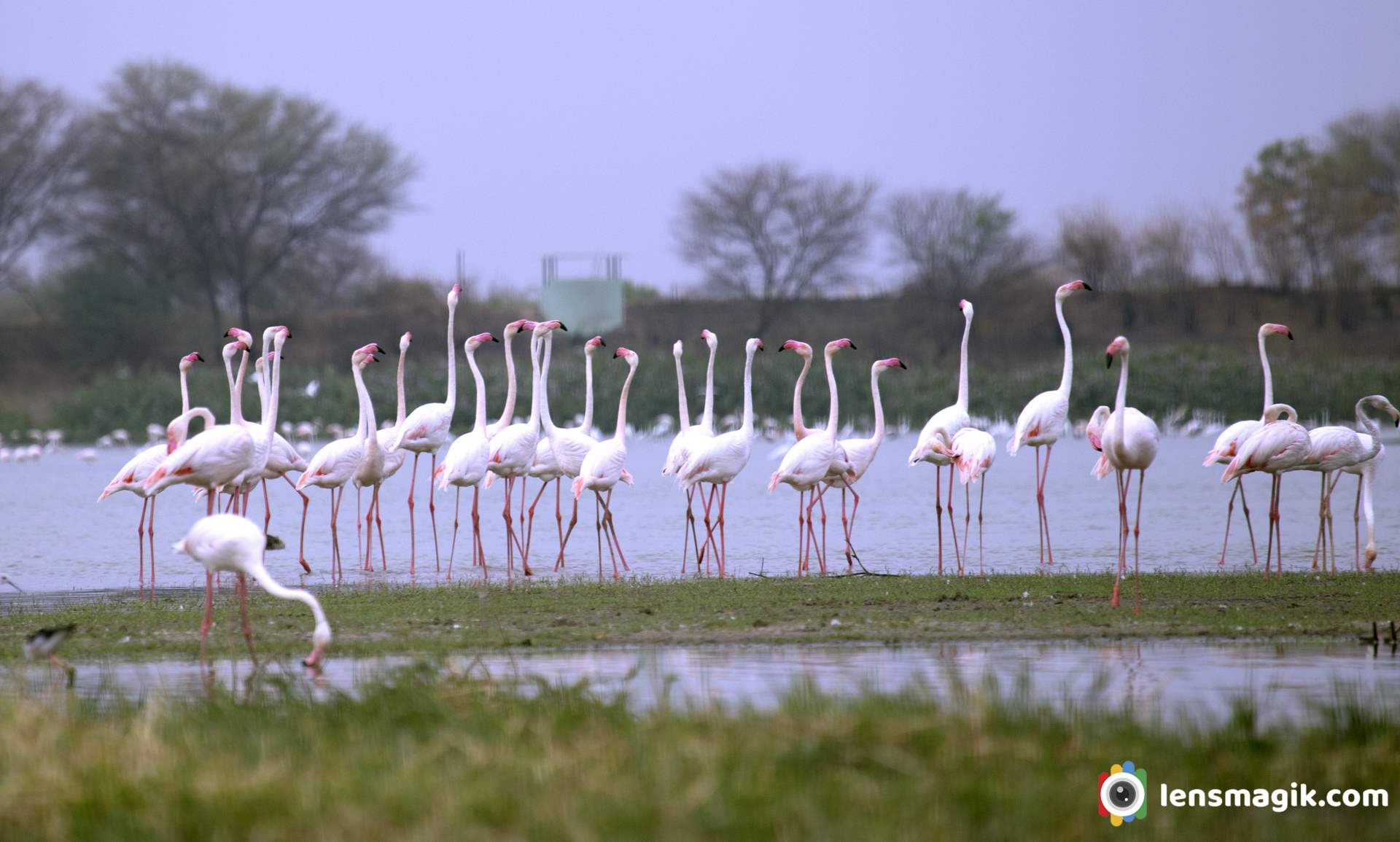
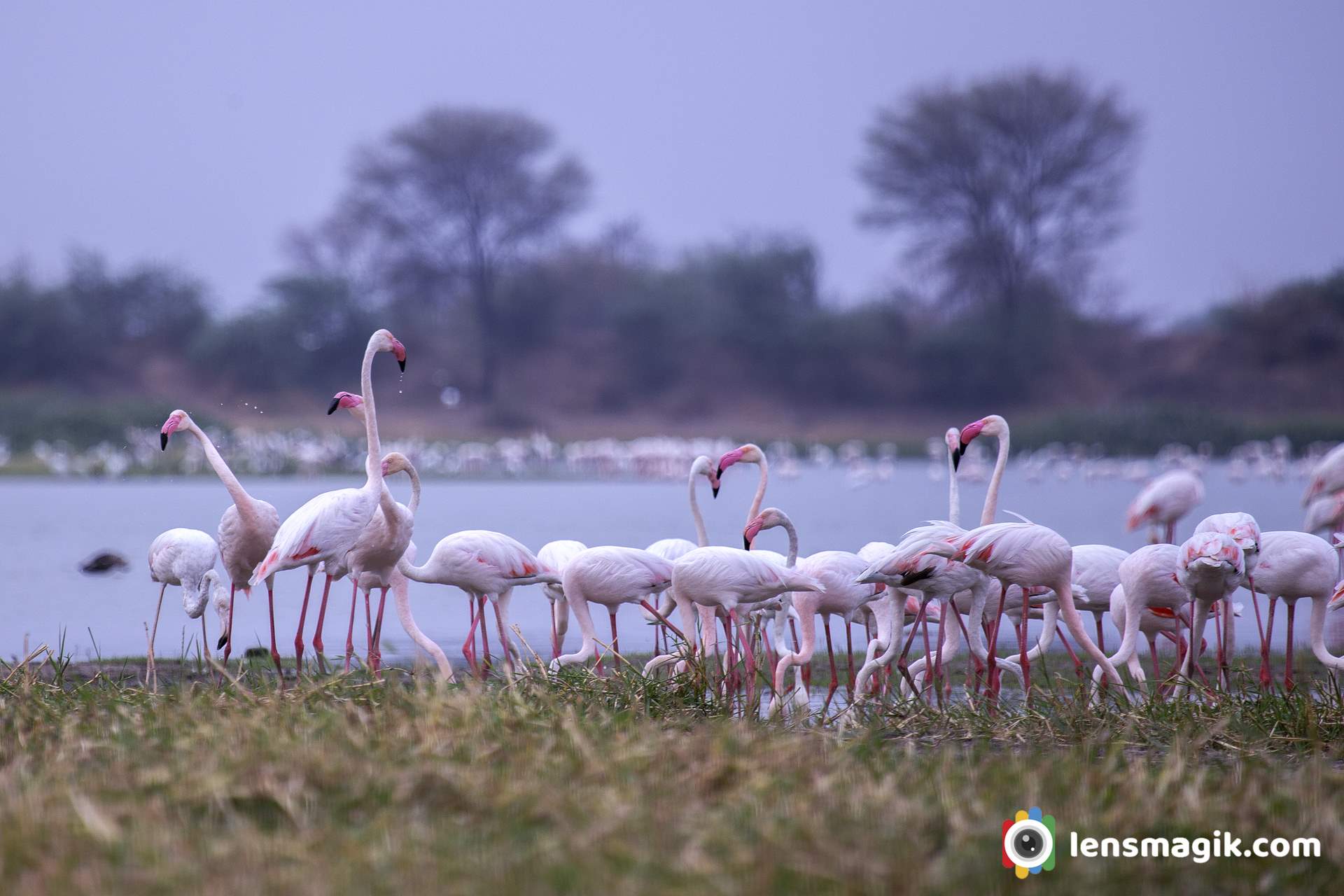
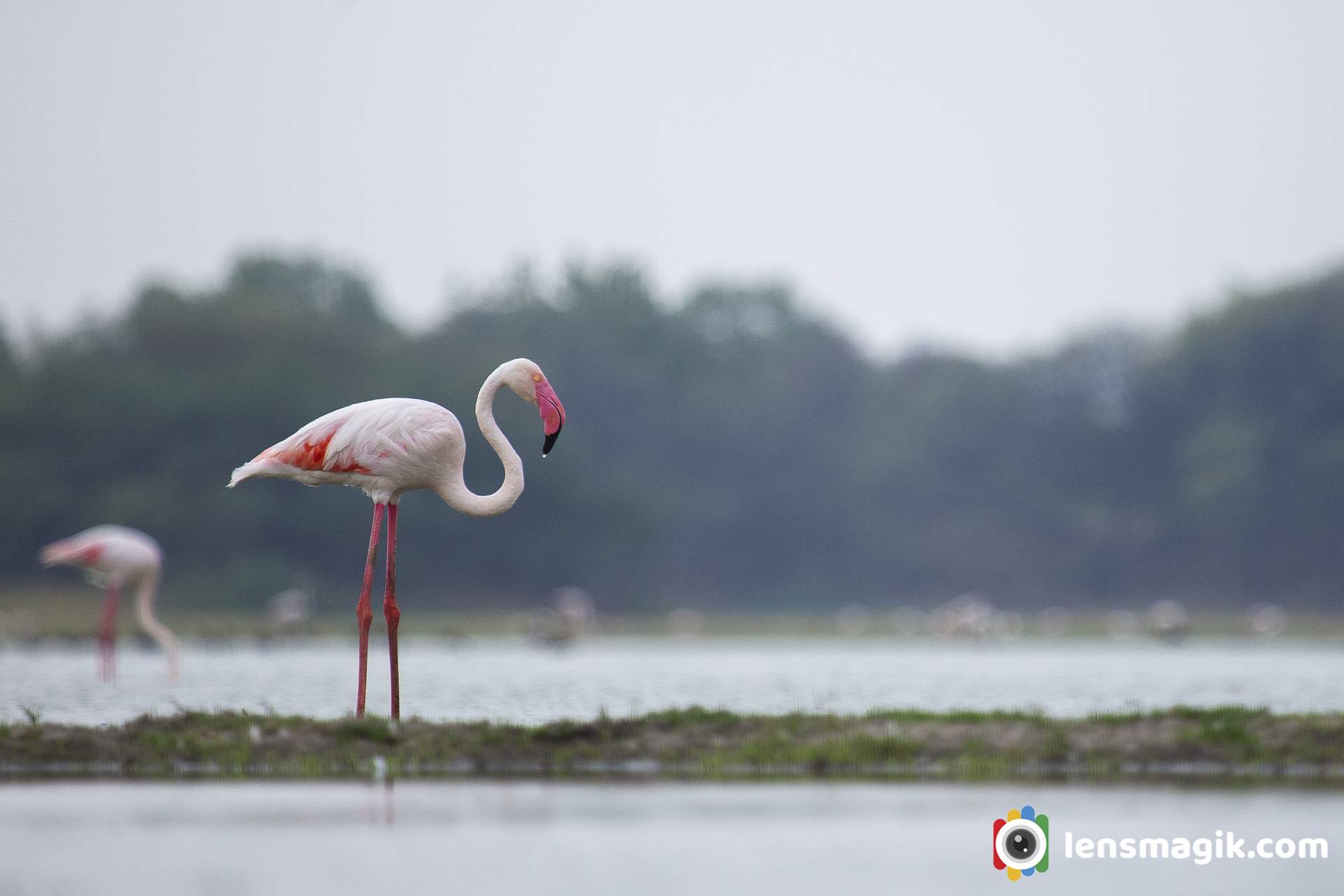
Solo Greater flamingo bird
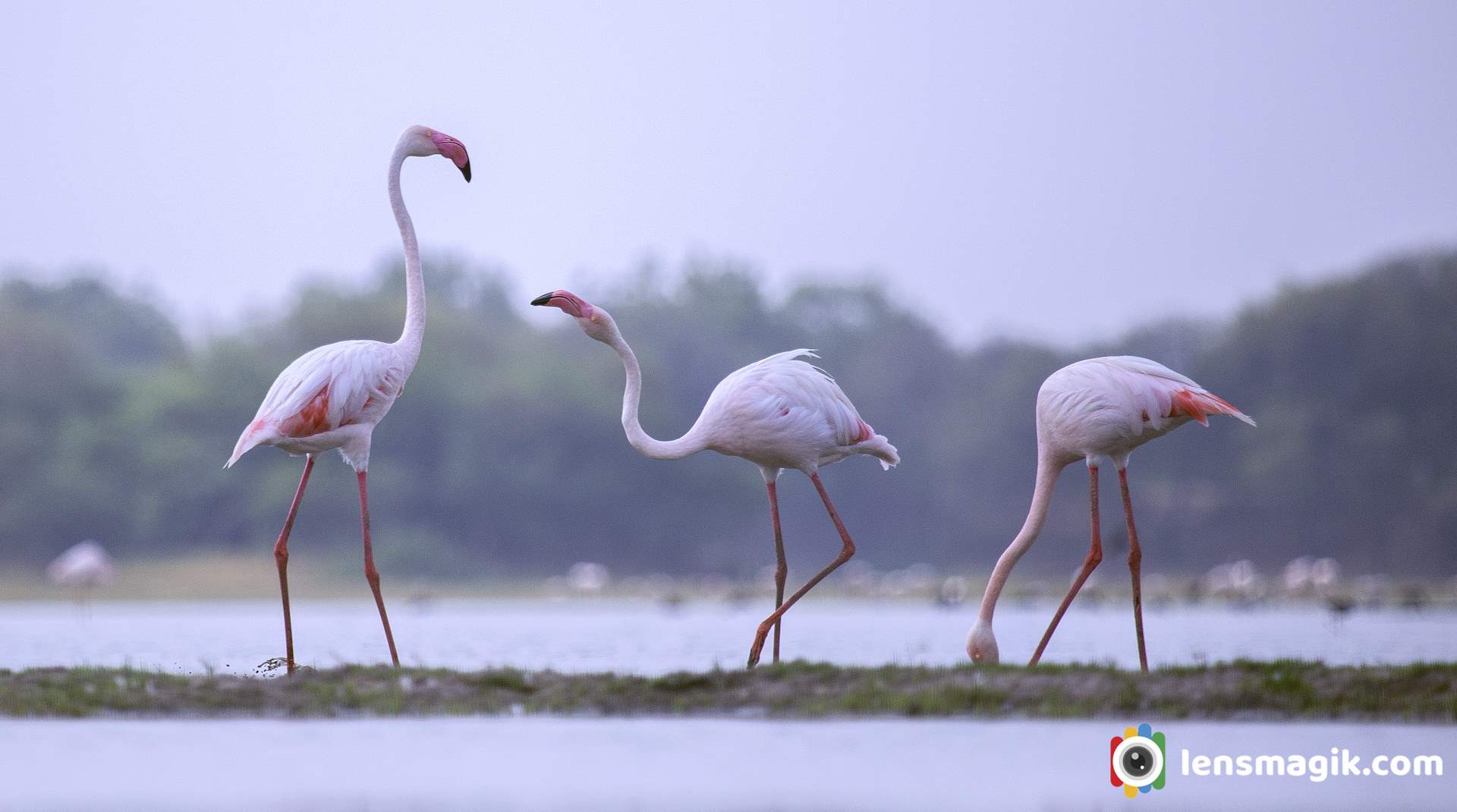
Some masti time for two flamingo birds .
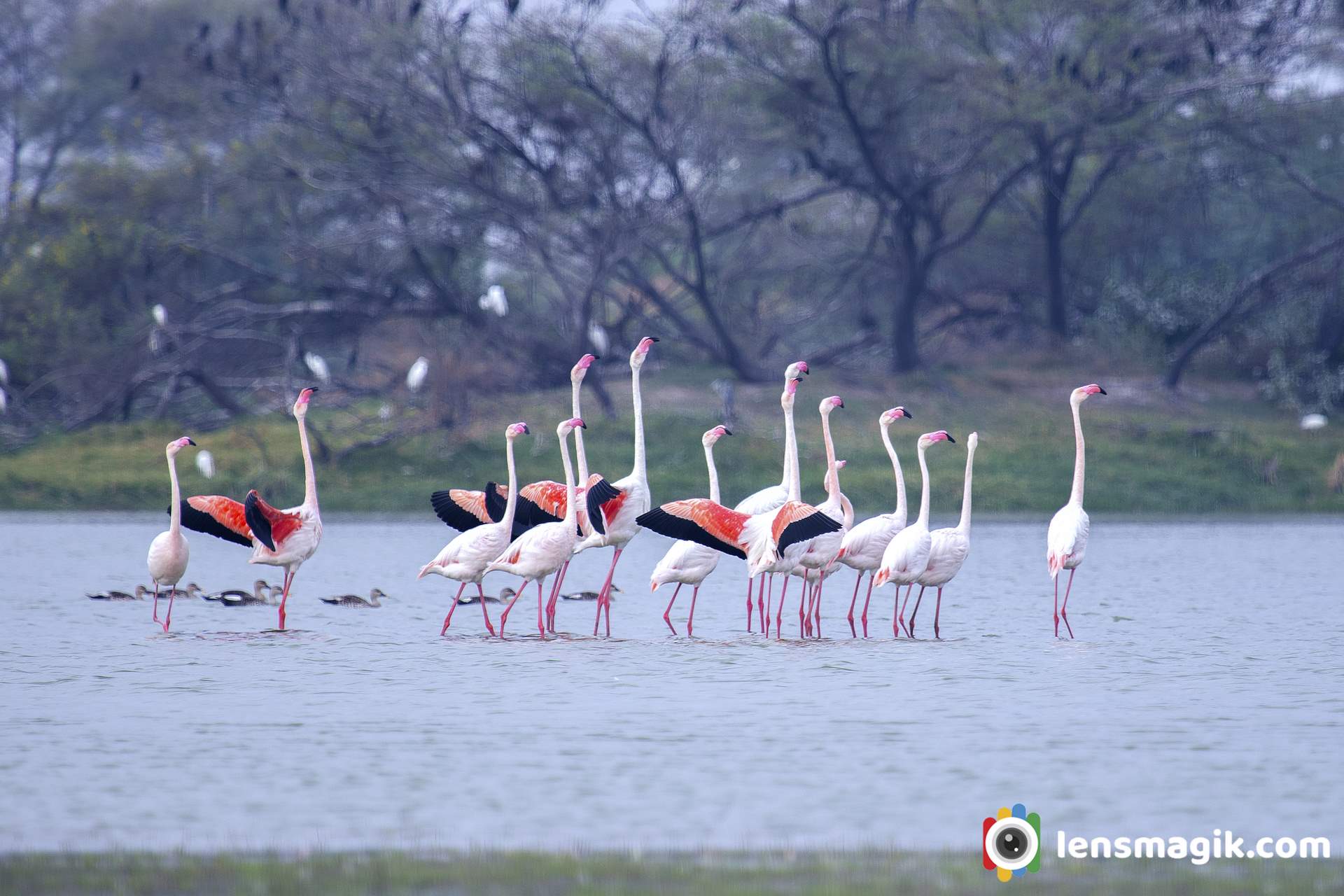
Above image shows the discipline of Flamingo Bird and looks like a morning pared they are doing .
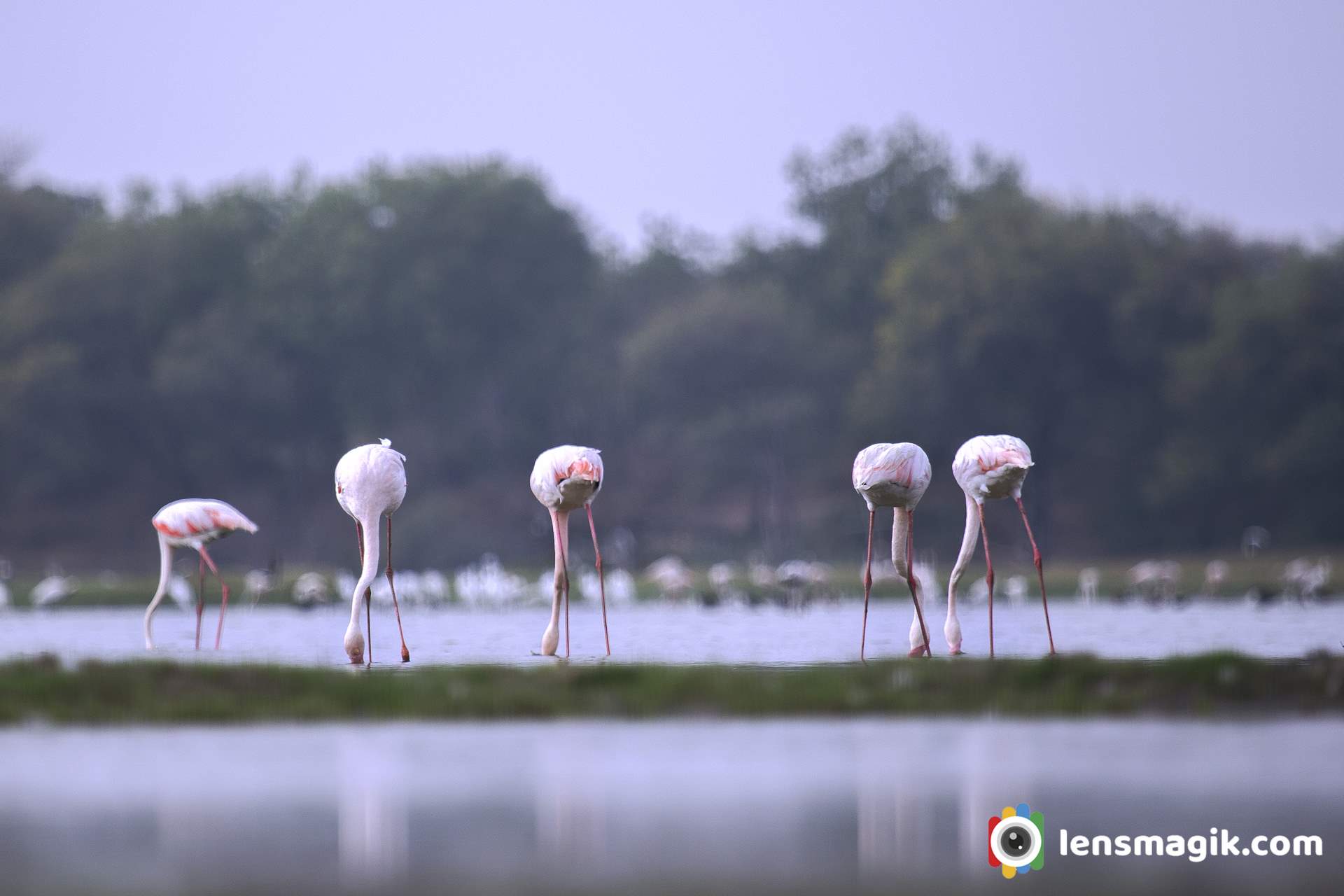
https://youtu.be/9dVBrR9NSOo
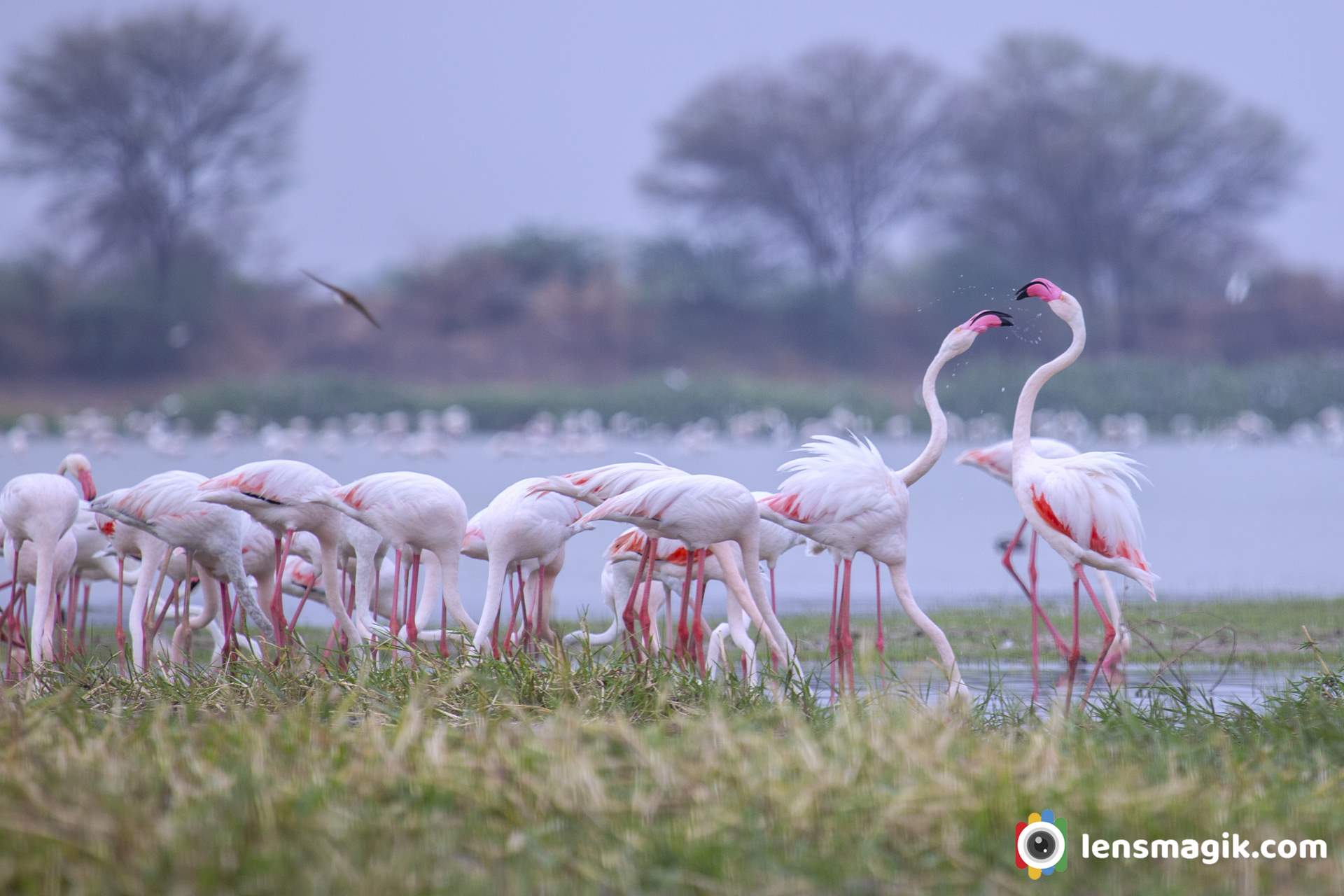
A group of Flamingo Birds at Thol Lake make your frame awesome.
Location : Thol Lake, Gujarat
Thol lake is just 25 km approx. from Ahmedabad. You can visit one day for Thol lake is enough. Also you can find another migratory birds like pelicans , bar headed goose, river tern and many more resident spices.
Ahmedabad to Thol lake distance about 25km
Thol bird sanctuary is located in Kadi Taluka in Mehsana District near sanand Gujarat. It is an artificial lake located near village Thol. In 1912 thol lake was built and it was declared as a Sanctuary in 1988. The main use of lake is use of water for irrigation. The Thol Bird Sanctuary or a Thol lake wildlife Sanctuary India is a habitat of more than 150 spices of birds. Also it is famous for migratory birds Flamingos and Sarus Crane which breeds here.
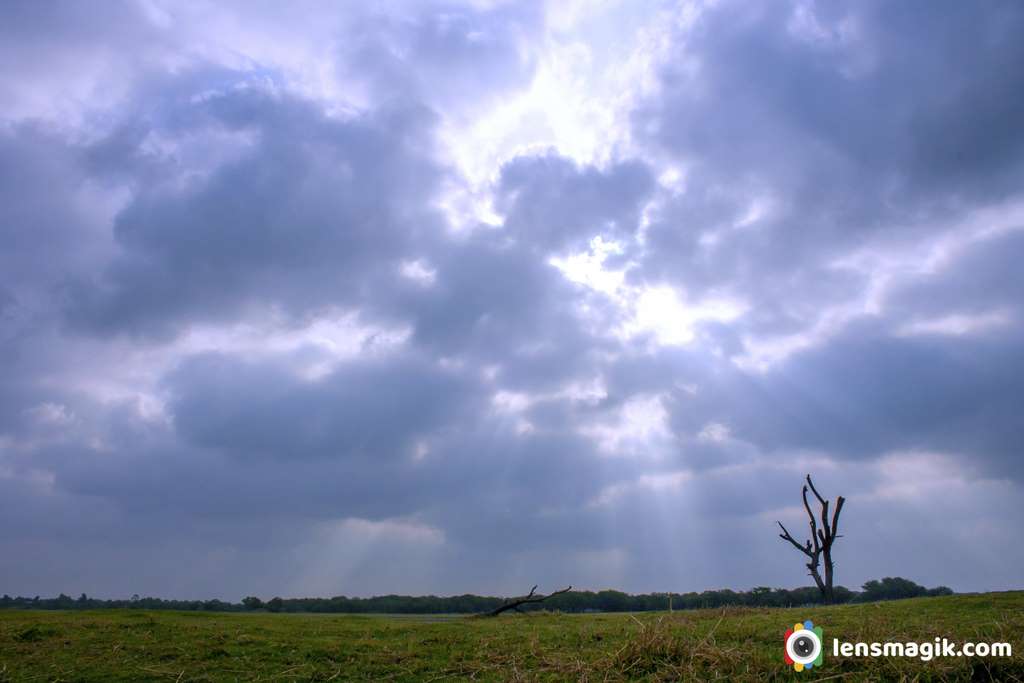
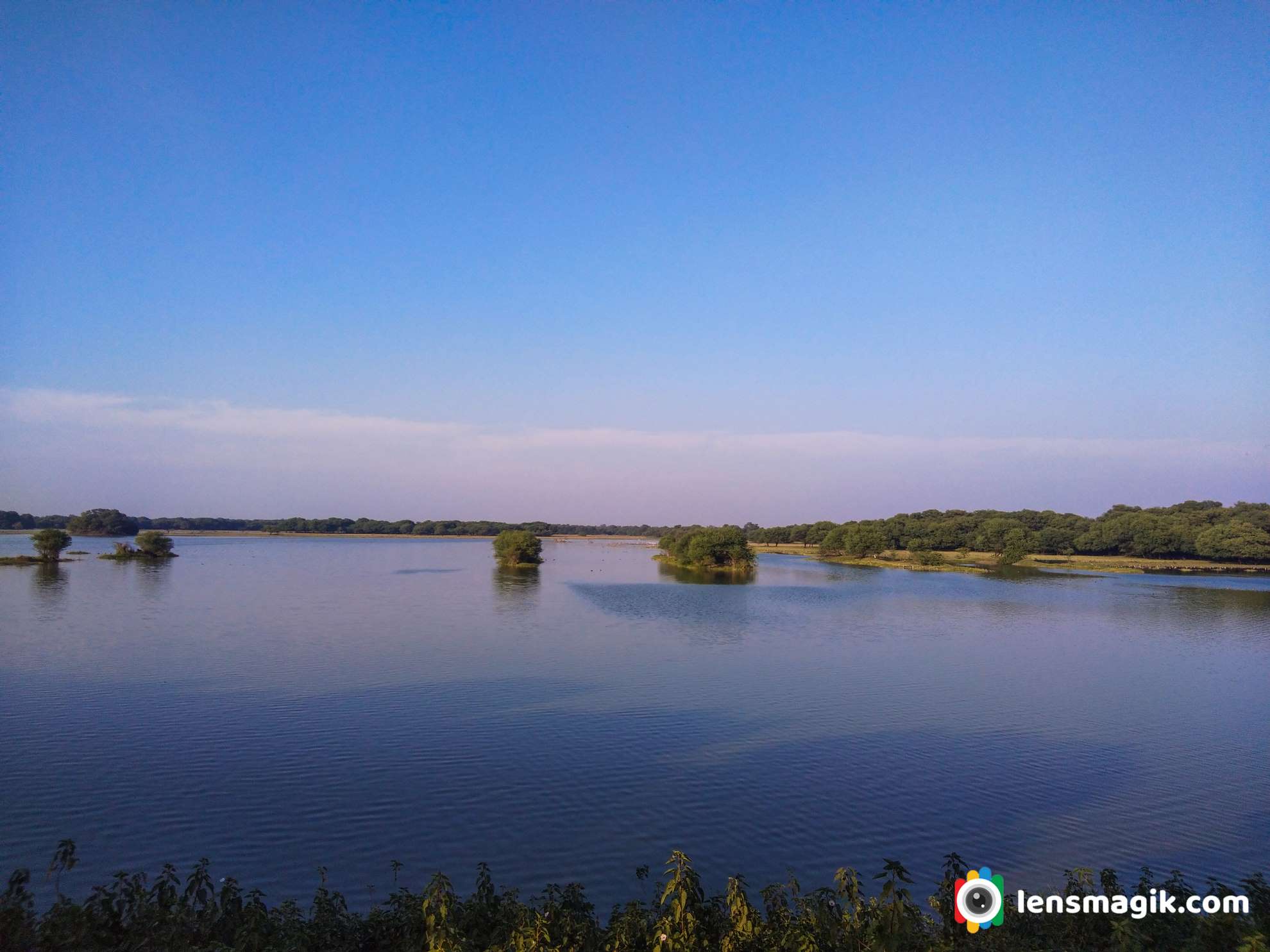
About Thol Lake / Thol Bird Sanctuary
Thol lake is located near Thol village and its area around 38000 acres. Lake faces all season winter , summer and monsoon. During winter temperature goes to 8 degree and in summer temperature goes to 43 degree. Thol lake is under control of Forest and Irrigation department of Gujarat. Thol lake water storage capacity is around 84 million cubic meters. Thol wildlife sanctuary is declared as Eco Sensitive Zone .
Flora and Fauna Thol Sanctuary :
Thol lake has many vegetation plants like Zizyphus, Acacia nilotica, Ficus, Capparis, Azadirachta indica etc. There are also some mix flora of Marshy and Aquatic plants reported in Thol Lake.
Thol lake is protected area and it is very good habitat for water birds. In thol bird sanctuary there are more than 150 spices of birds found . Among these more than 60 % of birds are water birds. Flamingo bird is most prominent bird of Thol Lake. Also Sarus Crane nest in large number here.
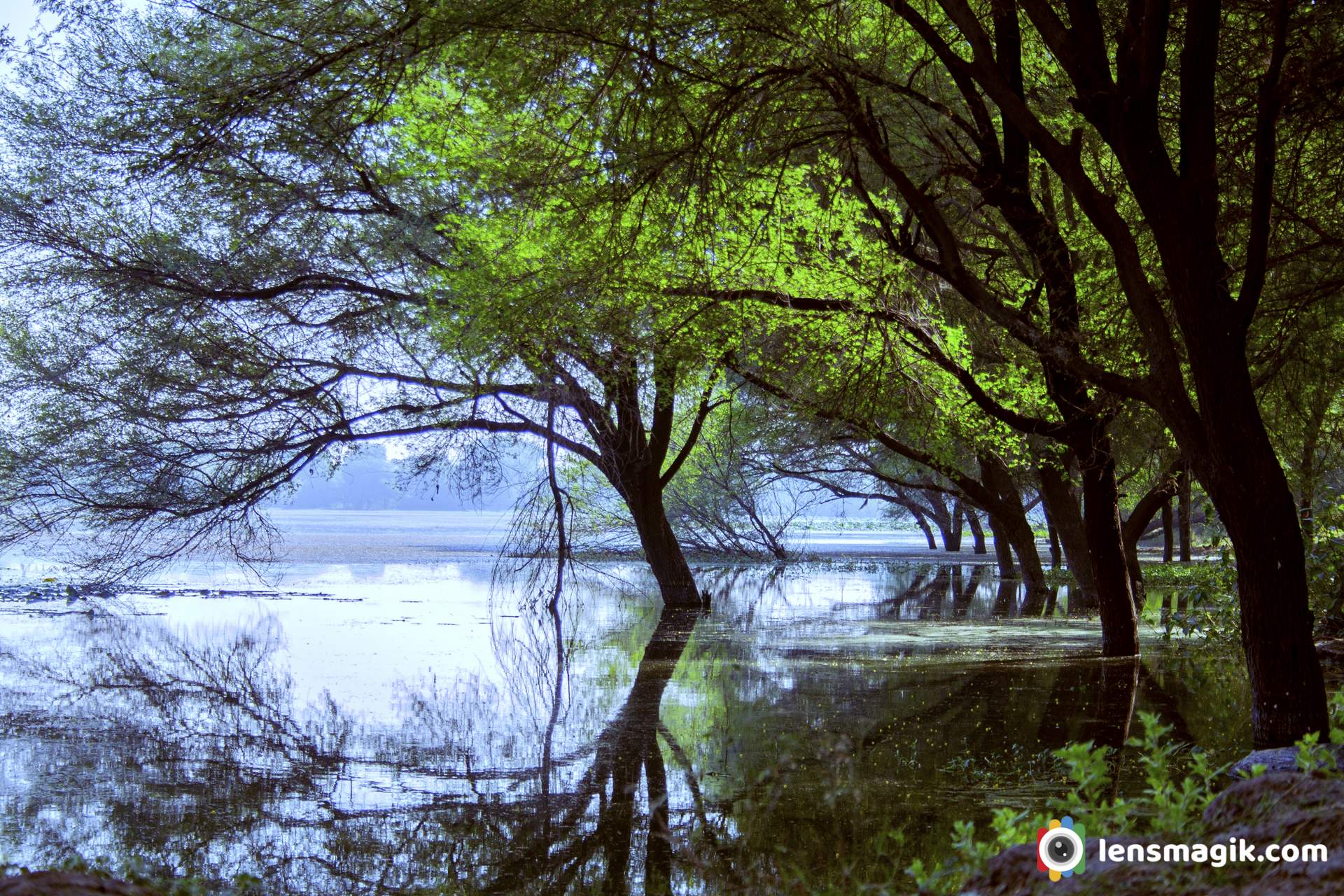
Famous Migratory Birds of Thol Lake
• Flamingos
• Sarus Crane
• Great White Pelican
• Mallards
• Bar Headed Geese , Grey Headed Geese
• Waterfowl
There are also some spices reported here like Dalmatian Pelican, Indian Skimmer, Greater Spotted Eagle, Indian Vulture and white rumped Vulture etc. In Mammals Bluebull, Blackbuck and Golden jackal reported here.
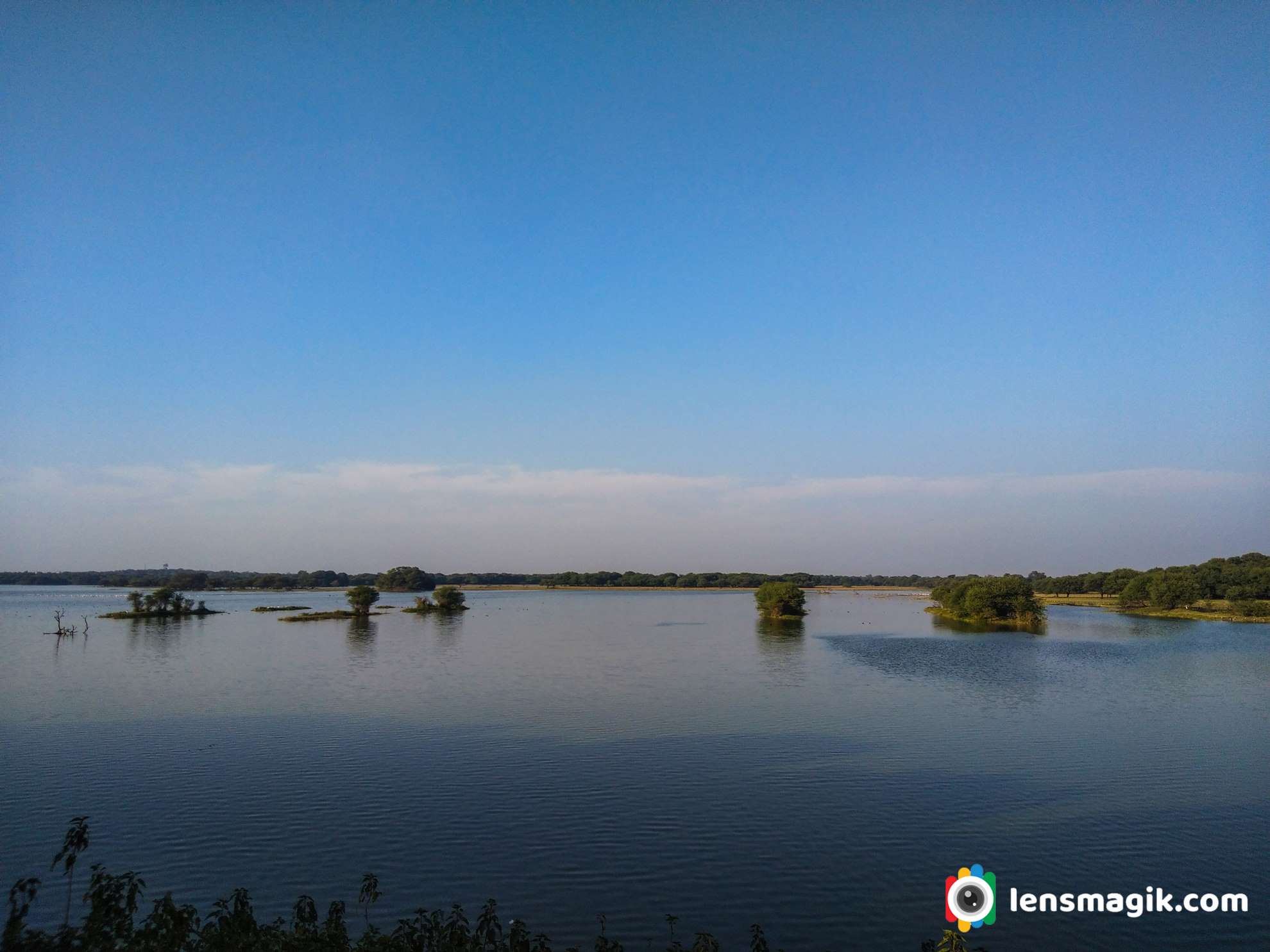
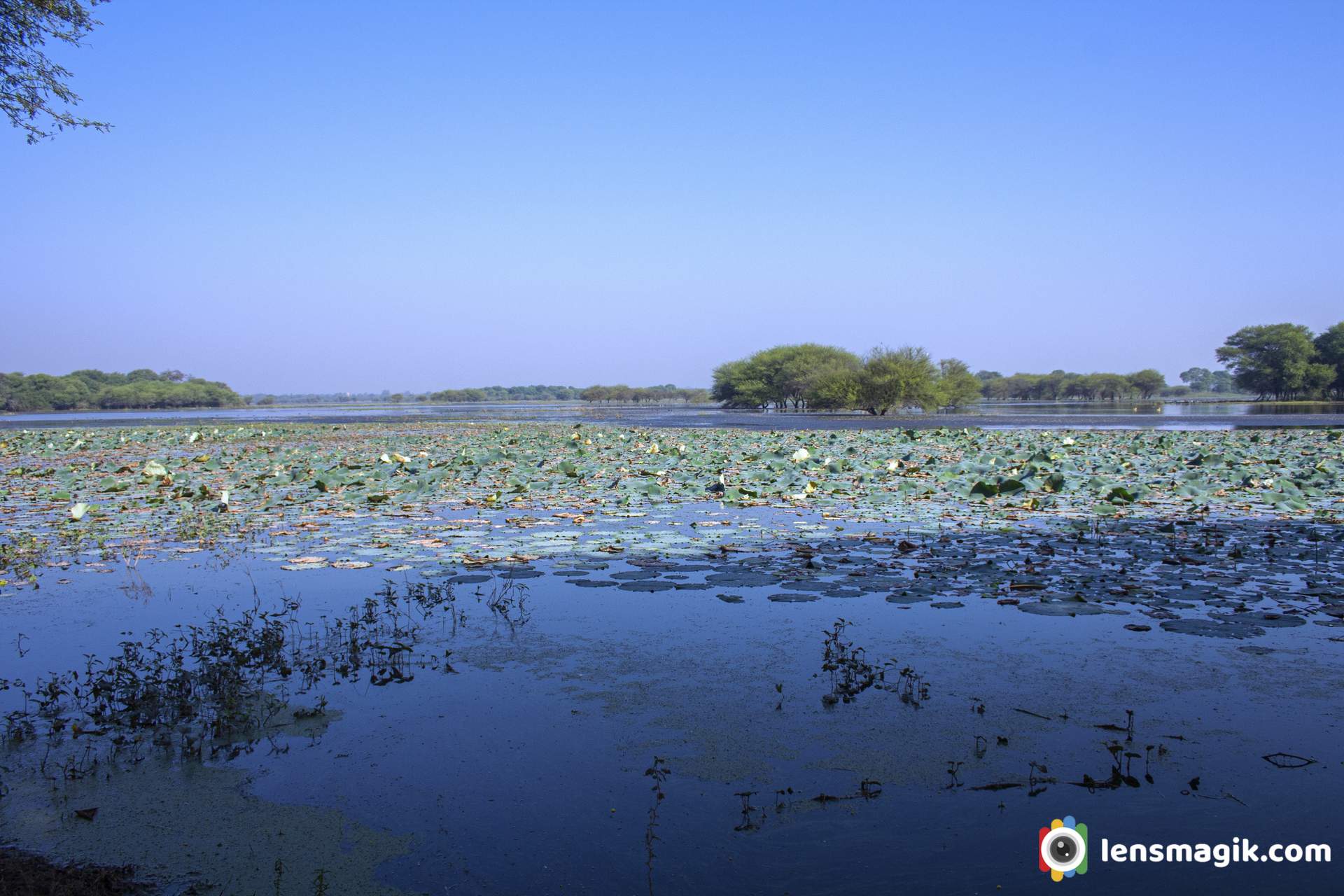
Thol Lake Timing and Fees :
Thol lake open everyday at 6 AM in morning and close at 5.30 PM in evening. Entry fees for Thol Lake or Thol sanctuary is 50 INR for per person. Also Camera fees extra at 200 INR and if you go via car then car fees also 500 INR. Foreigner fees are 10 $ per person.
Best Time to Visit Thol Sanctuary / Thol Lake :
Best time early morning for Thol Lake. In winter if you go before sunrise you can see Twilight sky amazing with lake shore and birds sound .During all season Thol lake has its own beauty. Every season you can visit at Thol Lake. But mostly during winter from November to March season is best for Thol Sanctuary visit. Because during winter lots of Migratory birds came here and stay for long time so for birding winter season is best at Thol Lake. Also during summer some of birds stays here like flamingos and pelicans, geese etc. So you can also see them in summer too. Also during summer water level of lake is low so may be the birds you can get in deep or sometimes closer. During monsoon most people don’t visit but if you like macro photography then you must visit Thol lake in monsoon. You can get some excellent macro subjects like waterdrops , Spiders, Insects etc.
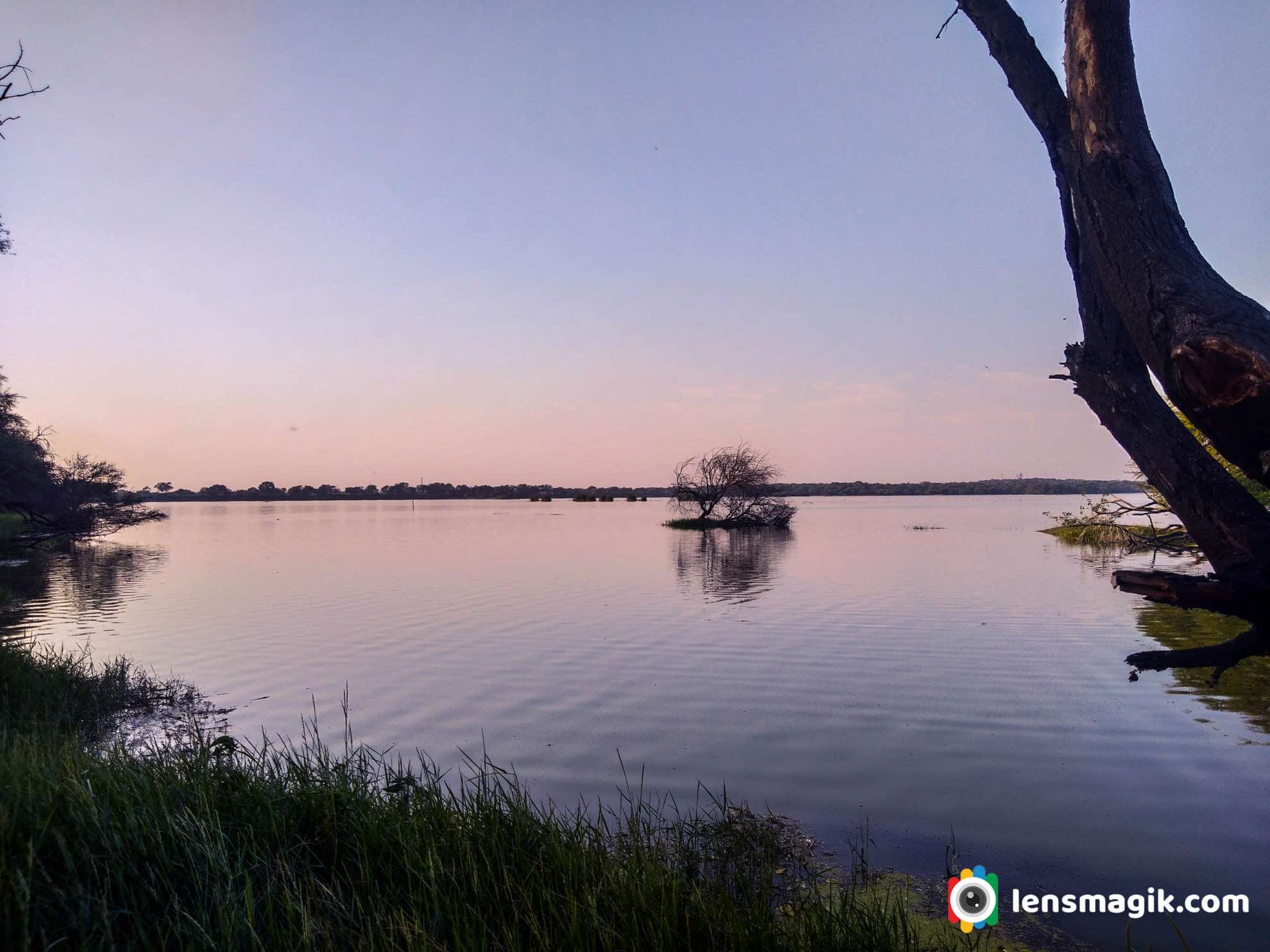
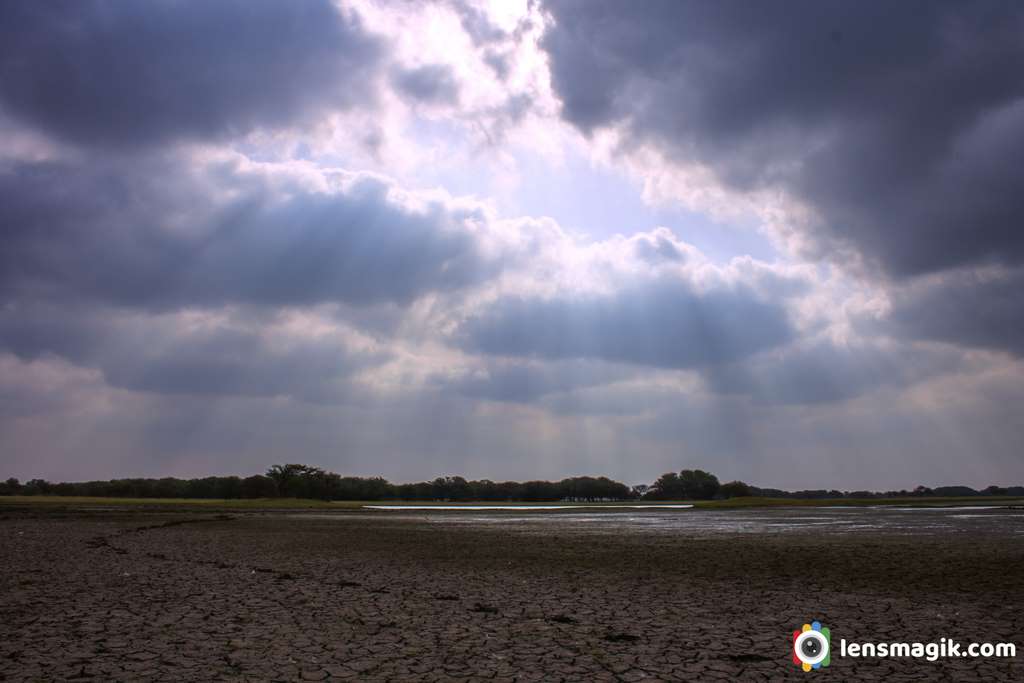
What to do and What not to do in Thol Lake / Keep in mind while visiting sanctuary in India :
• Keep silence in sanctuary
• Maintain discipline
• Keep sanctuary clean
• Do not throw plastic waste anywhere in sanctuary
• Protect wildlife
• Observe birds, mammals etc and protect them and identify them
• Follow rules of wildlife protection act -1972
• Don’t disturb birds and animals
• Don’t enter in sanctuary with liquor and inflammable objects
• Don’t make loud noice.
• Enter in sanctuary with permit only and keep receipt till you leave sanctuary
• Don’t feed birds and animals
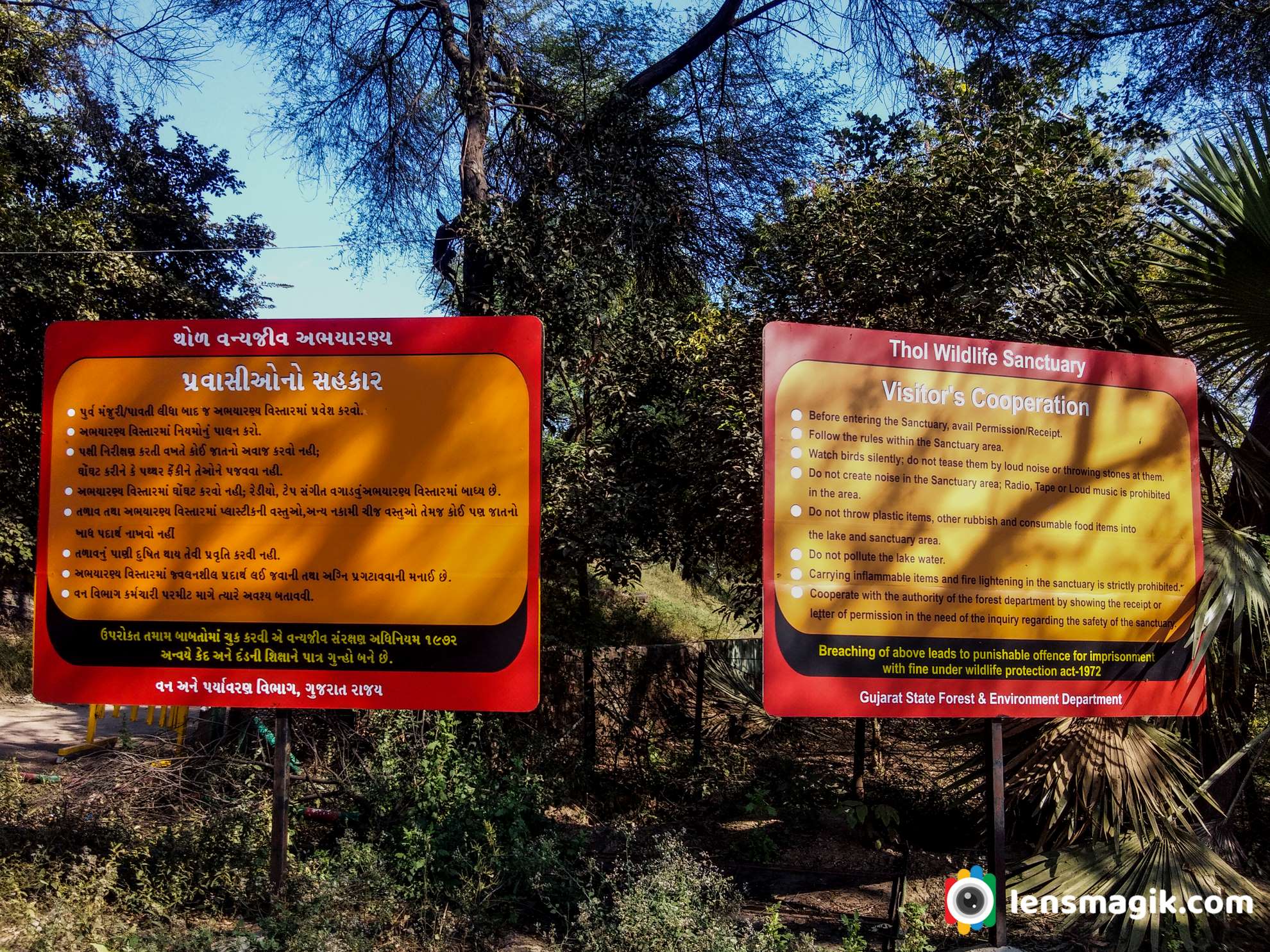
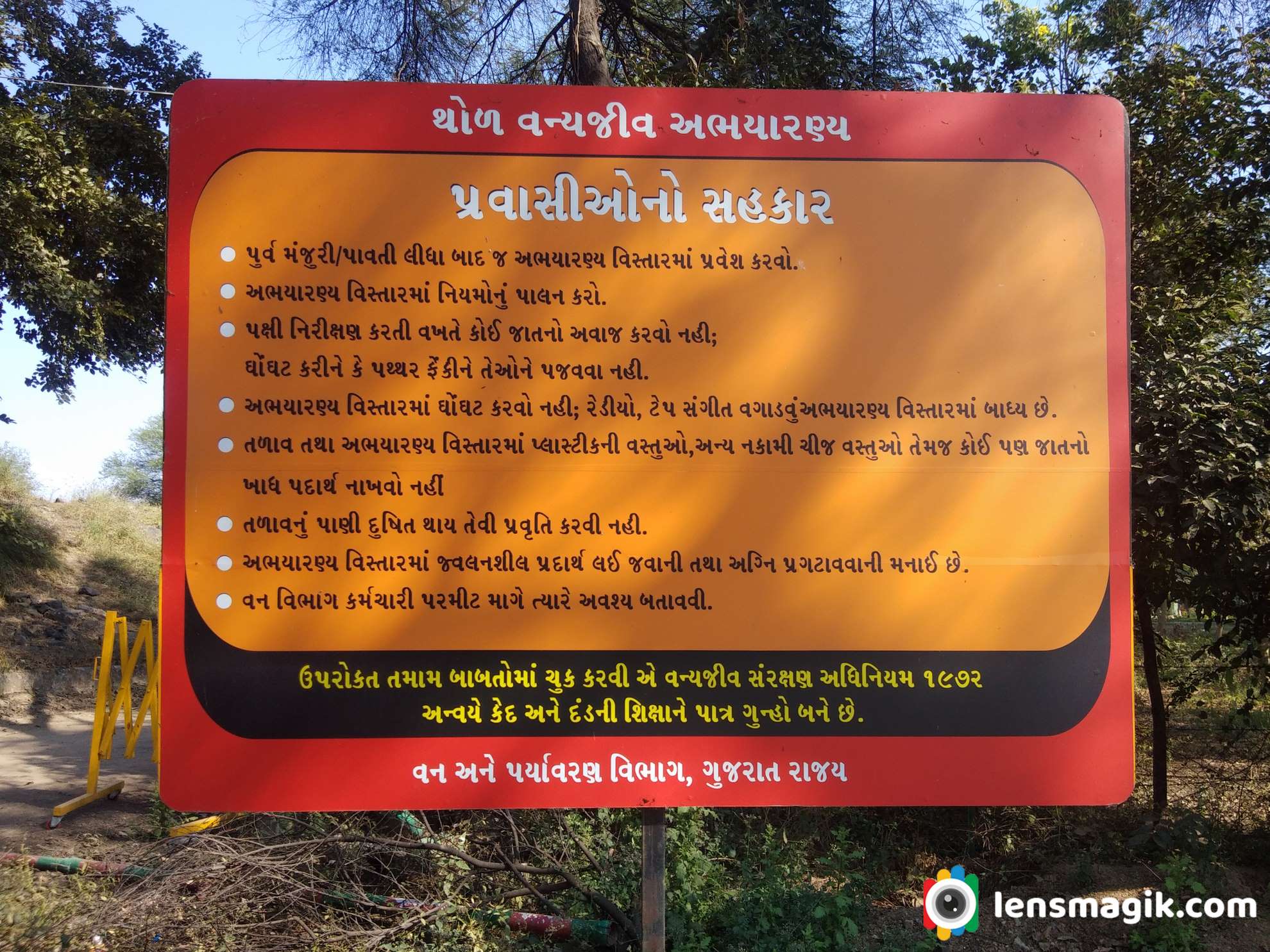
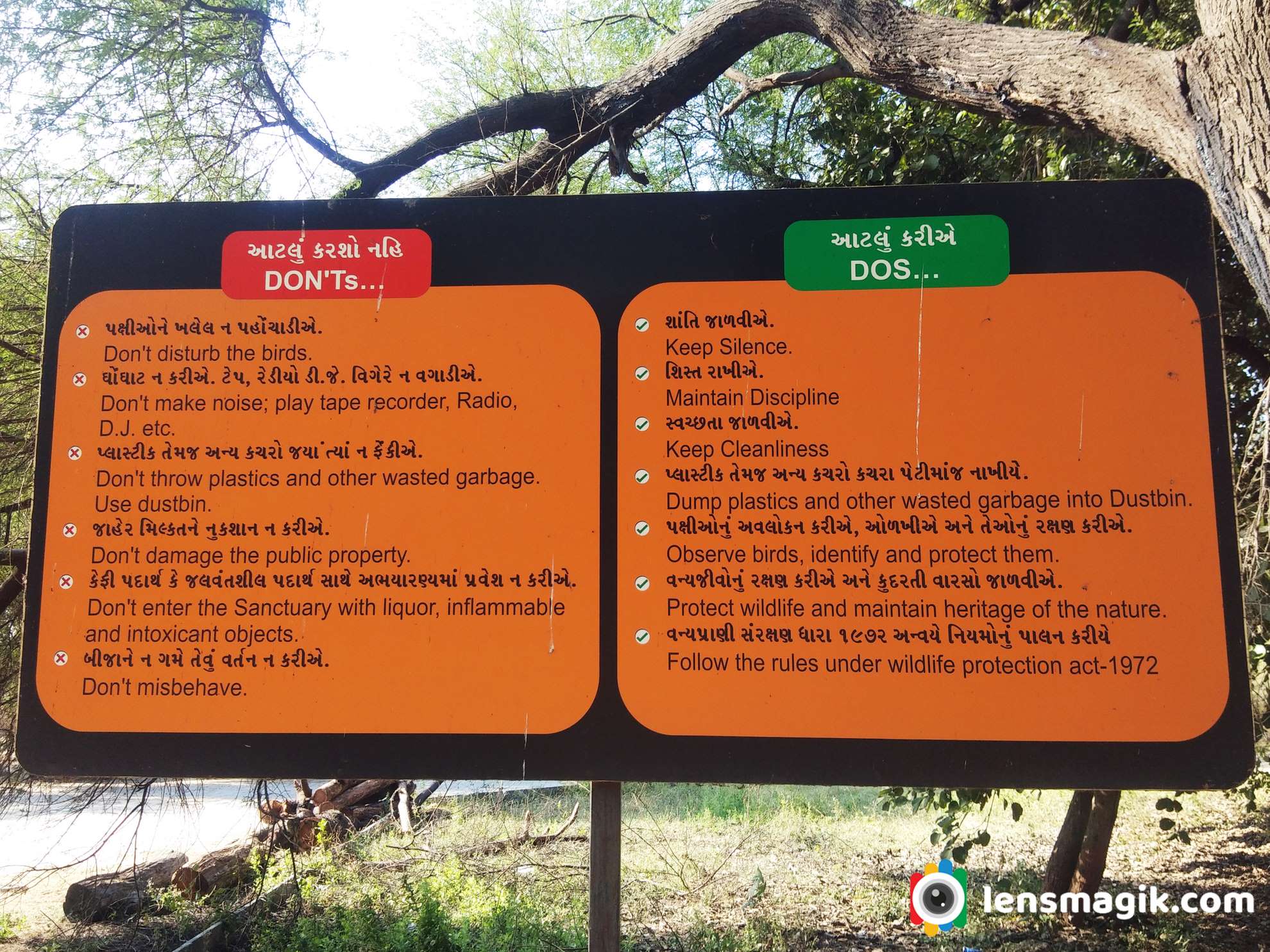
Where to Stay near Thol Lake :
Well near to Thol Lake there are not good places to stay at night but you can go near to destinations like Kadi, Kalol or Gandhinagar , Ahmedabad where you can get good places to stay at night. Nearest I suggest Kalol around 15-18 km or you can go Ahmedabad around 25 km.
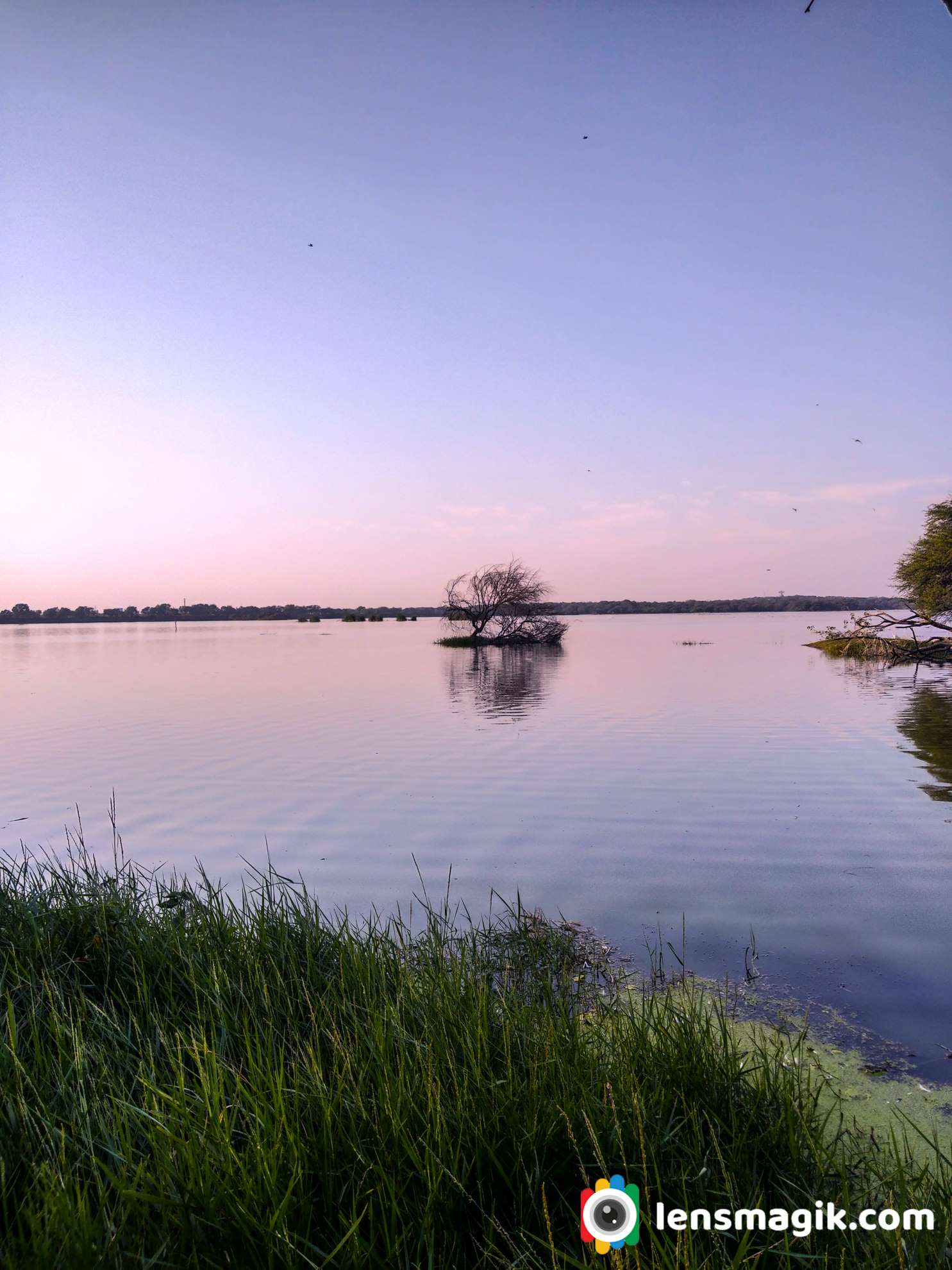

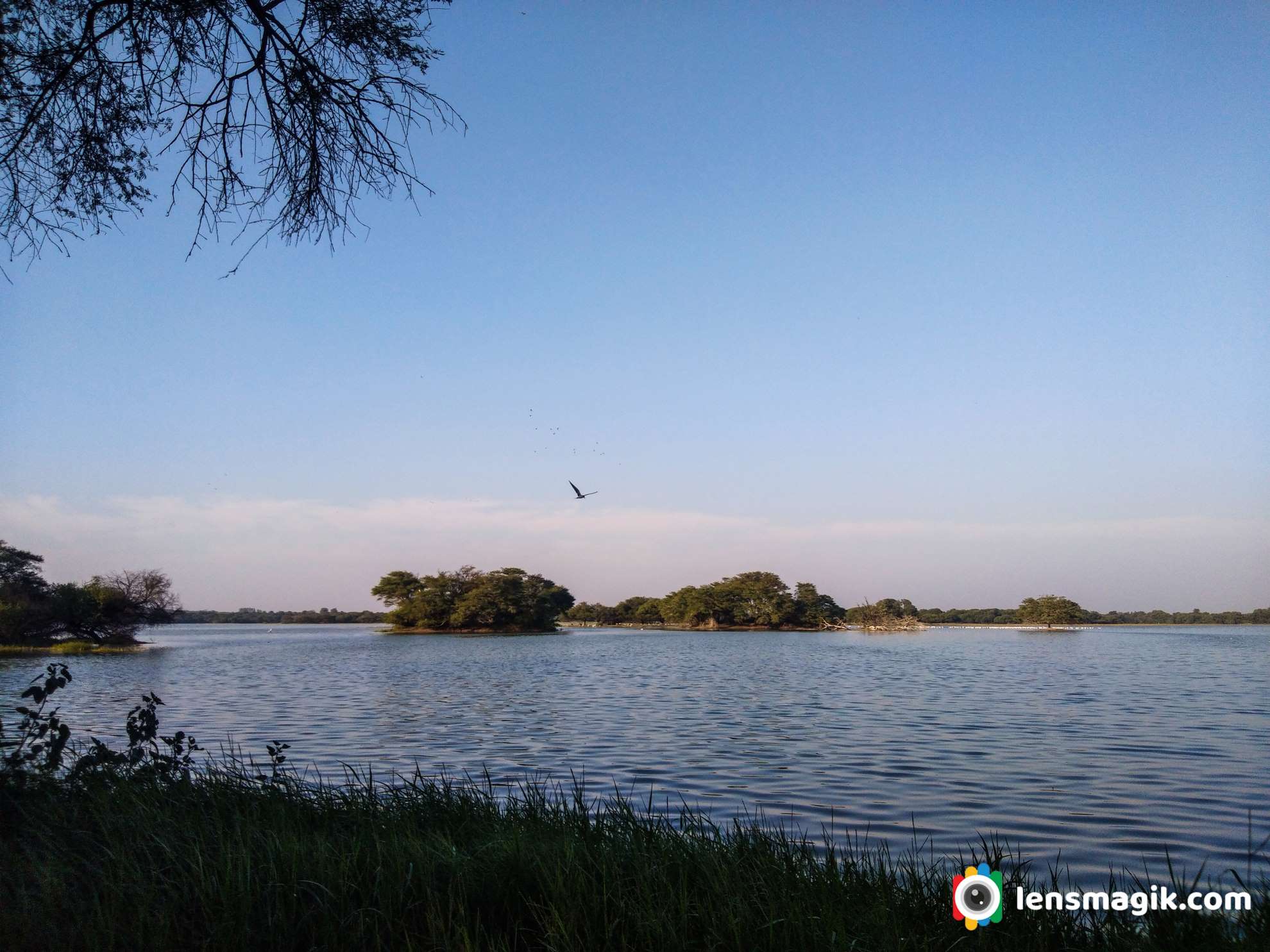


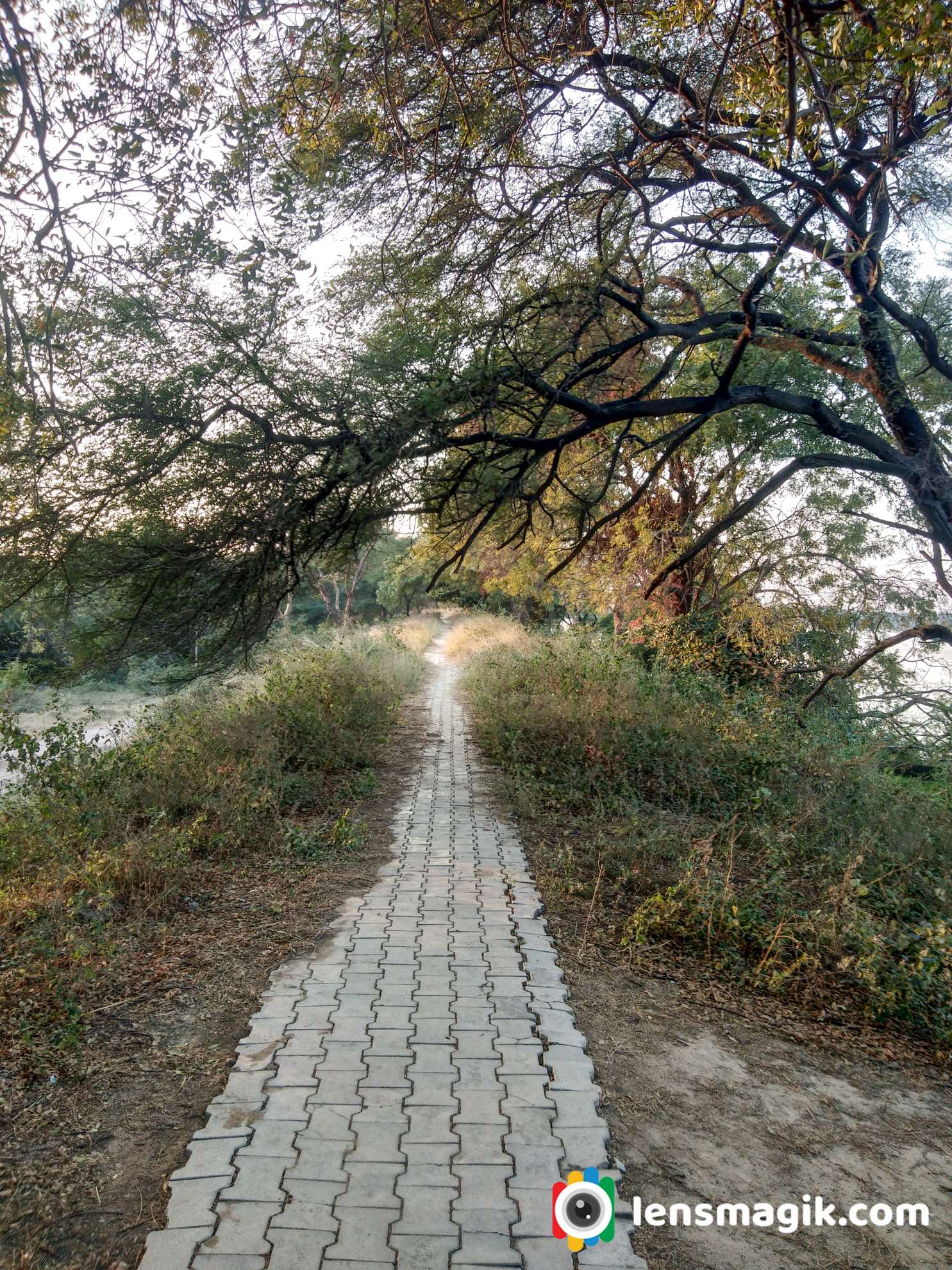
Places to Visit near Thol Lake :
If you are staying at Ahmedabad then go for Ahmedabad Darshan , Pol area of Ahmedabad and Adalaj Ni Vav ( Heritage places ) etc. Also go for fast food test at night at Manek Chauk and SindhuBhavan road there are lots of option for food lovers like Urban Chauk, Freezbee etc.
If you stay at Gandhinagar then visit Mahatma Mandir at Gandhinagar, Sarita udyan , Akshardham Temple etc.
I would suggest Modhera Sun Temple if you had some more time which is around 100km from Ahmedabad. For bird lovers and bird photographer I would suggest visit Little ran of Kutch (LRK) during Winter season, Pariej Lake, Indroda park Gandhinagar, Jessore Sanctuary Banaskantha etc.
How to Reach Thol Sanctuary :
Nearest airport is Ahmedabad and from Ahmedabad thol lake distance is around 30-40 km
Also for Railway station is Ahmedabad because you can get all frequency and destinations from Ahmedabad railway station.
Bahucharaji or Becharaji is located in Mehsana district Gujarat. It is a Hindu Temple of Hindu Goddess Bahuchara Mata.Bahucharaji Temple is in Bahucharaji town near shankhalpur village Mehsana. Bahucharaji Temple is in center of town. Bahucharaji temple managed by State Government. Ma Devi Bahucharaji is worshipped here as Goddess Bala Tripura Sundari.
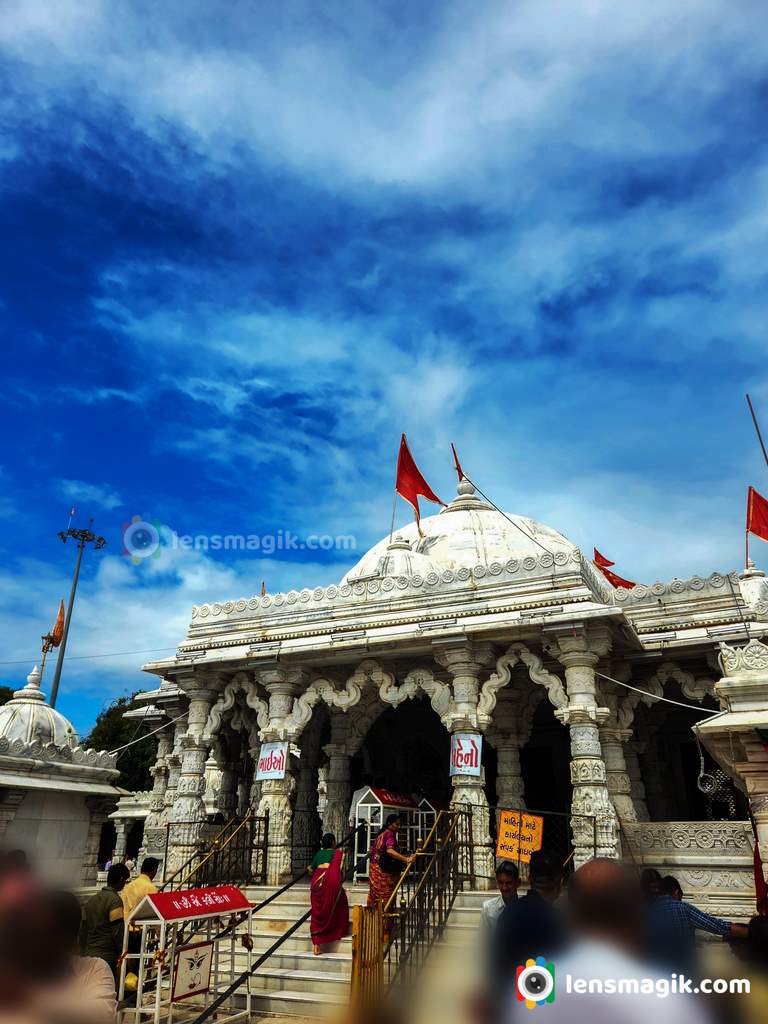
Story of Bahucharaji temple
As per old people says Dandasur demon was stayed near Becharaji and won Patallok, Mrutyulok and Devloka all three lokas. The Devil has boon from Lord Shiva that a godeess appeared against him in small girl form. All 3 lokas Devas went to Goddess Parambaa to save them from demon. The Bahuchar mata appeared in form of small girl for fist time at Varakhadi tree . So bahuchar mata known as Bala Bahuchara Mata. Goddess killed demon with Trishul and bought peace for people of earth.
- Main vehicle of Bahuchar Mata is cock.
- Bala Yantra of Crystle and encased In gold is worshipped at temple.
- Bahuchar Mata carries sward on top right hand, Abhay mudra on bottom right, a text of scriptures on top left and trident on bottom left.
- In my family we believed that new born male child first time hair removed ( Mundan ) after 1 year in temple.
- It is also believed that any new child don’t speak properly then bought here and on his behalf cock donated to Mata and in few days child can speak properly.
- All over from India devotee came here and pray for blessing of Goddess. On purnima ( full moon ) day is special for devotees. On Chaitri Poonam 5 days fair arranged near the Temple and in city.
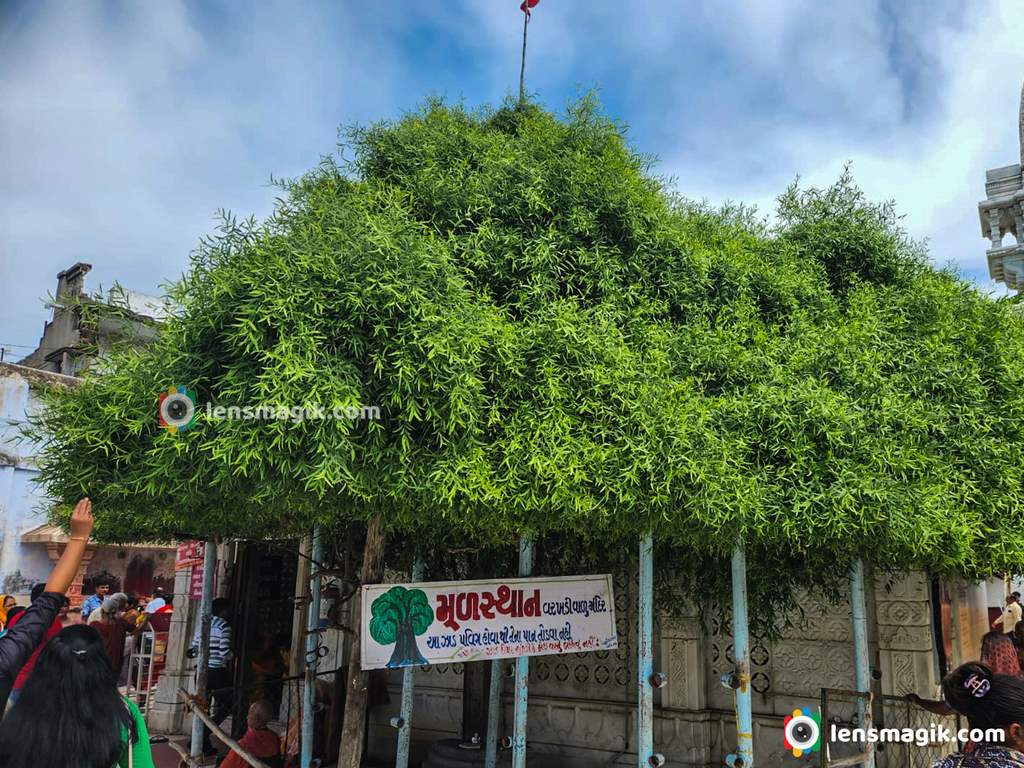
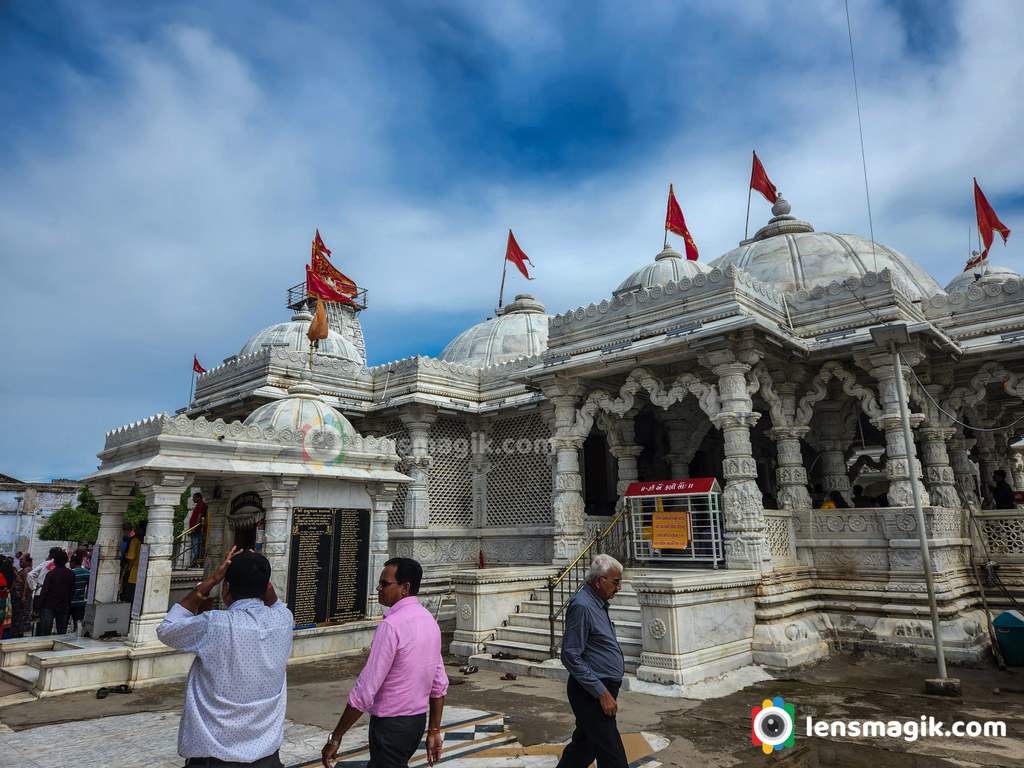
Where to Stay in Bahucharaji or Bechraji :
There are lots of Dharamshala , Hotels, Guest Houses in Bahucharaji. All places are in good rate available. People can also go to Mehsana , Shankhalpur for stay . Also people can go to Modhera Sun Temple for visit.
Bahucharaji Mata Temple Darshan Timing :
Bahucharaji Mata temple darshan timing is from 5.30 AM to 10 PM .
Nearest Airport : Ahmedabad
District : Mehsana
Pincode of Bechraji : 384213